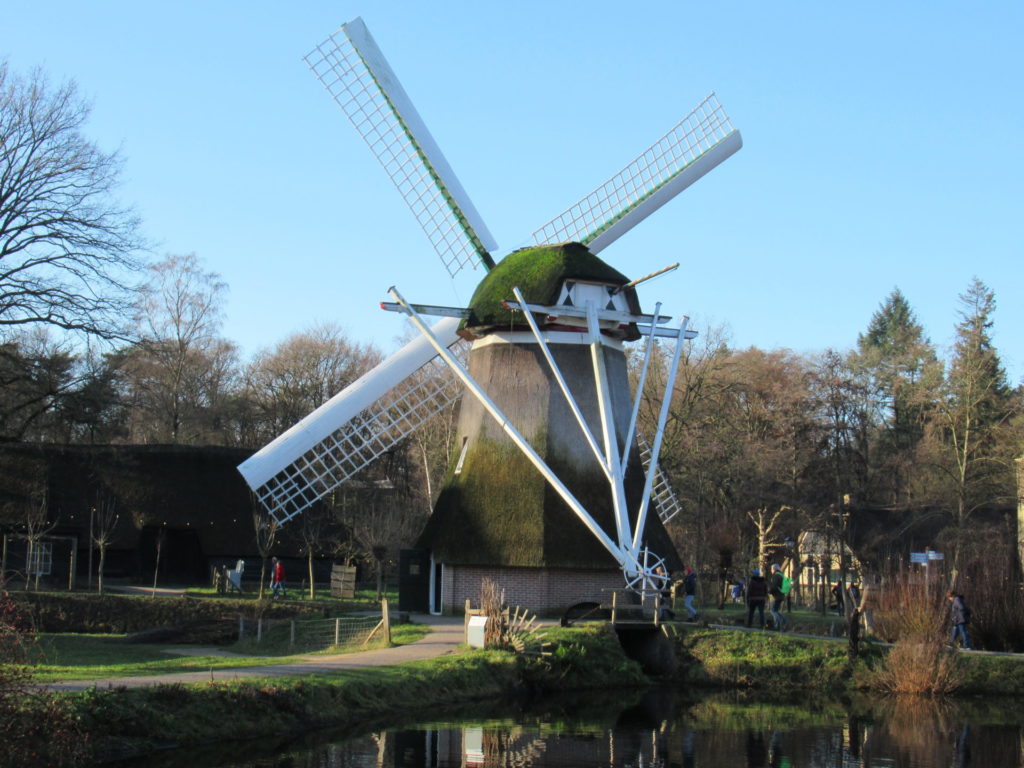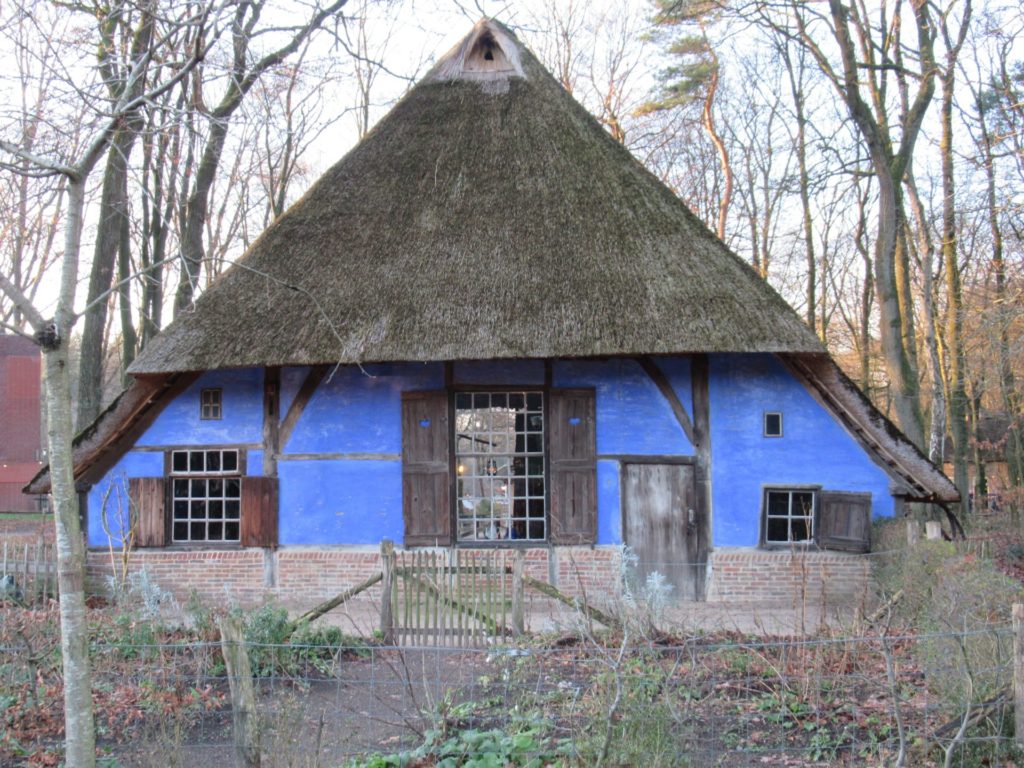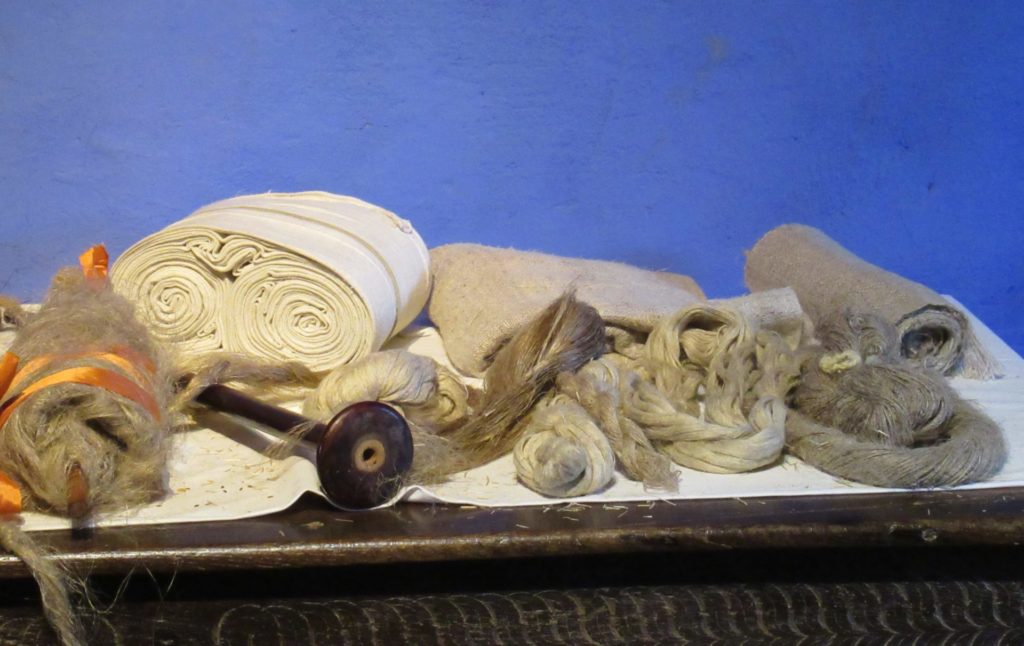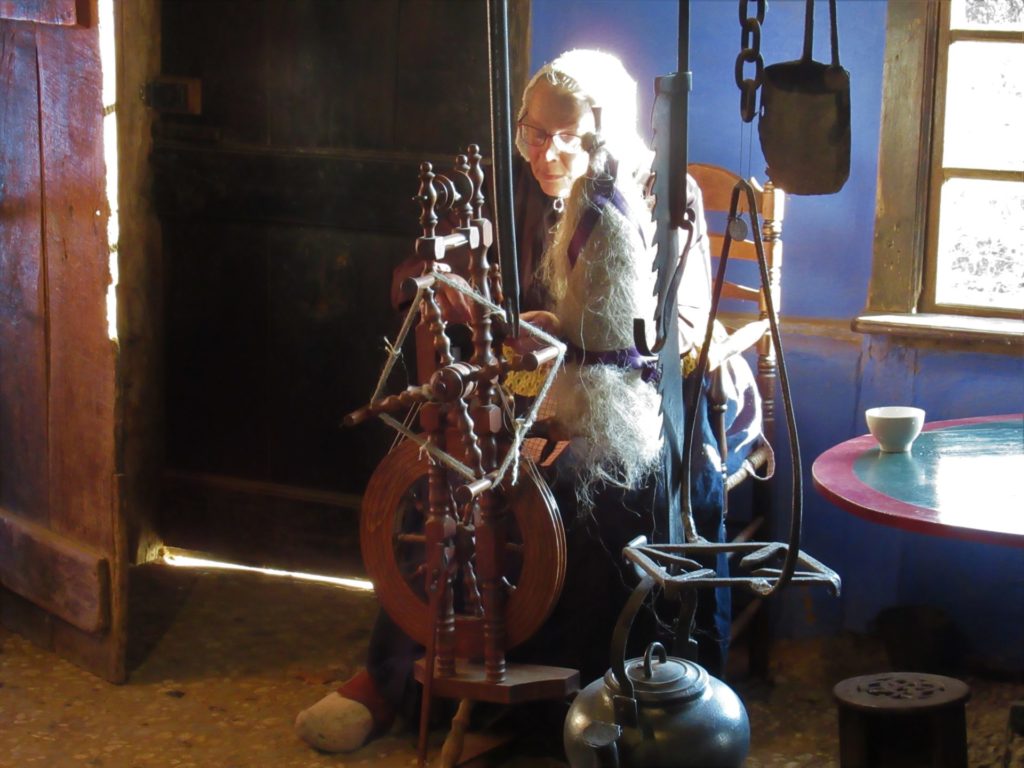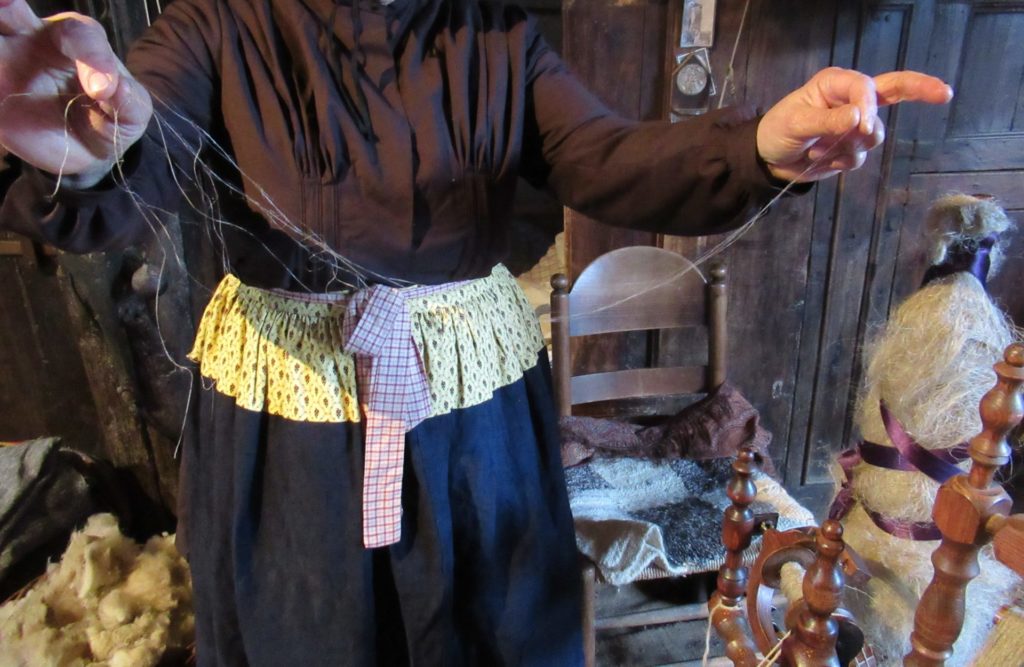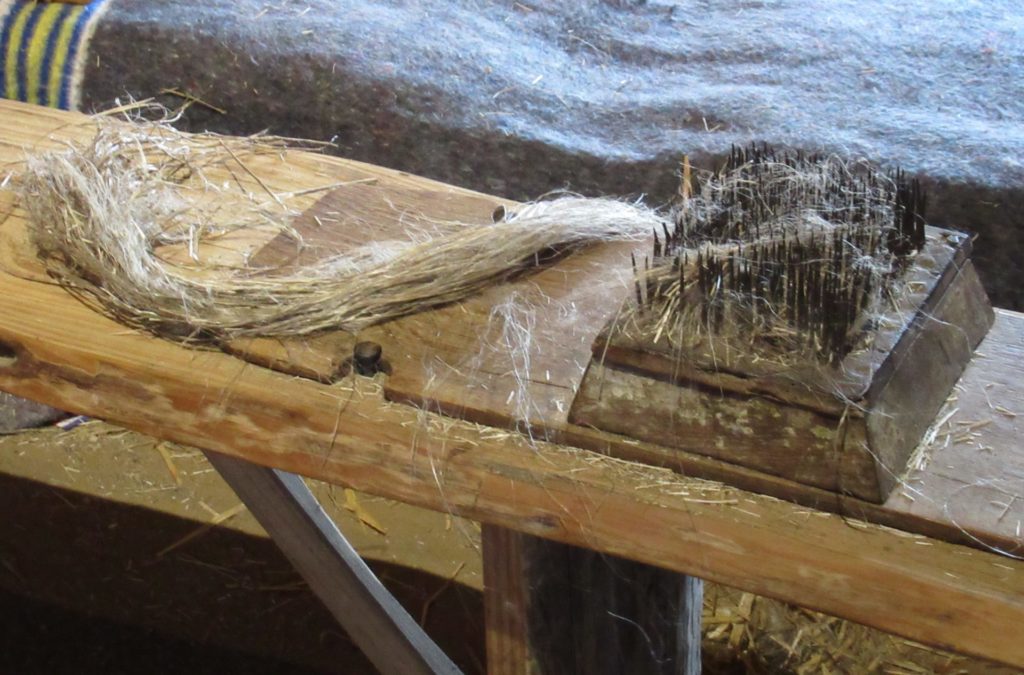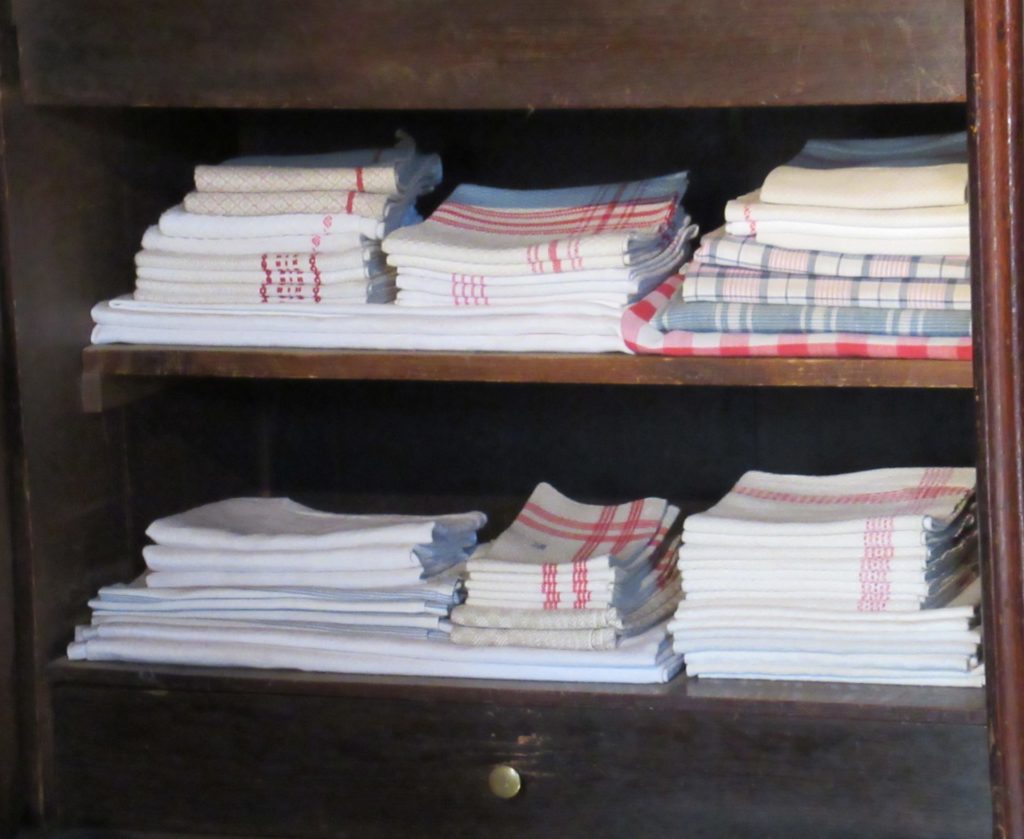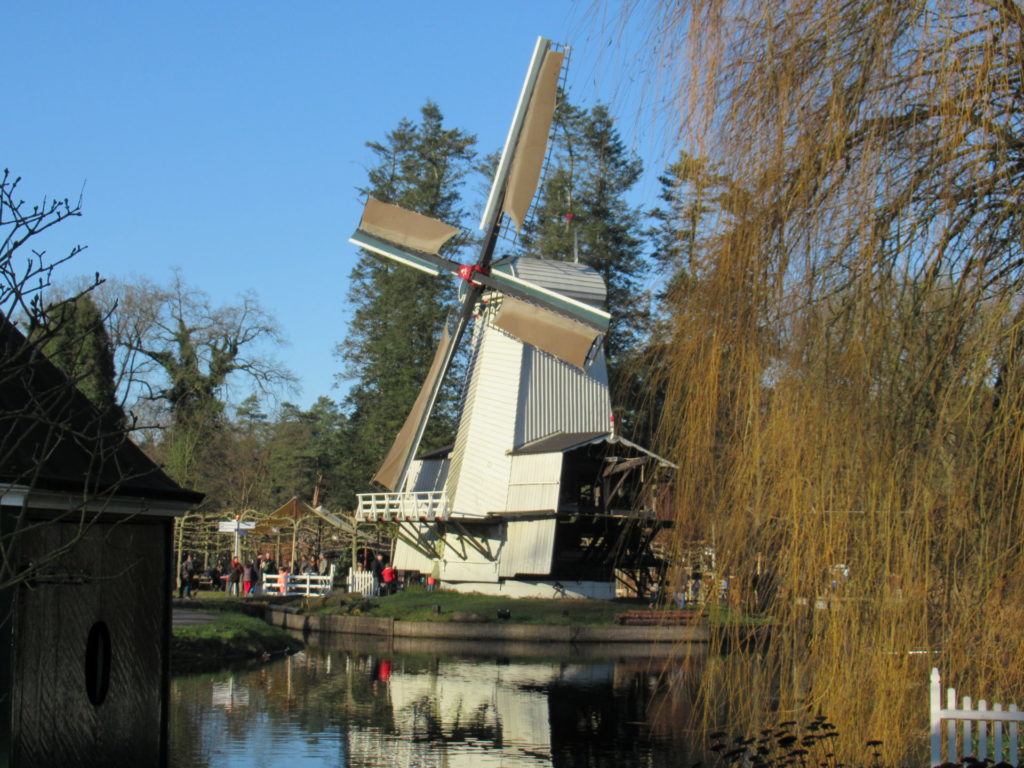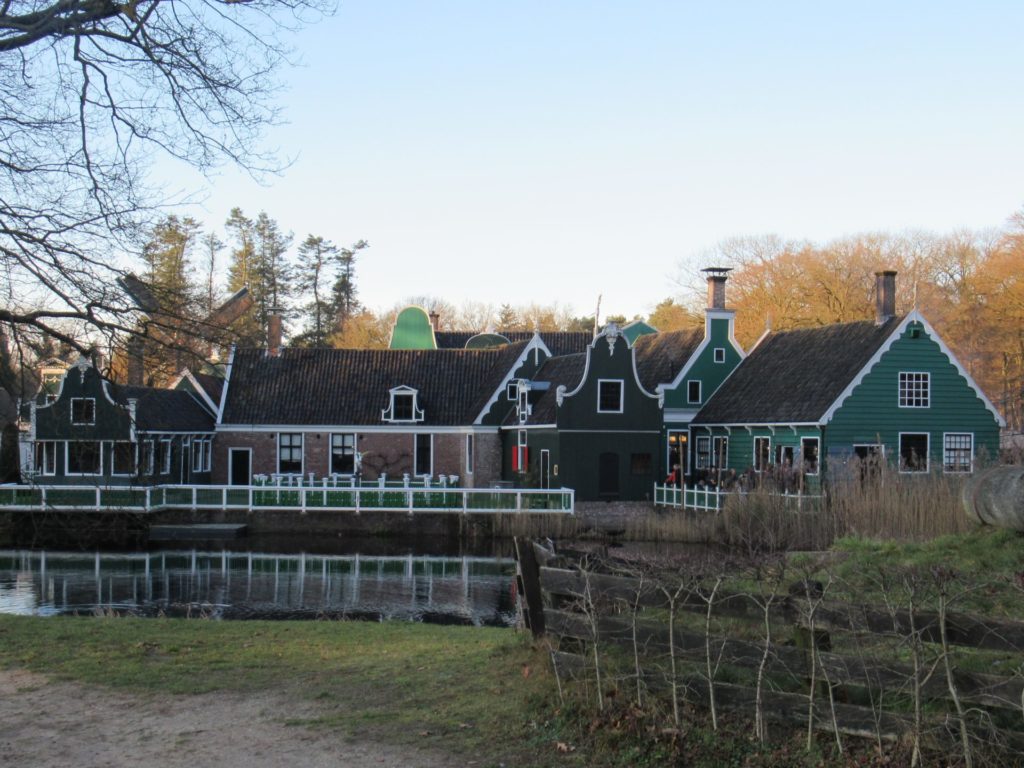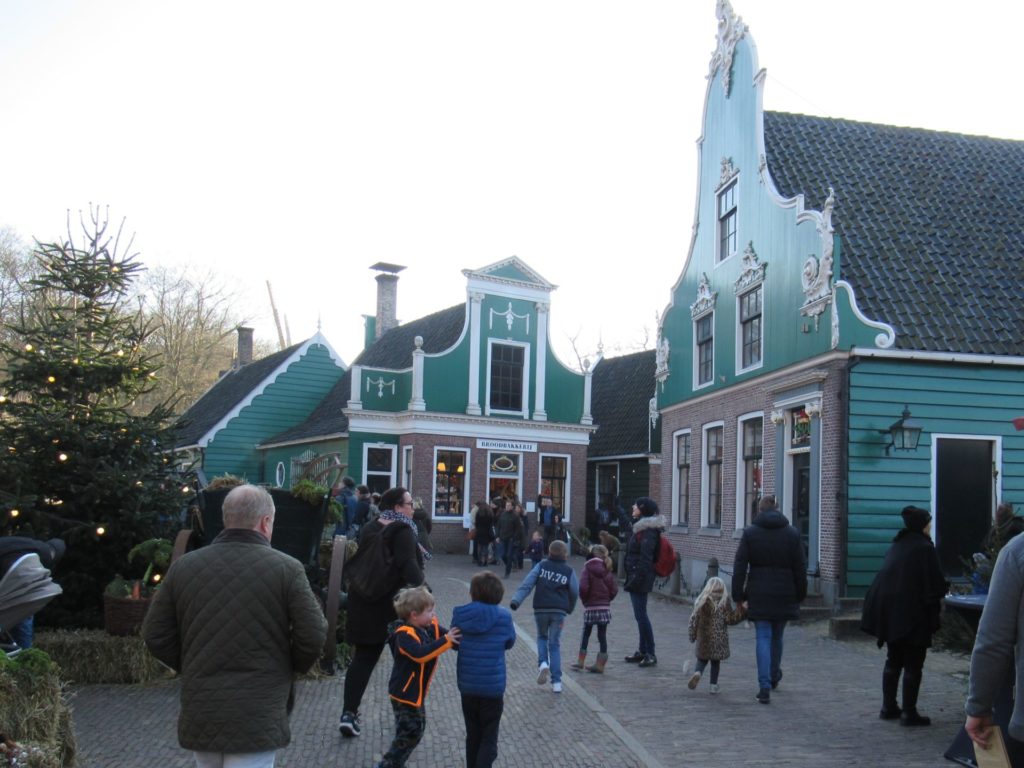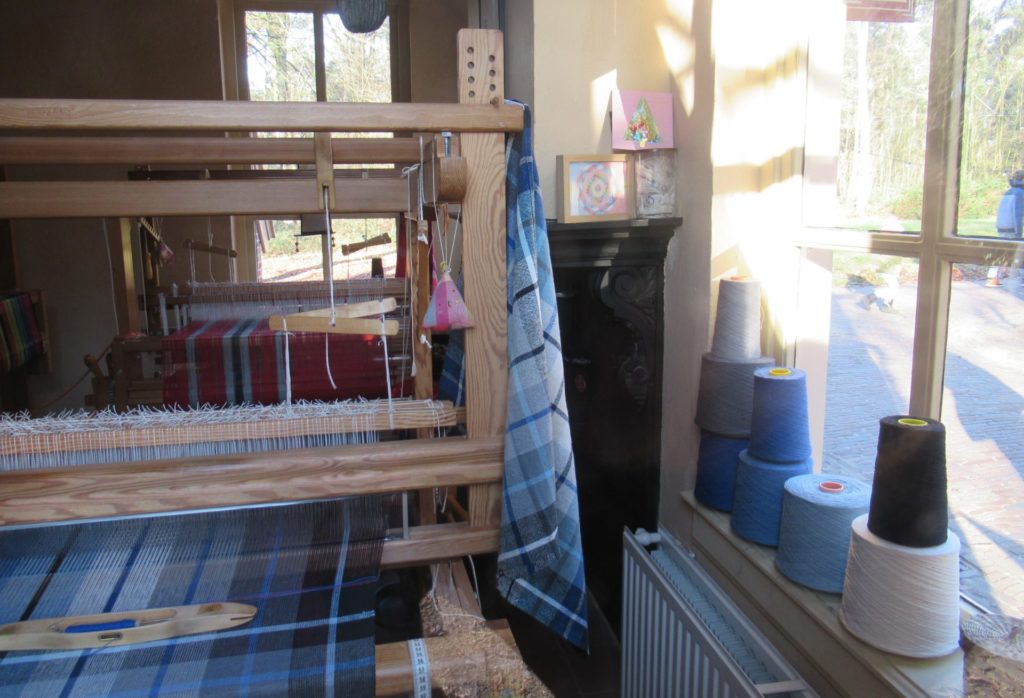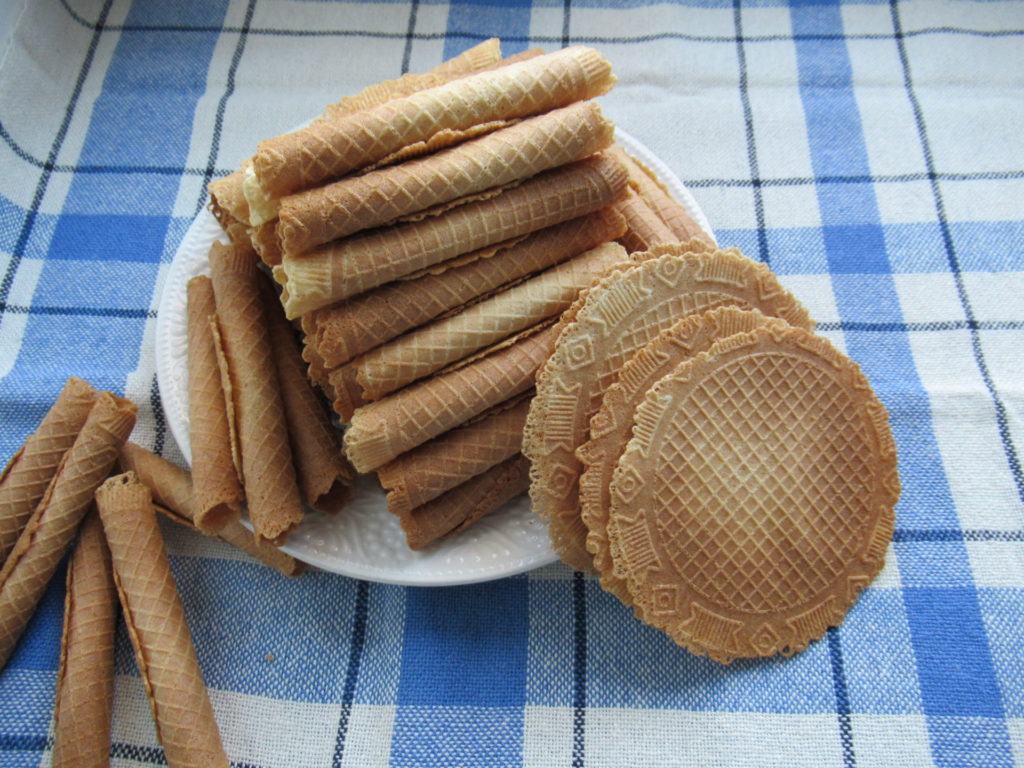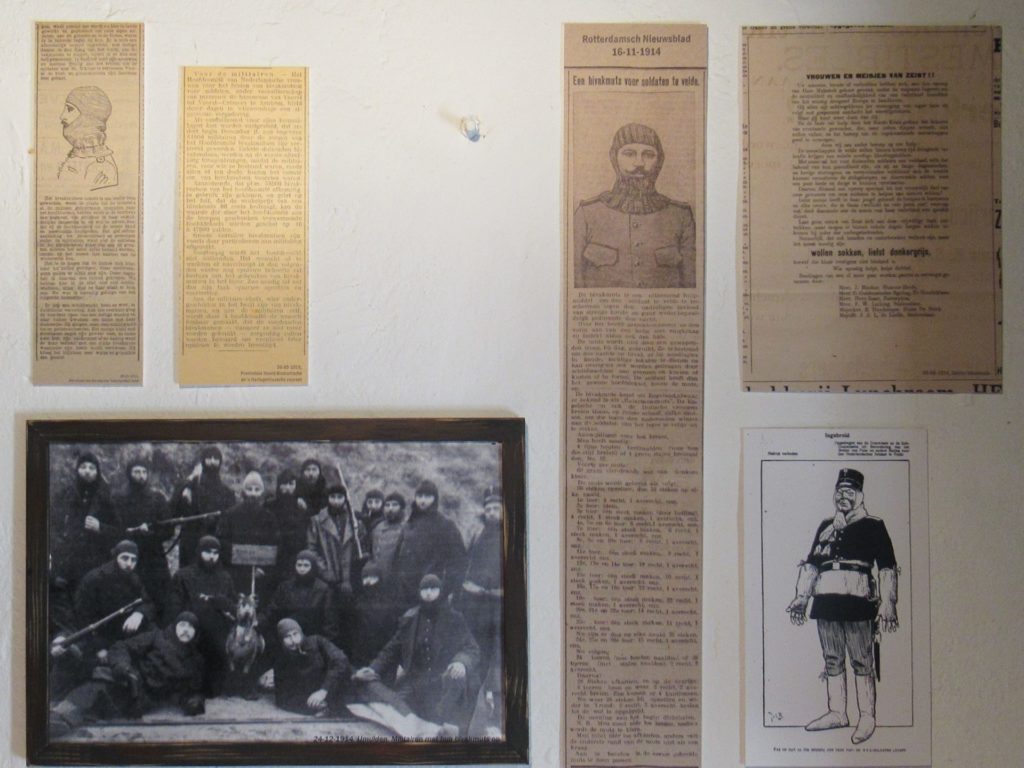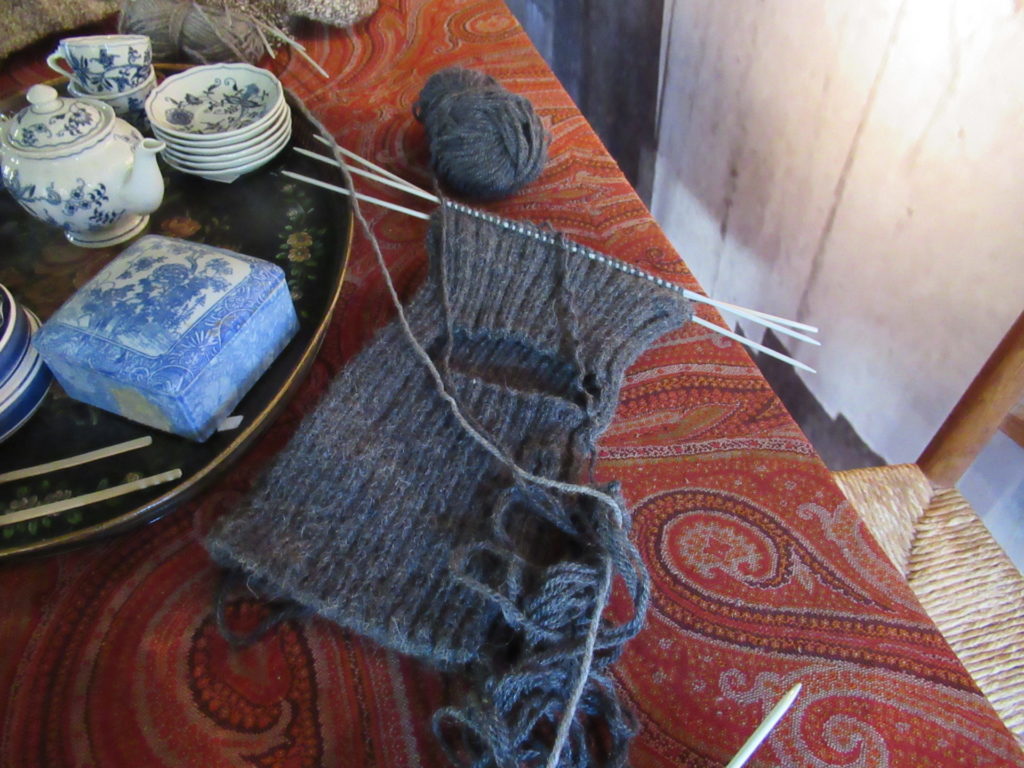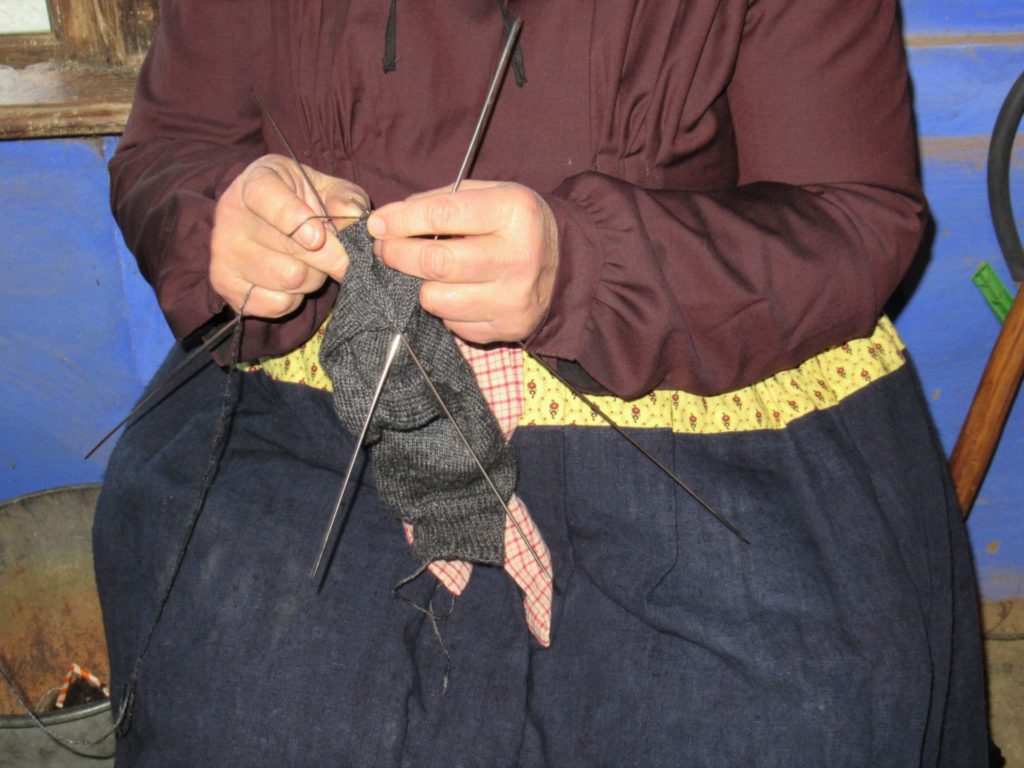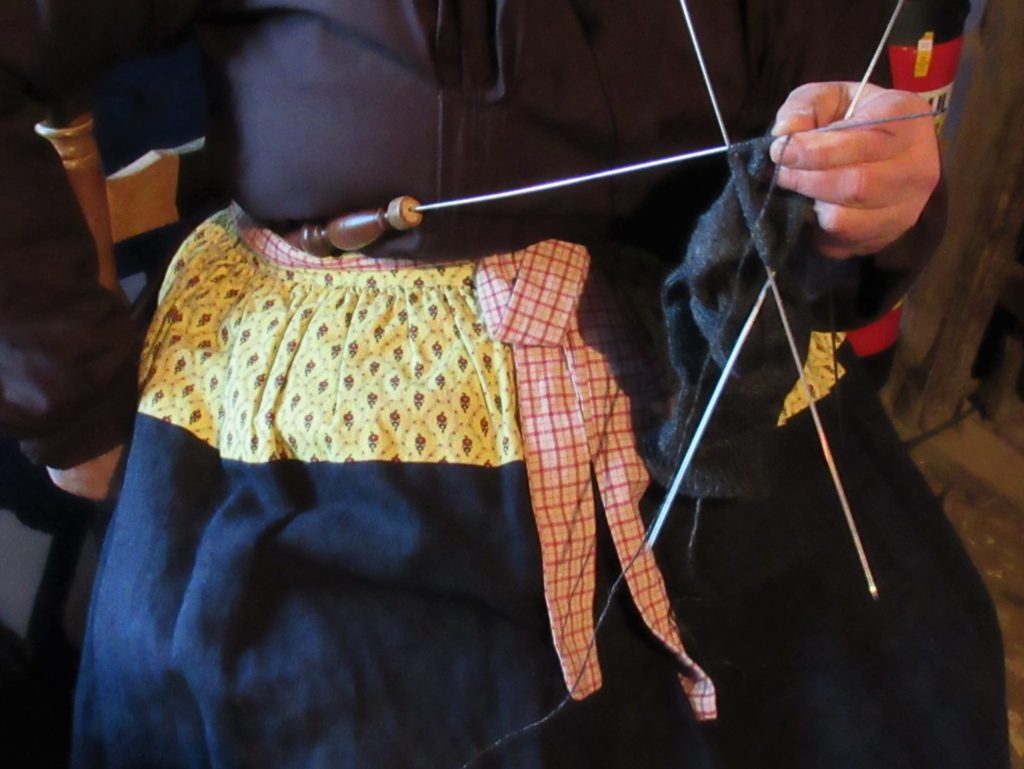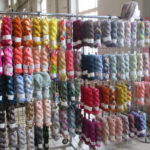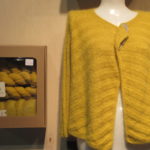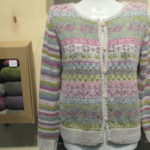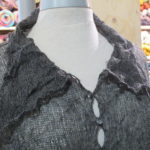Out and About
An Afternoon in Antwerp
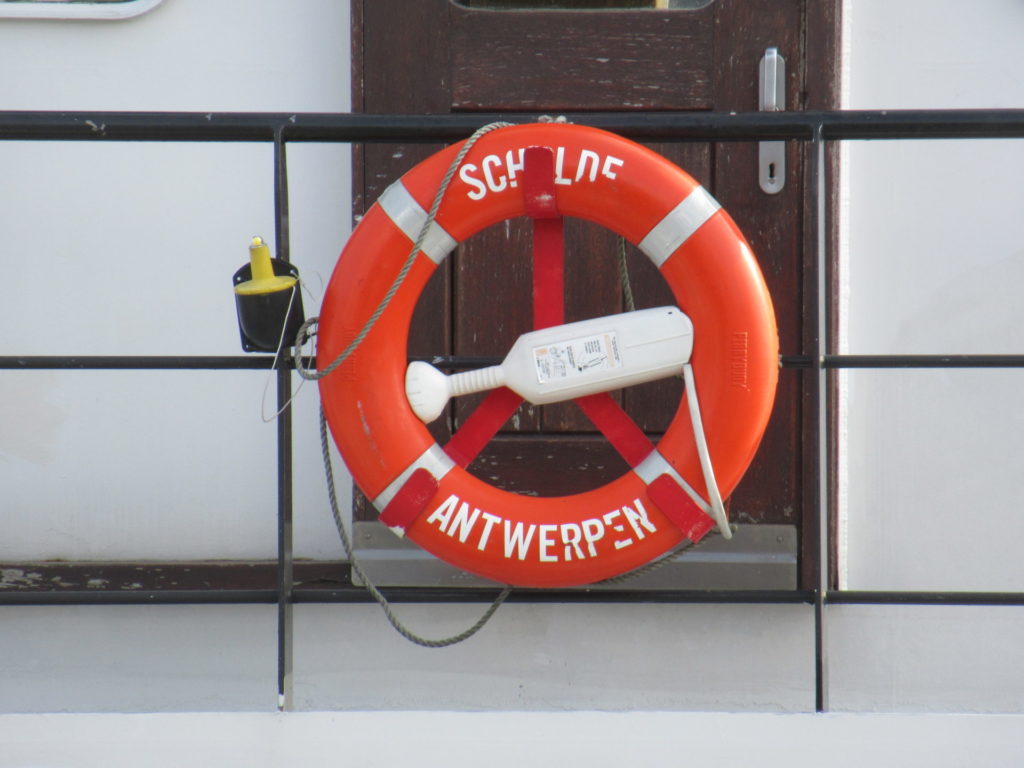
Friends of ours live near the Belgian border. That’s not exactly around the corner from where we live, and we don’t see them as often as we’d like. So, when my husband was asked to give a talk in Antwerp, we decided to drive down together and invited ourselves to a meal at their place afterwards.
This meant that I had an entire afternoon to spend as I liked in a city I had only been to once, years ago. I wanted to spend my precious time well, and planned my route carefully beforehand to include some sightseeing and some shopping.
I was dropped off on the left bank of the river Scheldt and took the ferry across to the city centre.
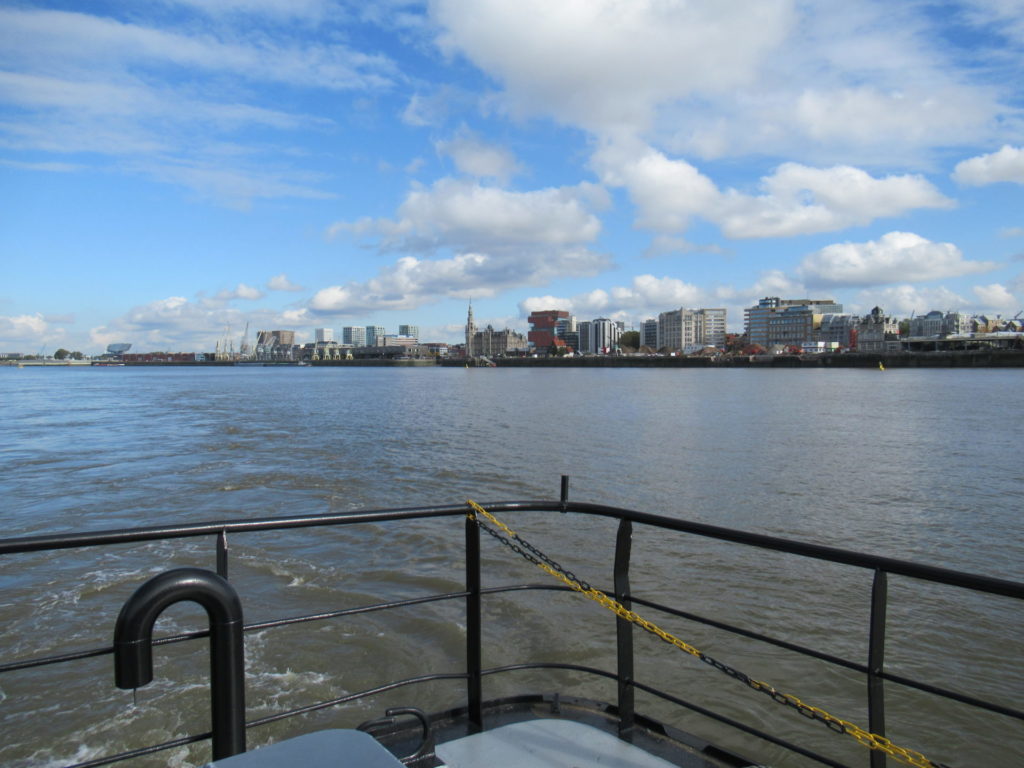
The ferry ride, even if it lasted only 15 minutes, immediately gave me a feeling of freedom and being on a holiday. From the water, I had a lovely view of Antwerp’s skyline, with its mixture of old and modern buildings.
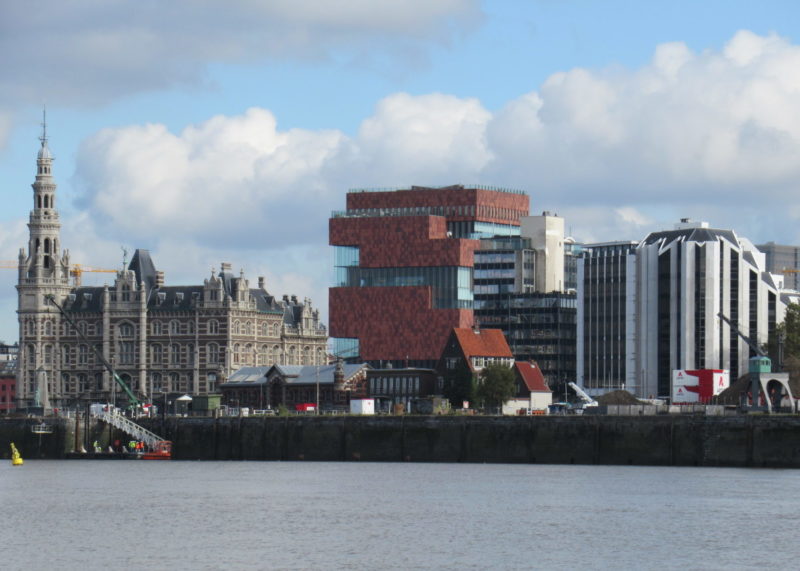
My first port of call was the Grote Markt, the market square with its tall and impressive guild halls. They speak of incredible wealth. Flanders once had a booming woollen cloth industry, but I think that had declined before these guild halls were built. I know very little about Belgian history, to be honest, and have no idea where all the wealth on display here came from, but I have a feeling that it cannot all have been fair trade.
The gables are adorned with ‘golden’ sculptures. I don’t suppose they really are made of gold, but they aren’t brass either, or somebody will have to climb up and polish them once a week.
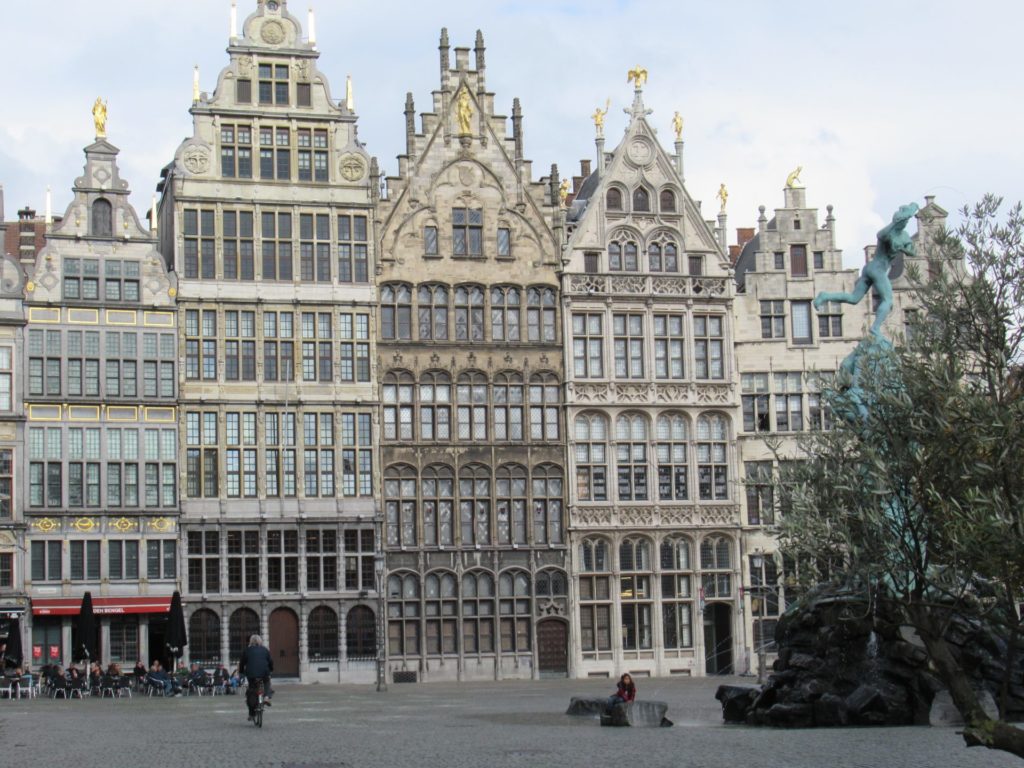
High up on one of the gables, a beautiful golden galleon was sailing through the clouds.

Leaving the market square behind, I strolled through the surrounding streets and bought some of those famous Belgian chocolates for my loved ones.
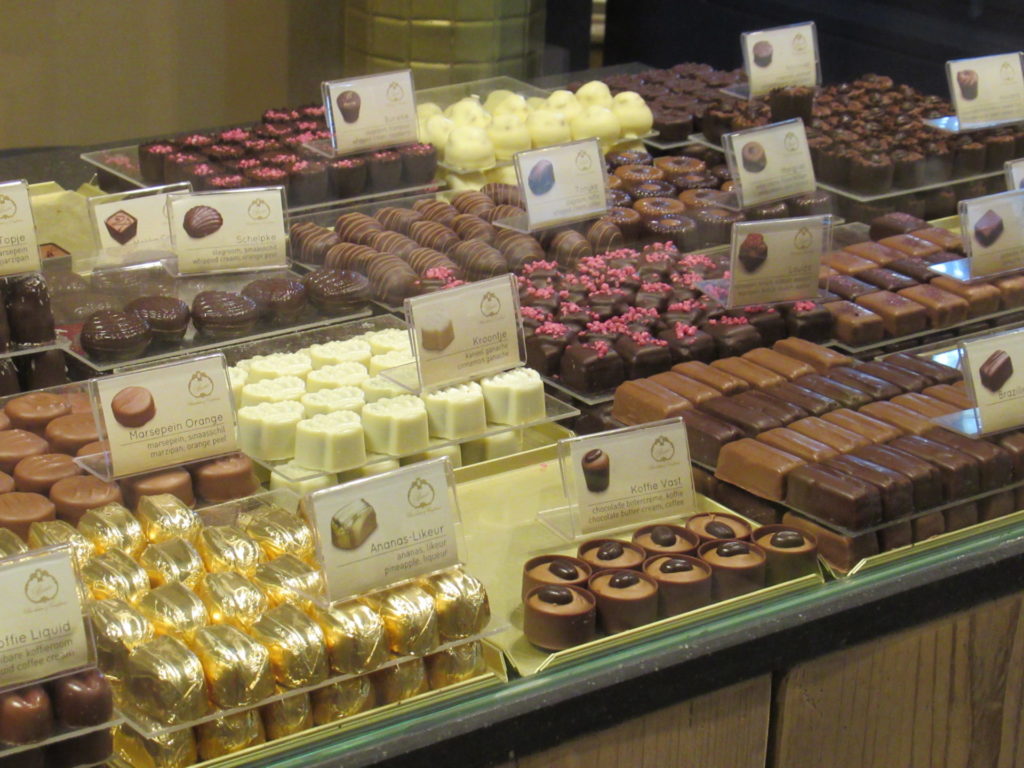
Having crossed off the most important thing on my list of things to do, I went in search of the Vlaeykensgang. I’d read about this historic alley and had located it on the map, but still had some difficulty finding it. The entrances are so narrow and inconspicuous that I’d walked past one of them several times without recognizing it as an entrance.
I’m glad that I didn’t give up, because it’s a really, really special place.
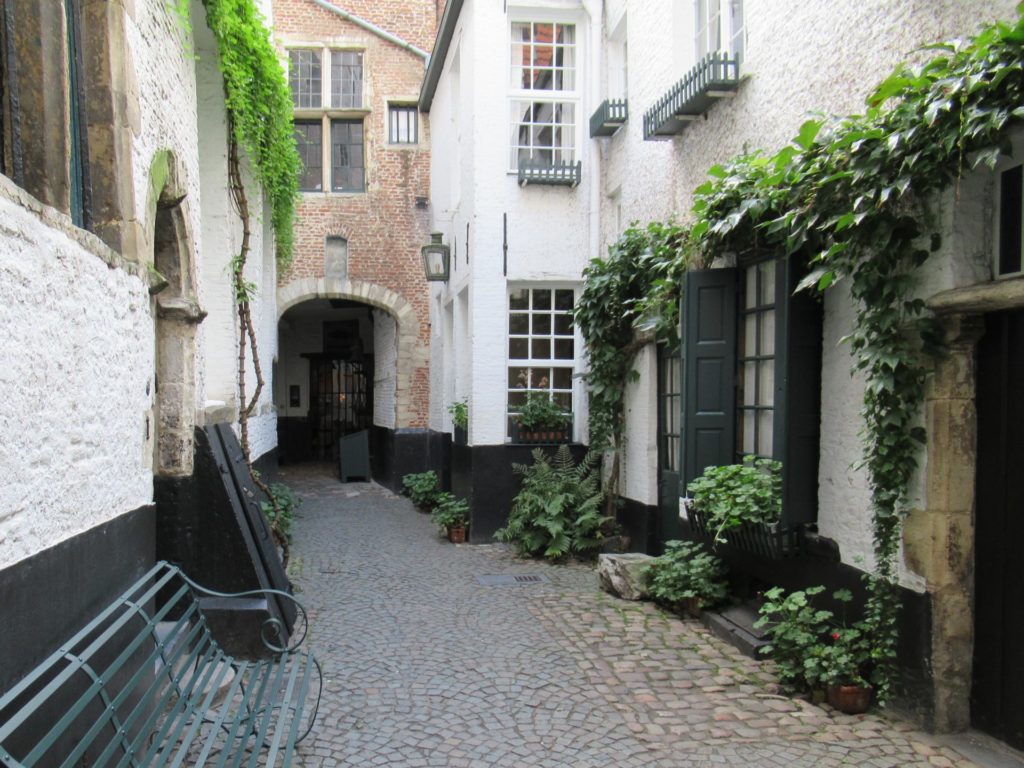
A restaurant in one of the buildings looked very inviting, with flowering plants on the window sills and the warm glow of candles inside.
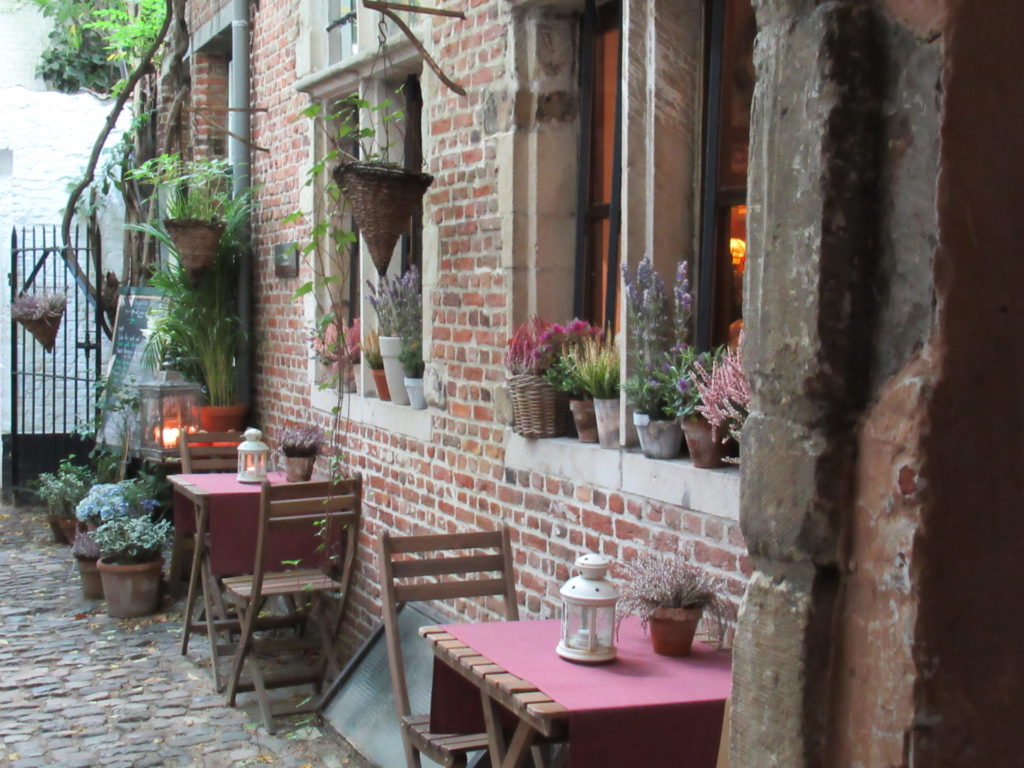
But my time was limited and there was more on my list of things to do, so I walked on to Julija’s shop. Julija sells fabrics and yarns, some of which she dyes herself, like this tweed yarn.
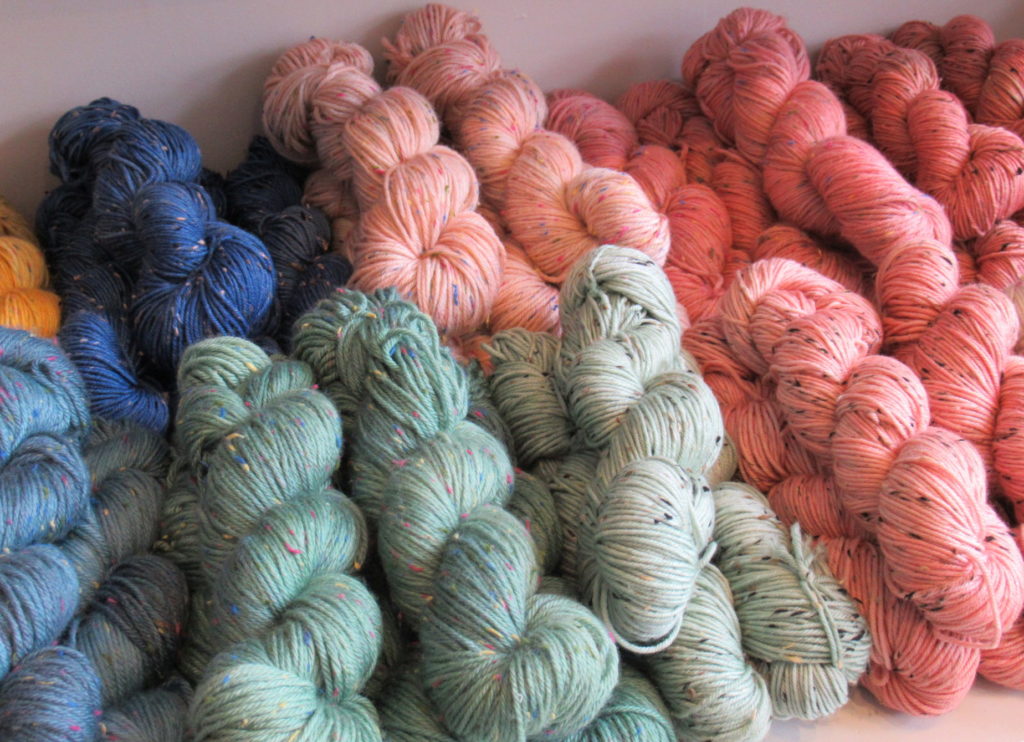
She is best known for her knitting patterns for young children and their mums, though. She has published four ‘real’ books and many small booklets she calls magazines.
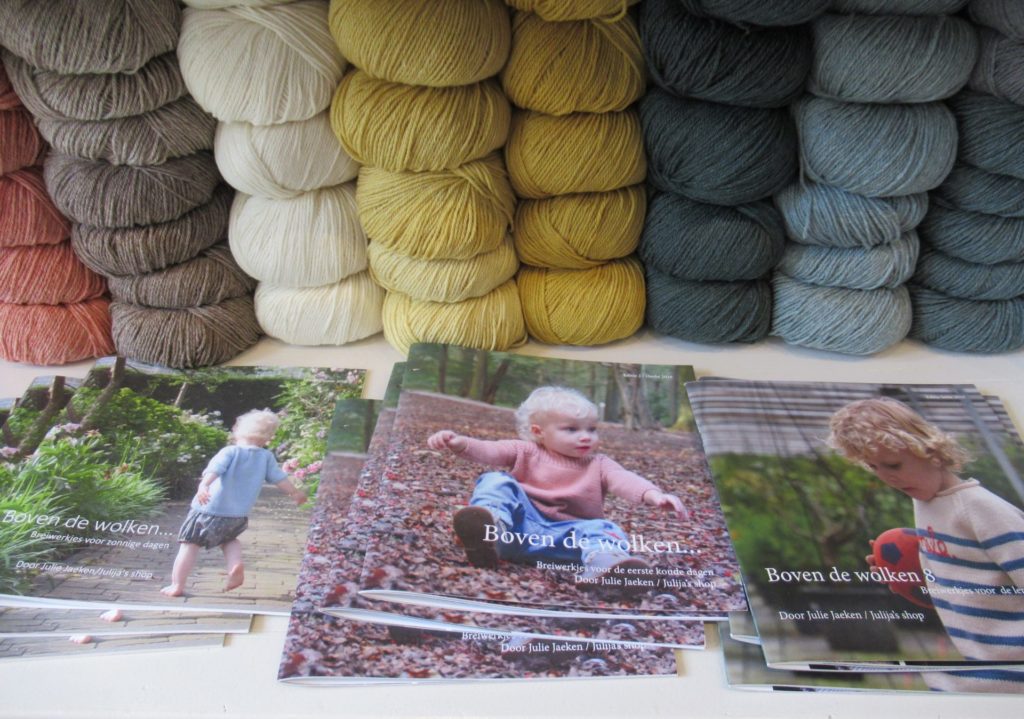
Julijas patterns are easy to knit and make me wish that I had some small people to knit for. I mean, look, isn’t this simple garter stitch cardi adorable?
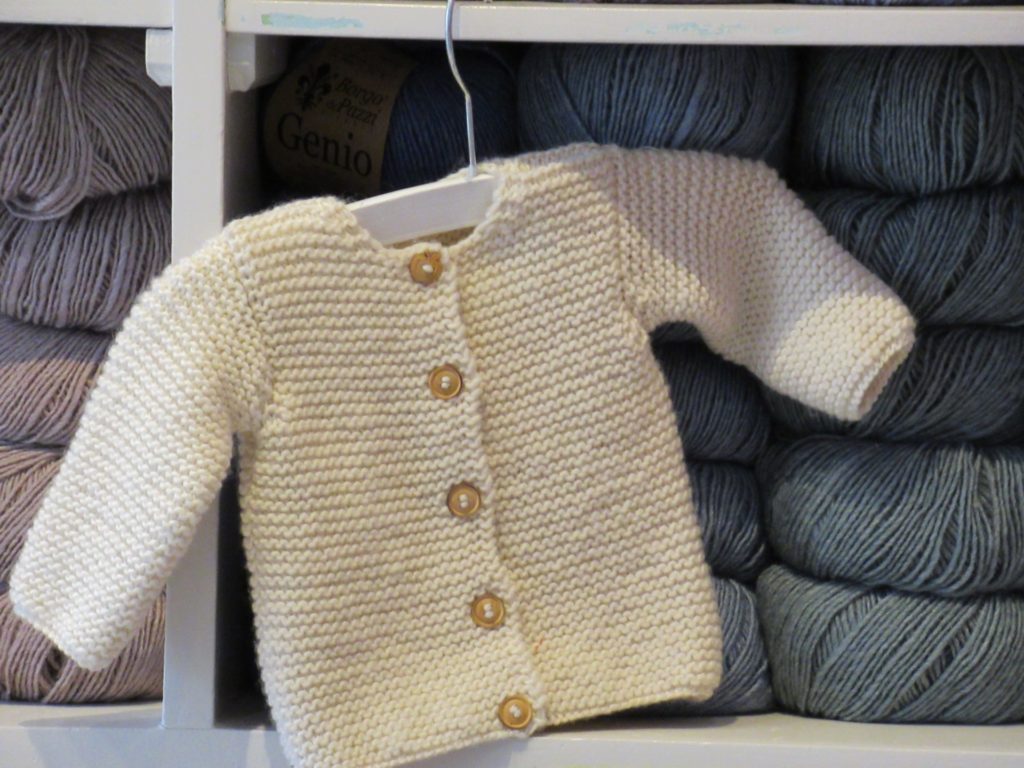
Even in big cities, I always feel drawn to green spaces. In Antwerp I found a lovely place to munch a snack and give my feet a rest in the Botanical Garden.
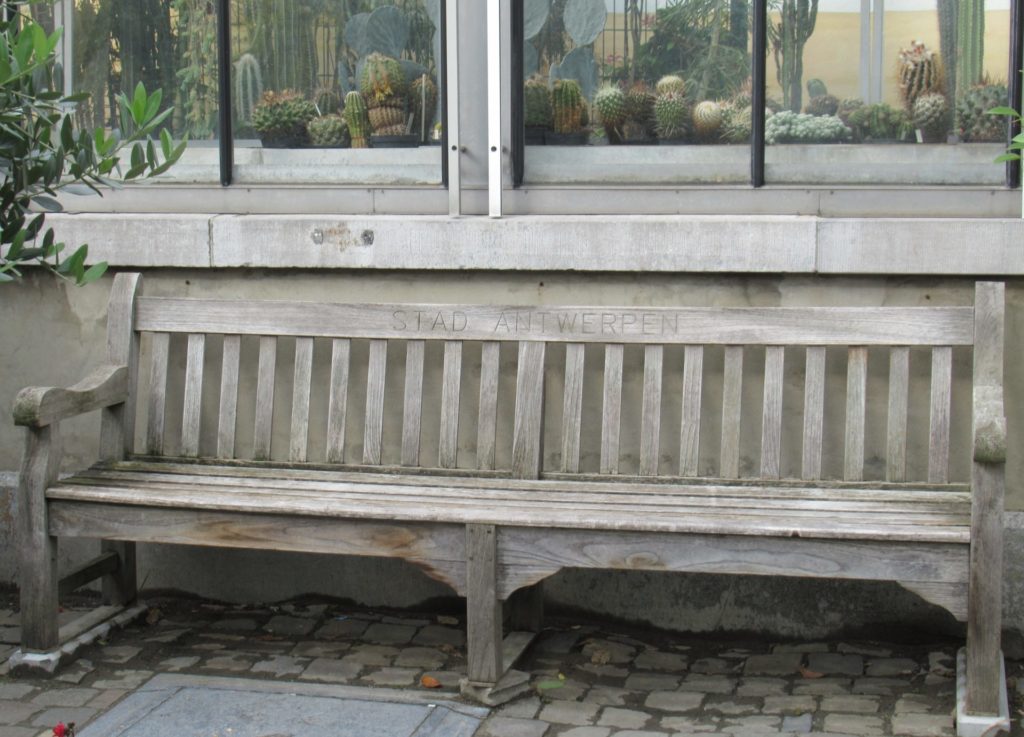
Den Botaniek, as it’s called, used to be the herb garden of a hospital. Part of it is still planted with herbs and there are also some beautiful trees, a pond with a small waterfall and big goldfish, a glasshouse with cacti and other exotic plants, and an intriguing sculpture.
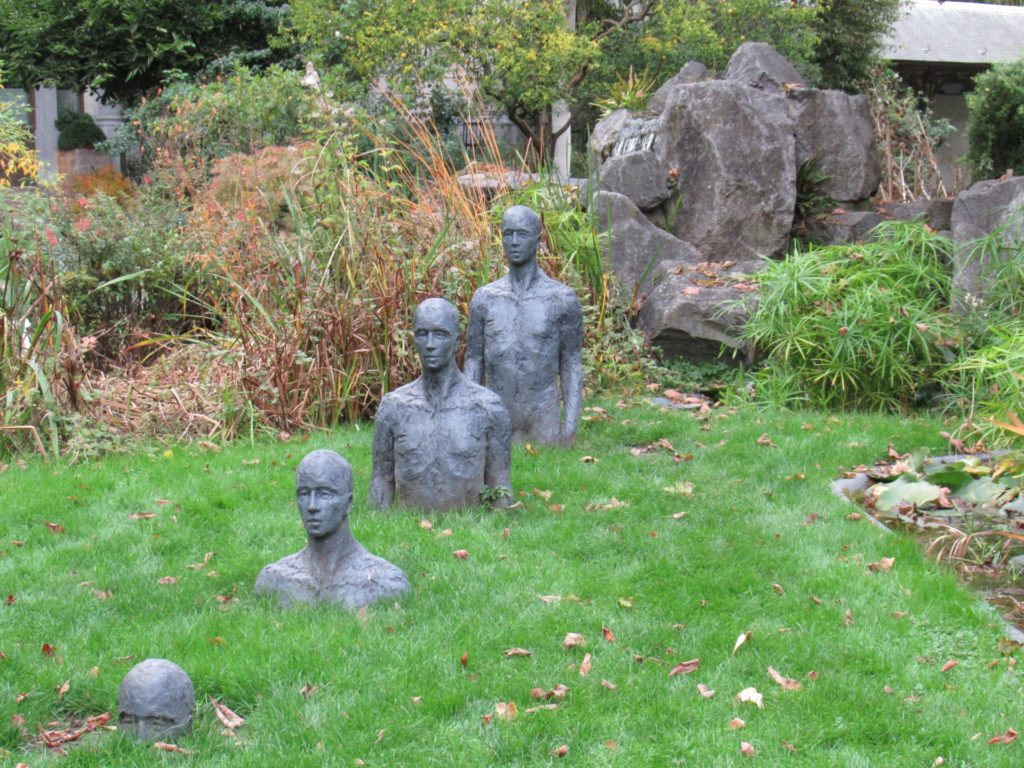
The plaque next to it says that it’s called ‘Greening II’ and is by Monique Donckers. I haven’t been able to find anything else about it. What does it mean? Could this be symbolic for man on his way to pushing up the daisies?
Refreshed by my short stop, I walked on to another yarn shop – Lana. Visiting two yarn shops on one afternoon, made me realize how different they can be. Both of these shops sell yarn, obviously, but their selection and atmosphere is very different. While Julija’s is light, fresh and modern, Lana is warm, colourful and cosy.
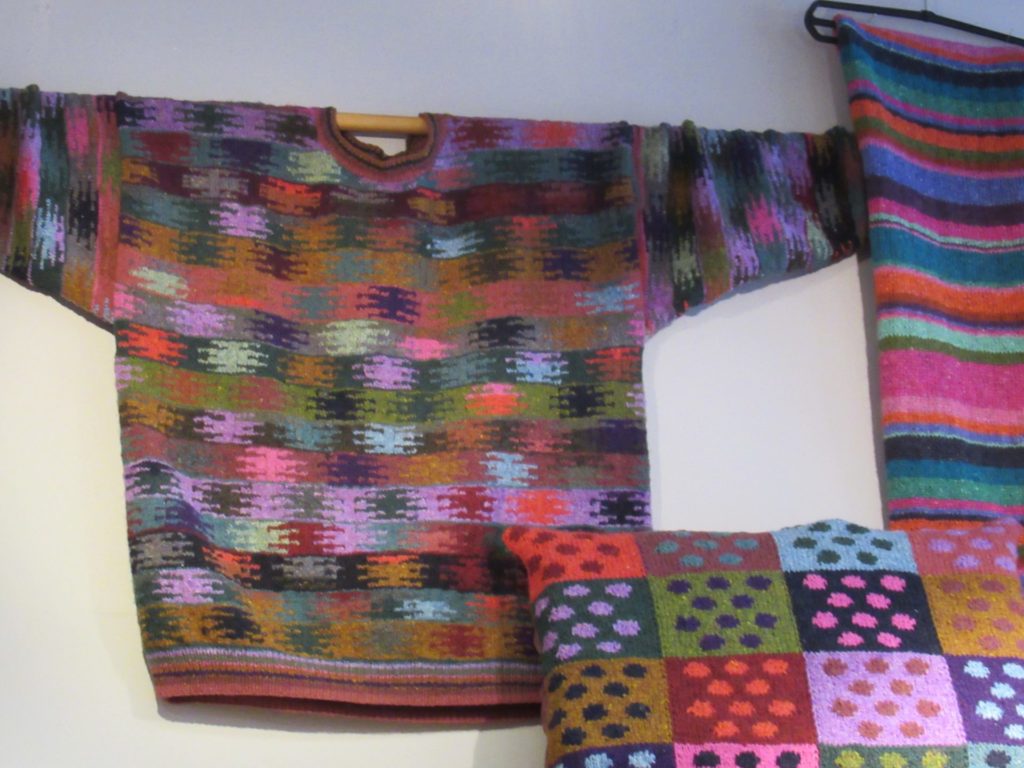
Lana is a Rowan flagship store and the photos above and below show several knits in their Felted Tweed yarn. Some (or all?) of them are by the famous Kaffe Fassett. I recognize Vibrant Stripe (scarf above right) and Colours in the Mist (sweater below).
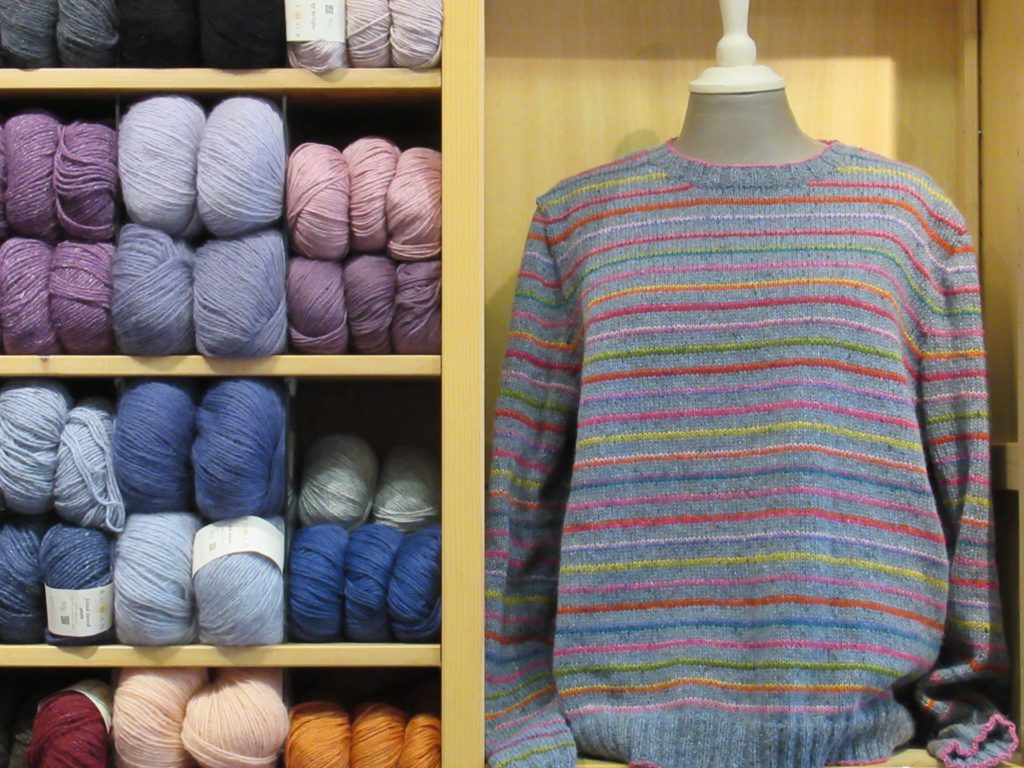
I’m not sure about the striped knits below – perhaps they are just swatches to show off a beautiful yarn, or perhaps they are scarves. And I don’t remember what yarn they were in either. I only photographed them because they were so nice to look at.
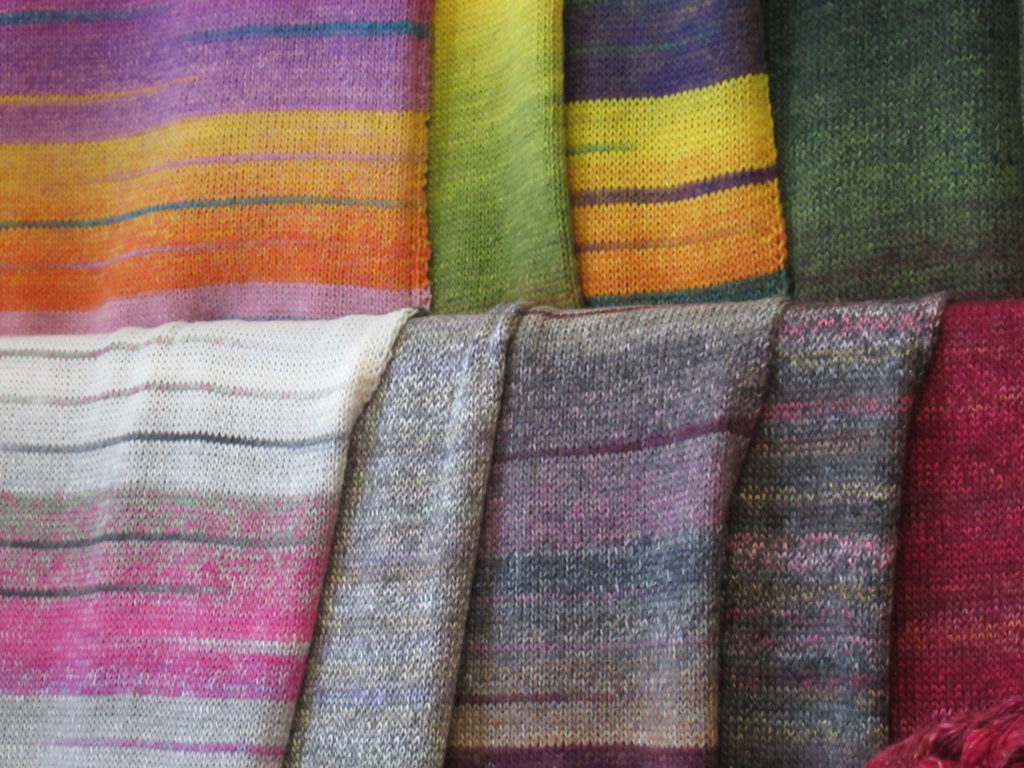
I must admit that I feel a bit iffy about writing about these yarn shops. So, to be absolutely clear about my intentions: I’m not sponsored by any of them. I just write about them because I hope that some of the things that make me happy, will make others happy, too. And also because the information may be useful to other knitters with some time on their hands in this lovely city. Besides, it isn’t as if these shops are huge multinationals. They are just small businesses that deserve all the support they can get.
And did I buy anything? Often, I am so overwhelmed by everything I see, that I think, ‘Oh well, I don’t really need anything’, and leave the shop empty-handed. But this time I was well prepared. At Julija’s I bought some beautiful Japanese fabric, in a blue-green colour that looks like wide brush strokes of watercolour paint. And at Lana I chose a few balls in a thick, soft, fluffy yarn in off-white for a cosy winter accessory.
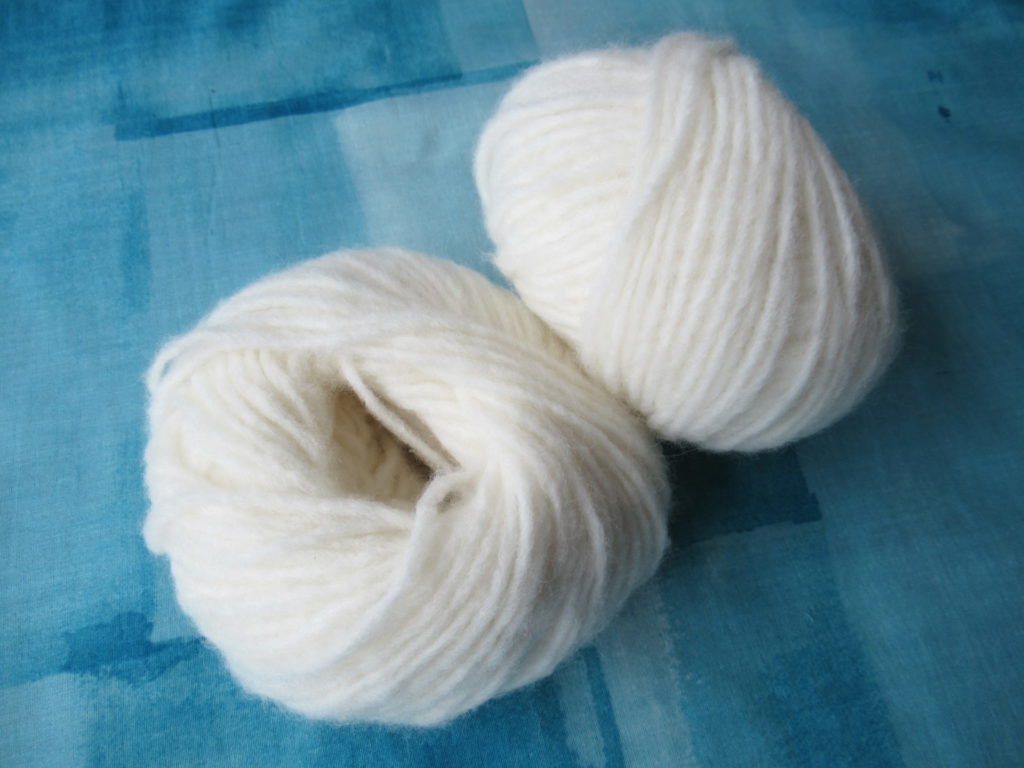
Well, time to head back. Instead of taking the ferry across the Scheldt again, I walked through St Anna’s Tunnel under it. I wasn’t entirely sure about this, but because there is no bridge, I didn’t have much choice. My fears were unfounded, though, as the tunnel is clean, well-lit and feels entirely safe. And it’s quite an experience! It’s a pedestrian tunnel dating back to the 1930s, with escalators made of wood and brass that make a fantastic rattling noise.
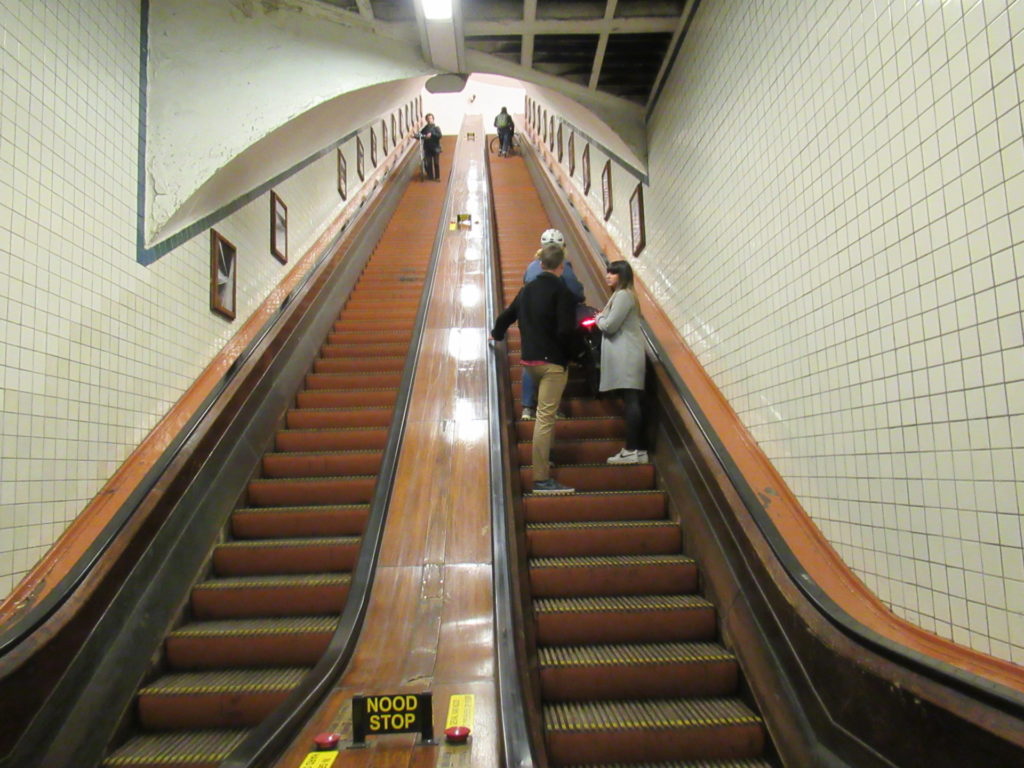
If you’d like to visit Antwerp too one day, I’d say take an entire day (at least) and rent a bicycle or use public transport. (I vastly underestimated the distances and walked miles and miles.)
At the end of a lovely afternoon, an even lovelier supper awaited us at our friends’ place. They prepared a special Belgian meal, with Flemish chips, spicy red cabbage and a stew made with one of Antwerp’s special beers. Thank you, dear friends!
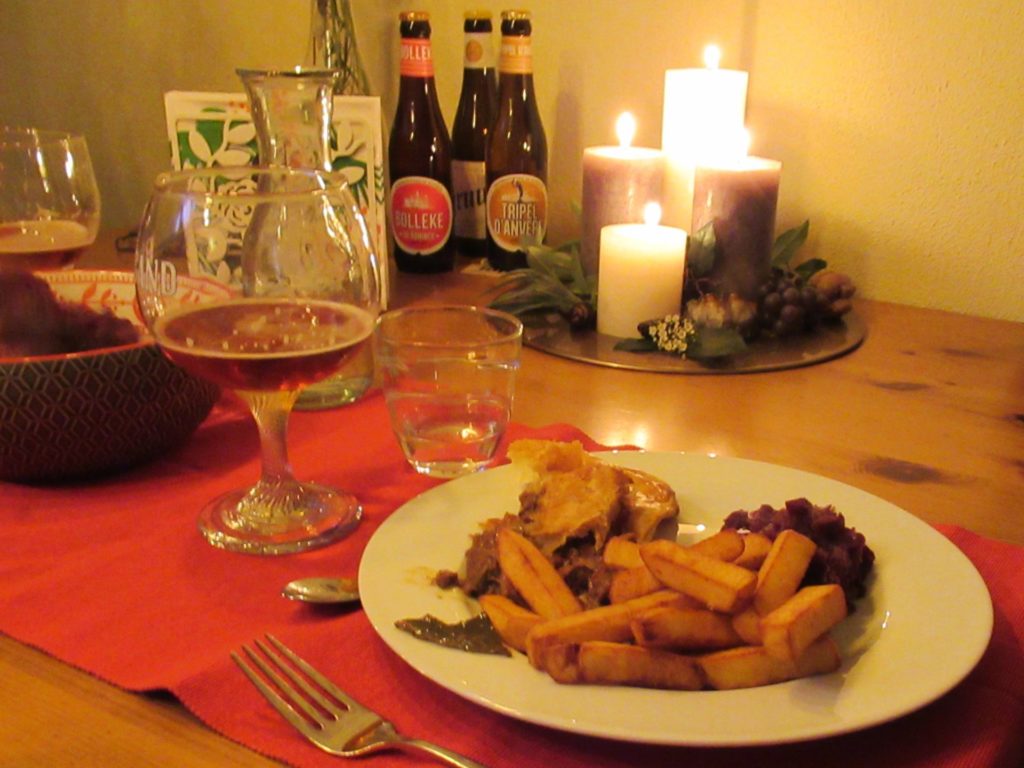
I won’t be here, on my blog, next week. After all this gallivanting, working in the garden and a terrible computer crash, I need some time to catch up with the rest of my life. And I want to finally finish the new design I’ve been working on for a long time. I hope to tell you more about that soon.
Thanks for reading and take care!
Basket Weaving
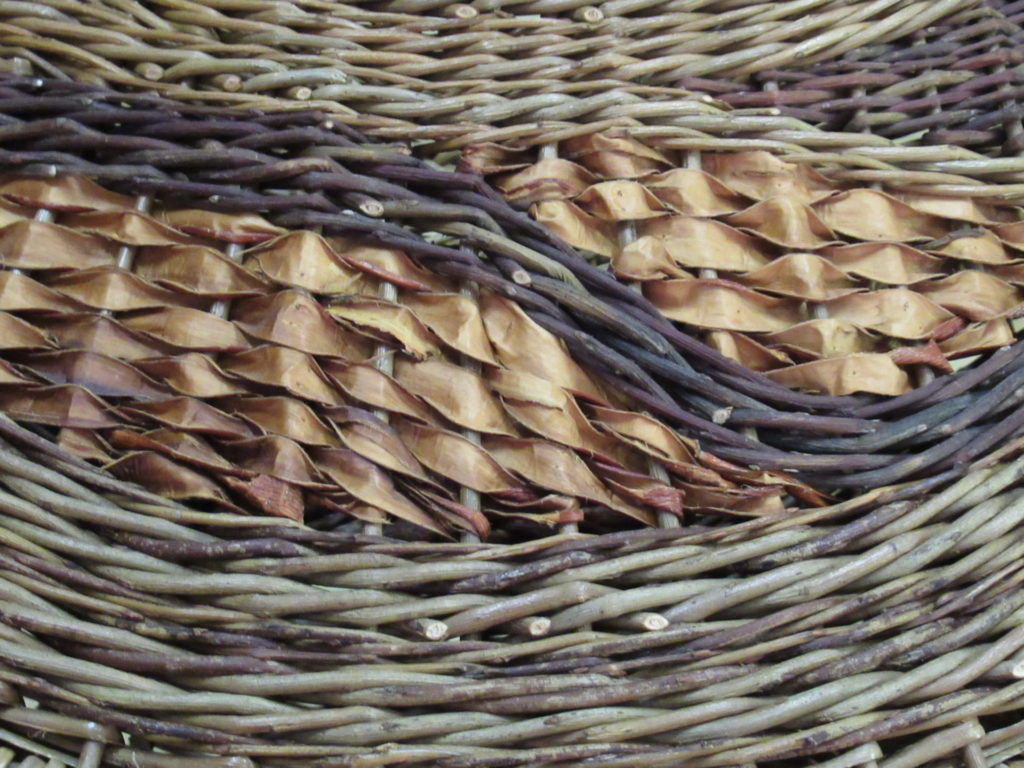
A knitter can’t live without baskets. At least, that’s what I think. There are baskets dotted all around our house, filled with knitting projects, yarn, unspun wool, more yarn and more knitting projects. Some of these baskets were made by Jannie, a basket weaver I often run into at fairs, markets and sheep shearing festivals. This summer I discovered that she doesn’t only make baskets, but also teaches others how to make them, and I entered my name for a workshop.
I asked a friend (who also knits and spins) if she’d like to join me. She said, ‘I’d love to!’, and together we set off early last Saturday.
As soon as we arrived, we were surrounded by baskets. Baskets hanging under the stairs.
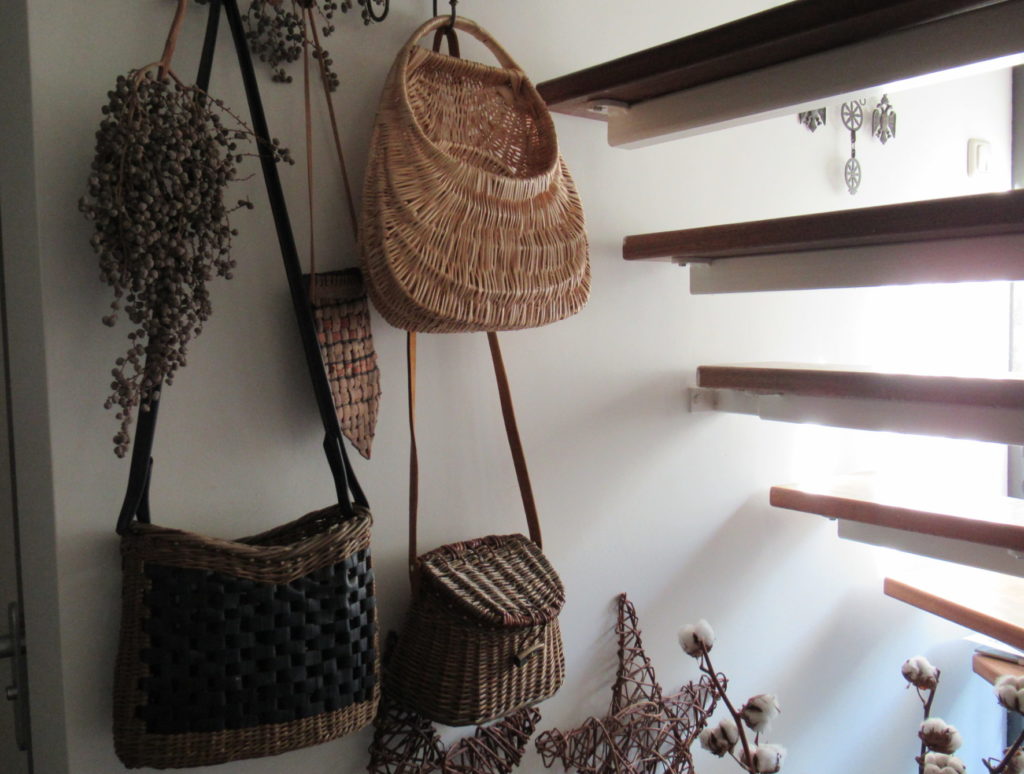
And baskets stacked high on shelves.
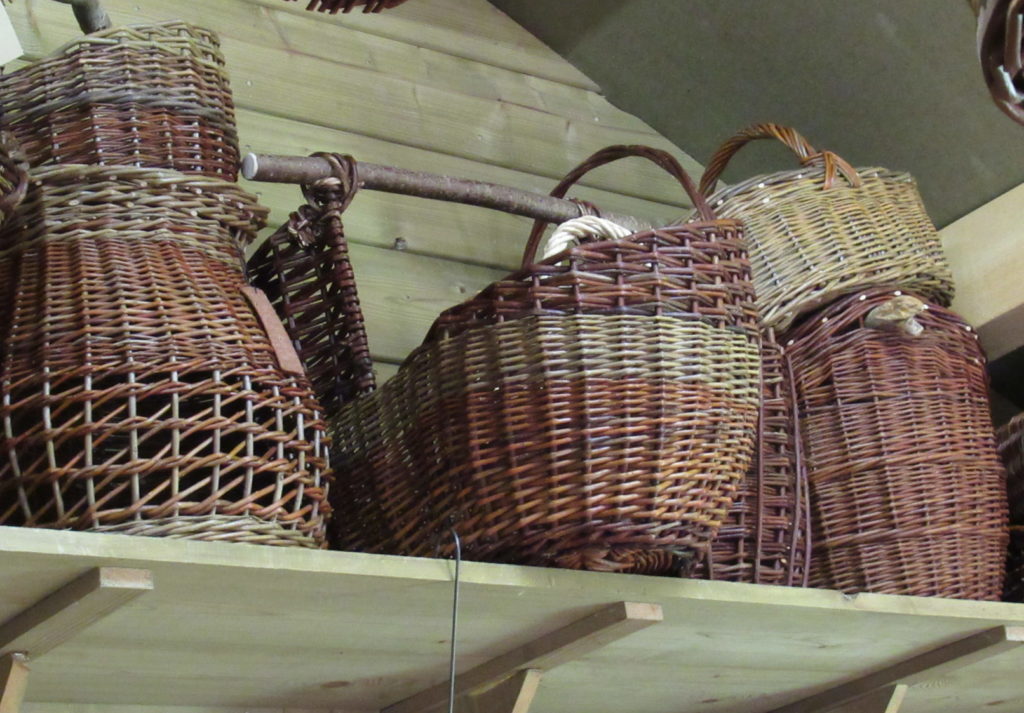
There were small, fairly simple looking baskets.
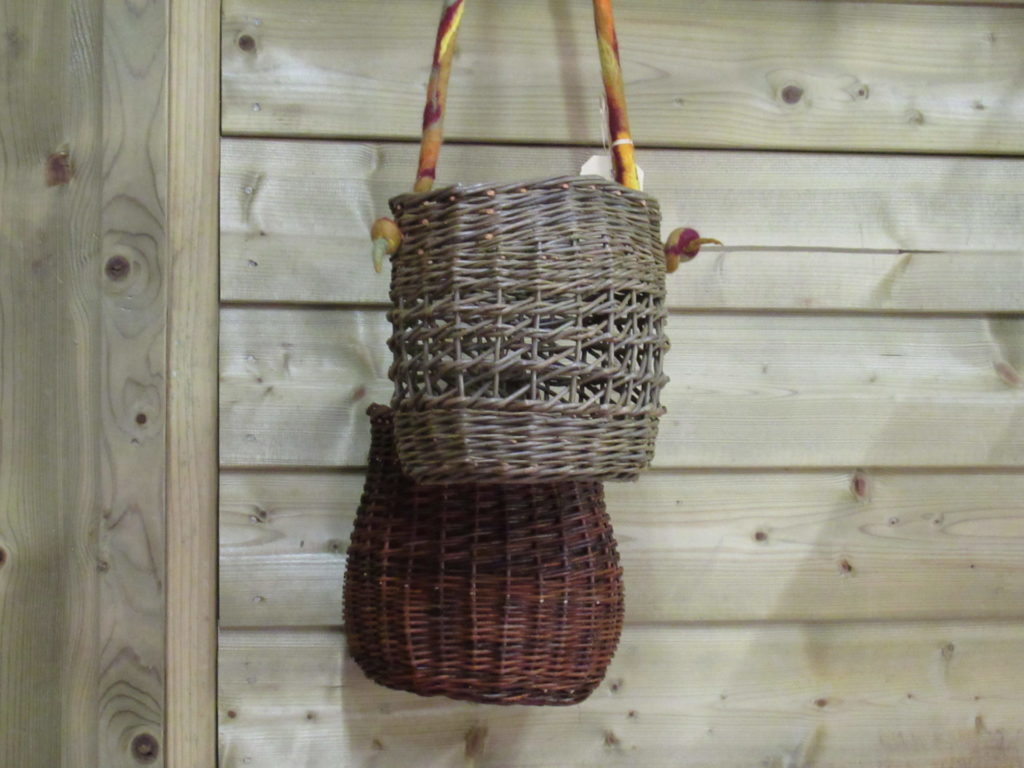
And bigger, very complicated looking baskets. (The picture at the top of this post is a close-up of the basket below).
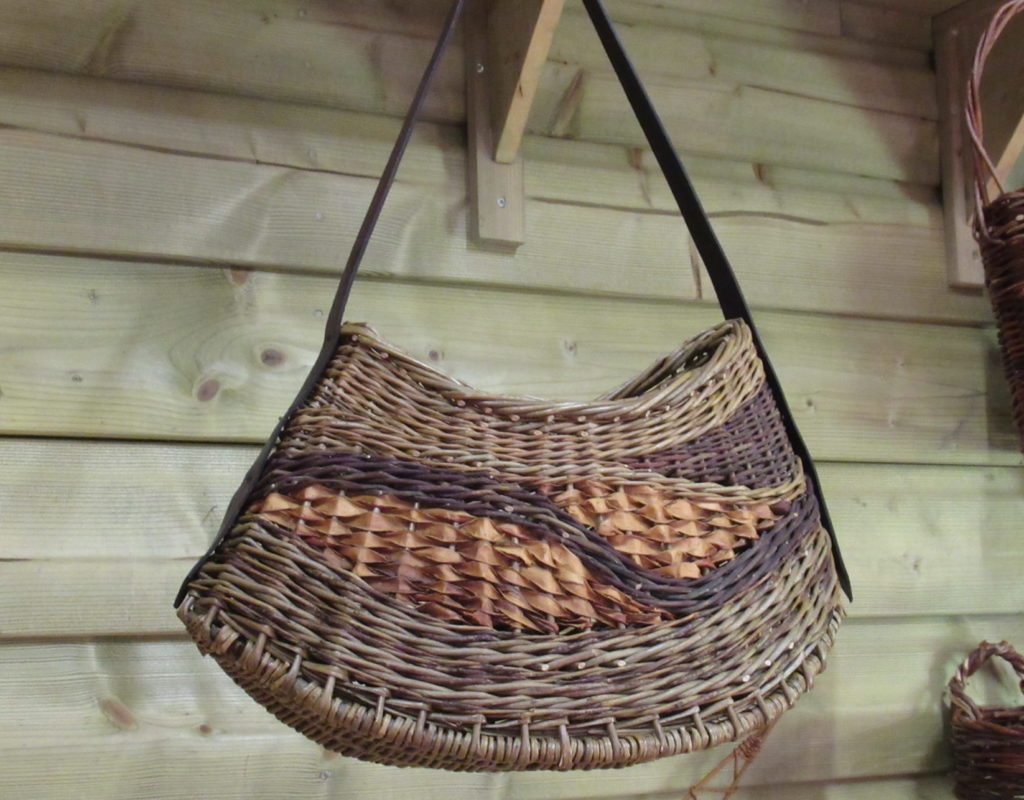
Something like this would be way too difficult for a first effort, of course. What we were going to make, was a round, medium-sized basket with handles. And this is the material we were going to use:
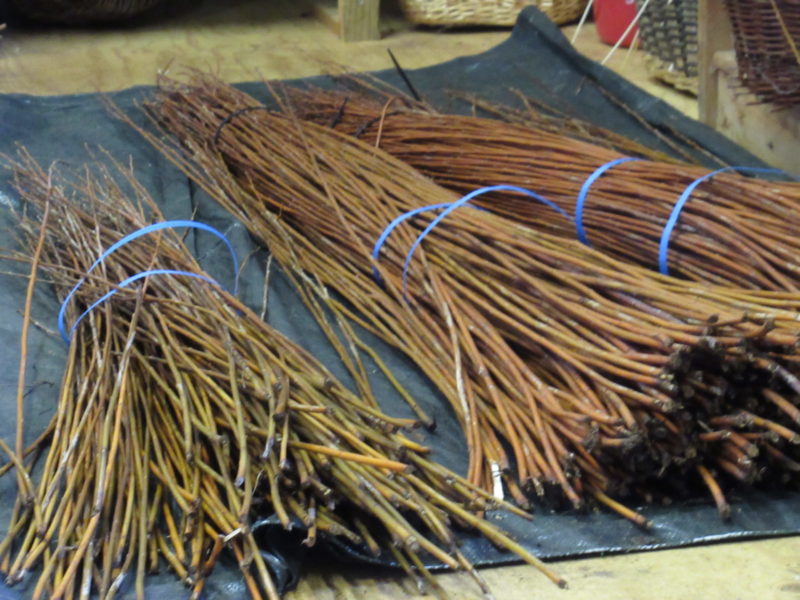
Willow shoots, or osiers. These were sorted by thickness and length and pre-soaked for about 10 days.
We started by slitting three thick pieces of osier in the middle and threading three others through them. With a thinner shoot we started weaving the base.
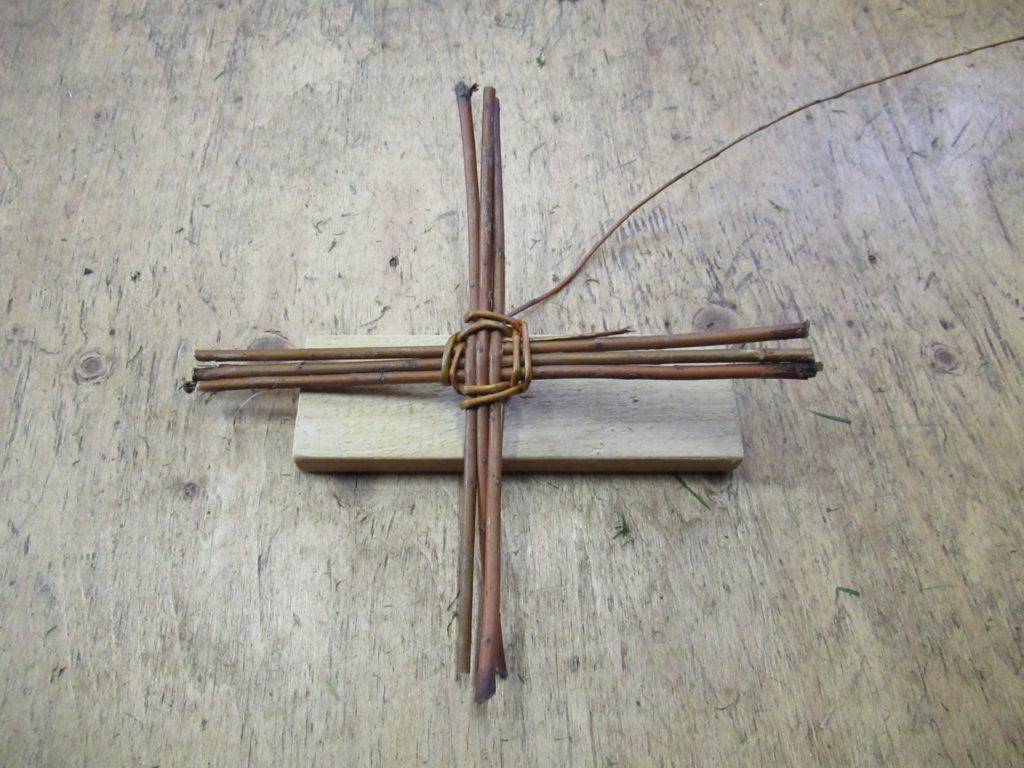
We continued weaving, while separating the spokes, until it was a reasonable size.
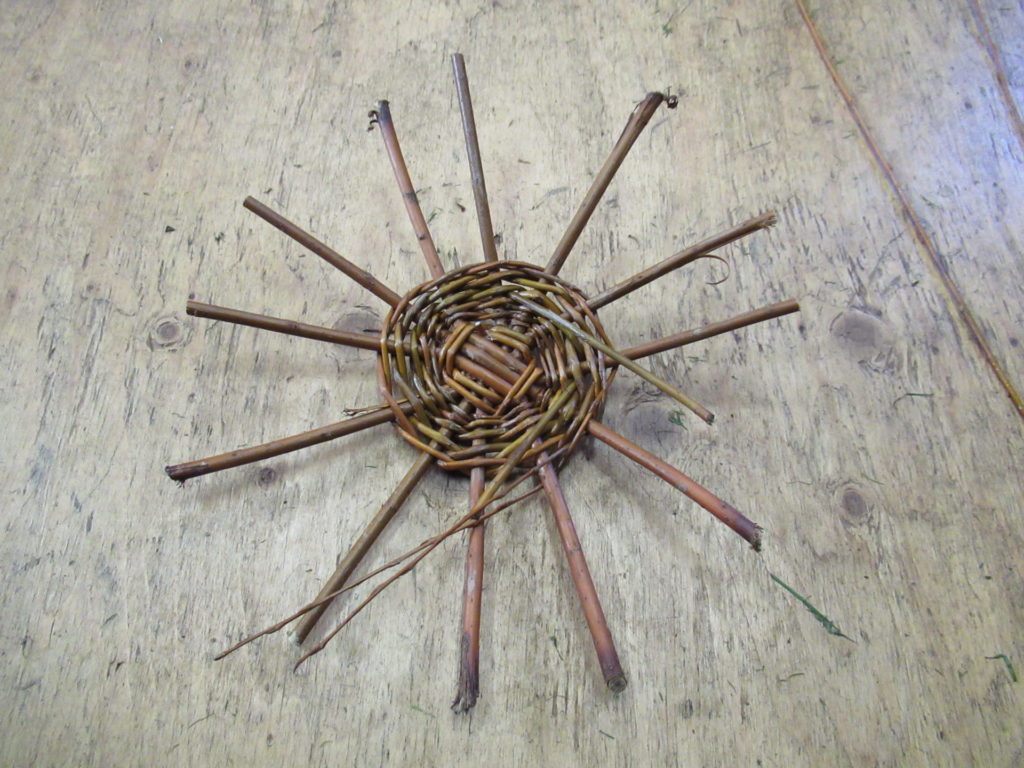
Then we cut off the starter shoots, stuck 24 new long shoots into the base, and added a few rows in a different ‘stitch’ as I would call it as a knitter. I have no idea of basket weaving terminology, but I looked it up, and I think the last few rows in the photo below are called a ‘randing’. They make for a firm base.
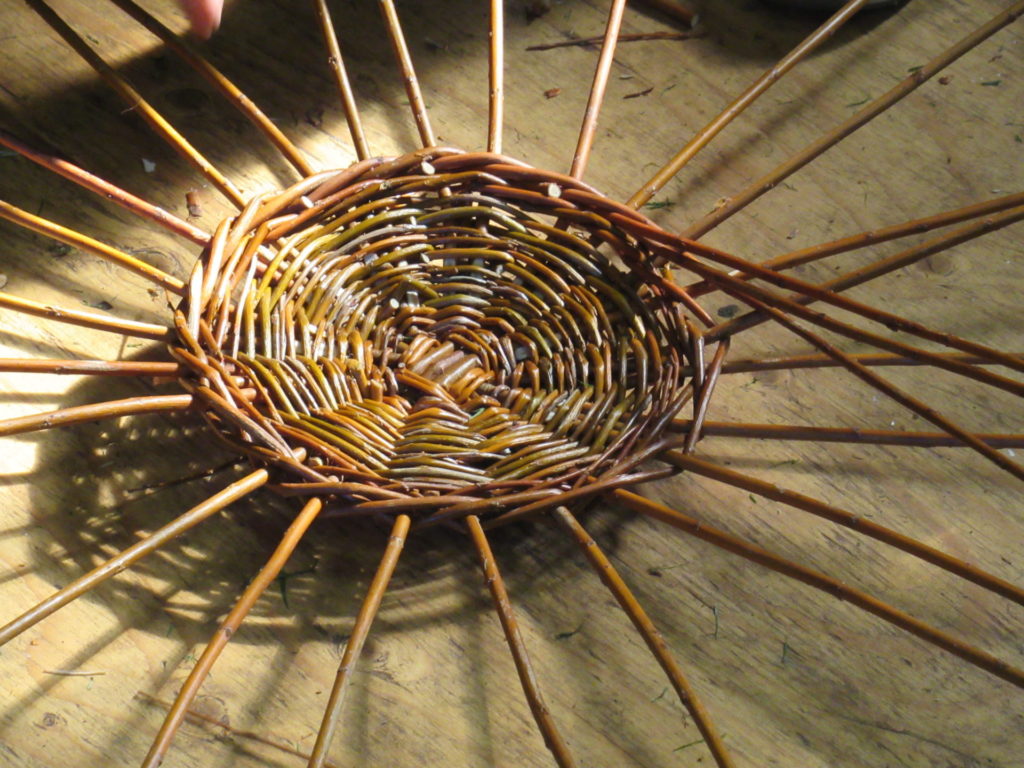
Now it was time to bend the shoots upwards. They were tied together near the top, to keep them out of the way and pointing in the right direction. The 3 shoots you can see sticking out on the floor, are the ones we were going to continue weaving with.
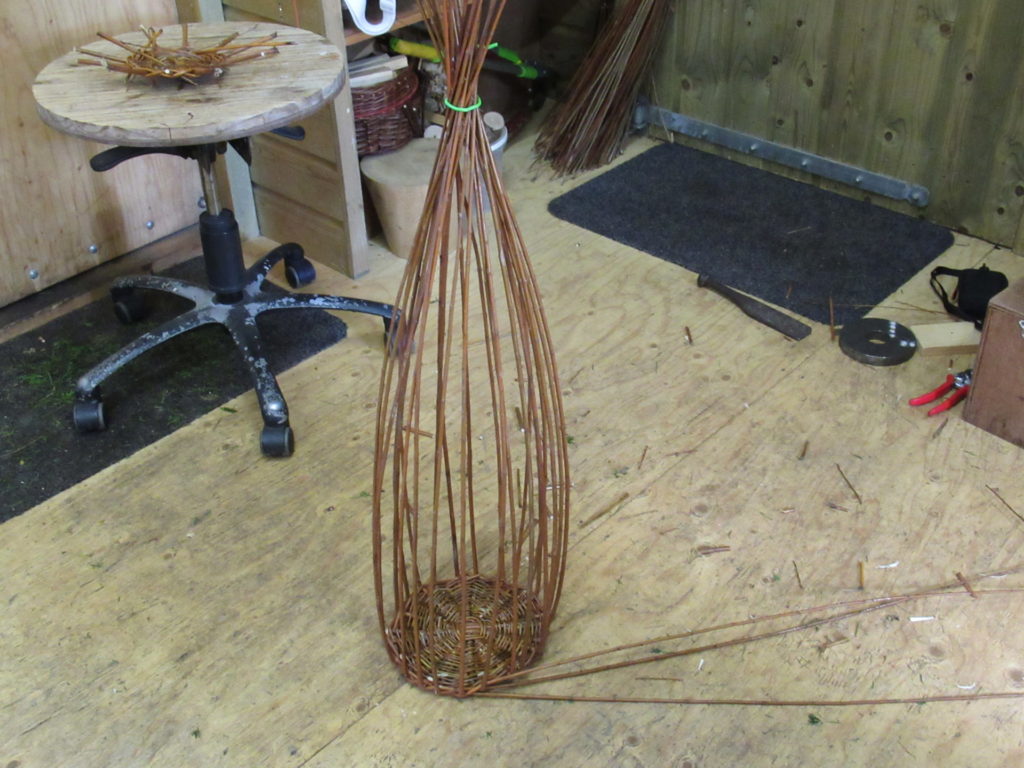
We were sat on low wooden benches, with a sloping wooden work surface attached to them. At this stage, a heavy weight was placed inside the basket in progress, to keep it from sliding down the work surface.
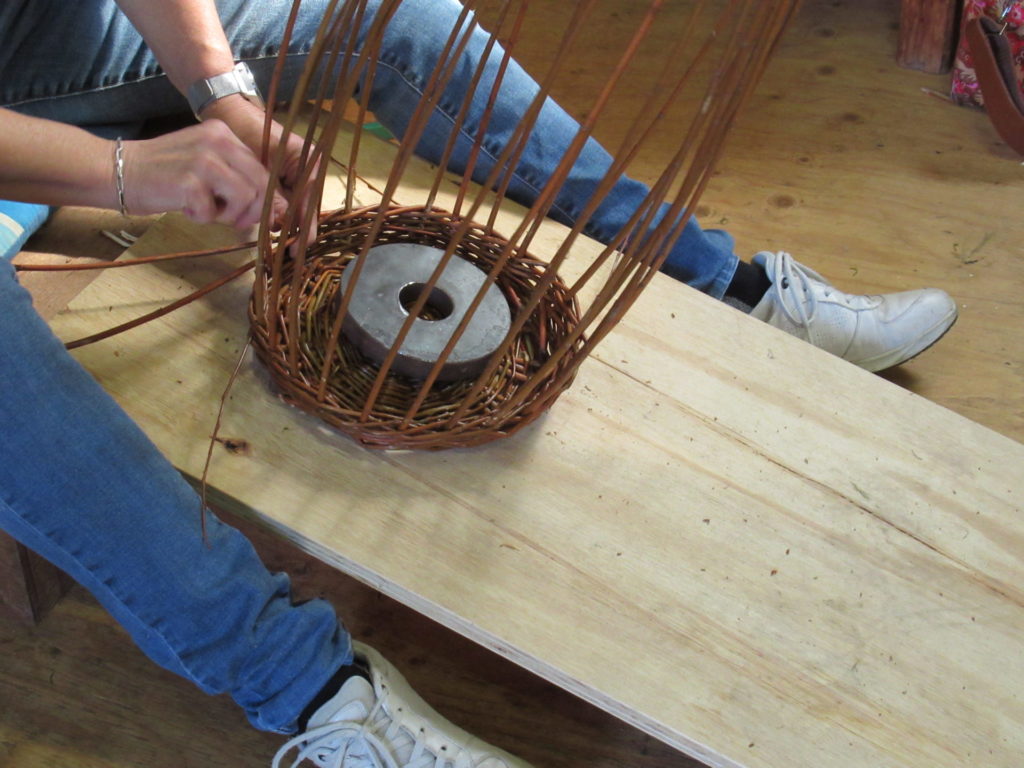
Phew, basket weaving is hard work! In need of a short break, I stepped outside. It was a lovely, sunny morning, and the garden around the basket weaving shed was idyllic.
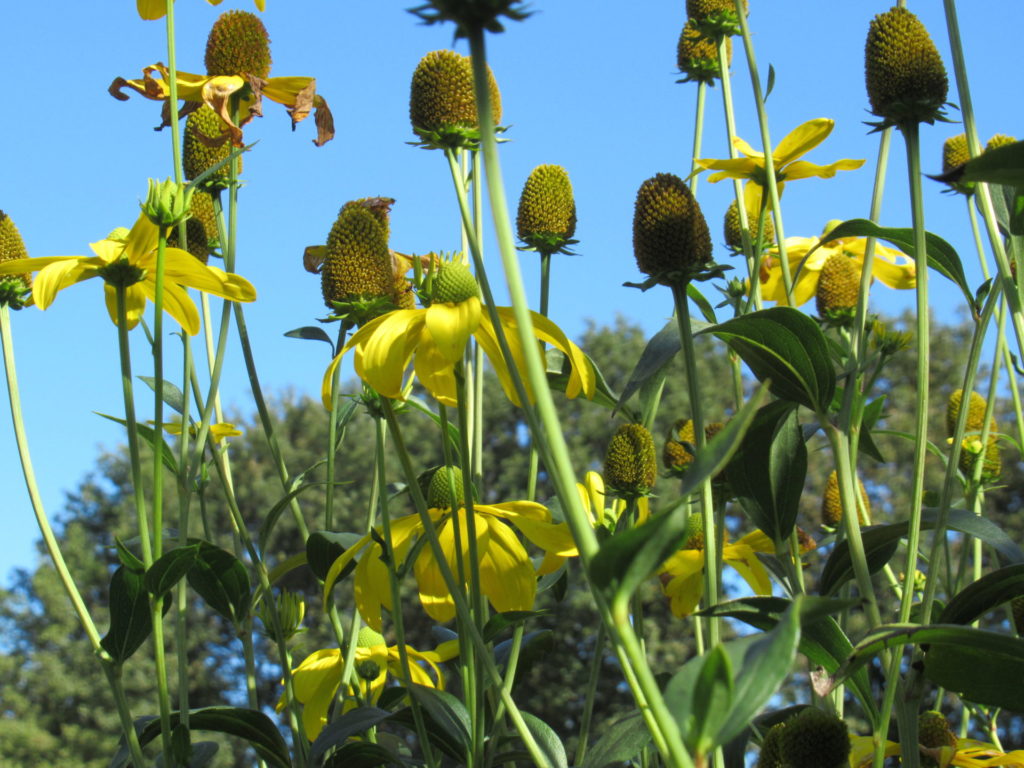
Even outside there were basket-like decorations and structures everywhere, overgrown with plants.
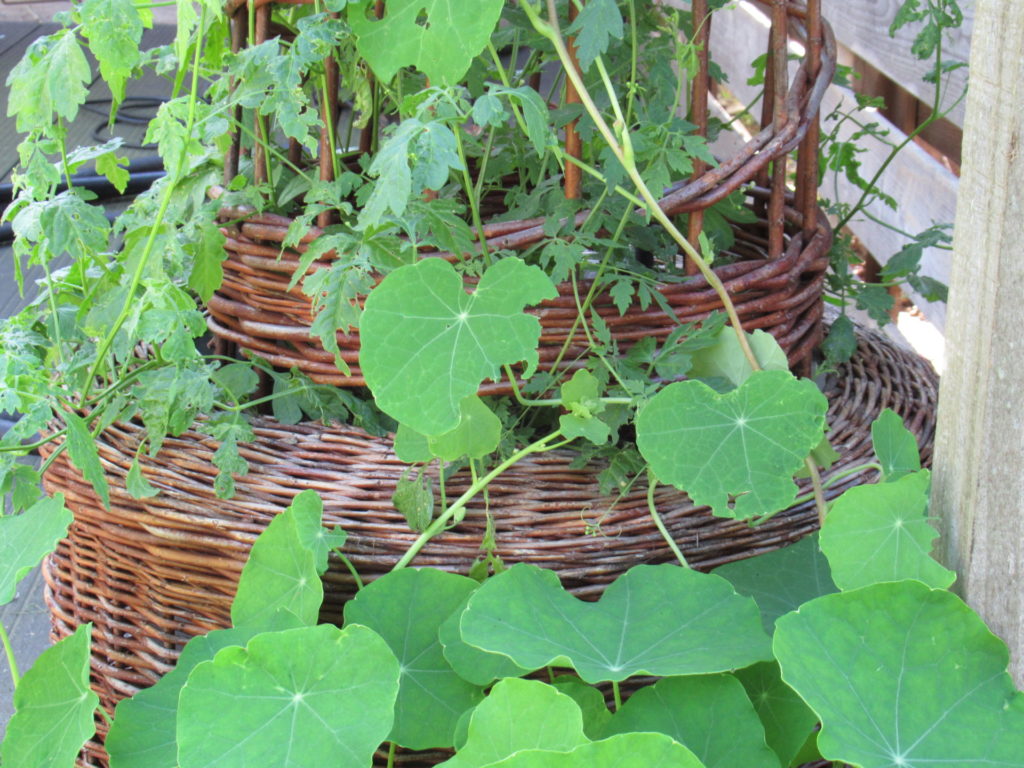
The chickens (and a guinea fowl) were making soft, clucking noises. There were literally heaps of courgettes and tomatoes on the patio, and there were some gorgeous dahlias in bloom.
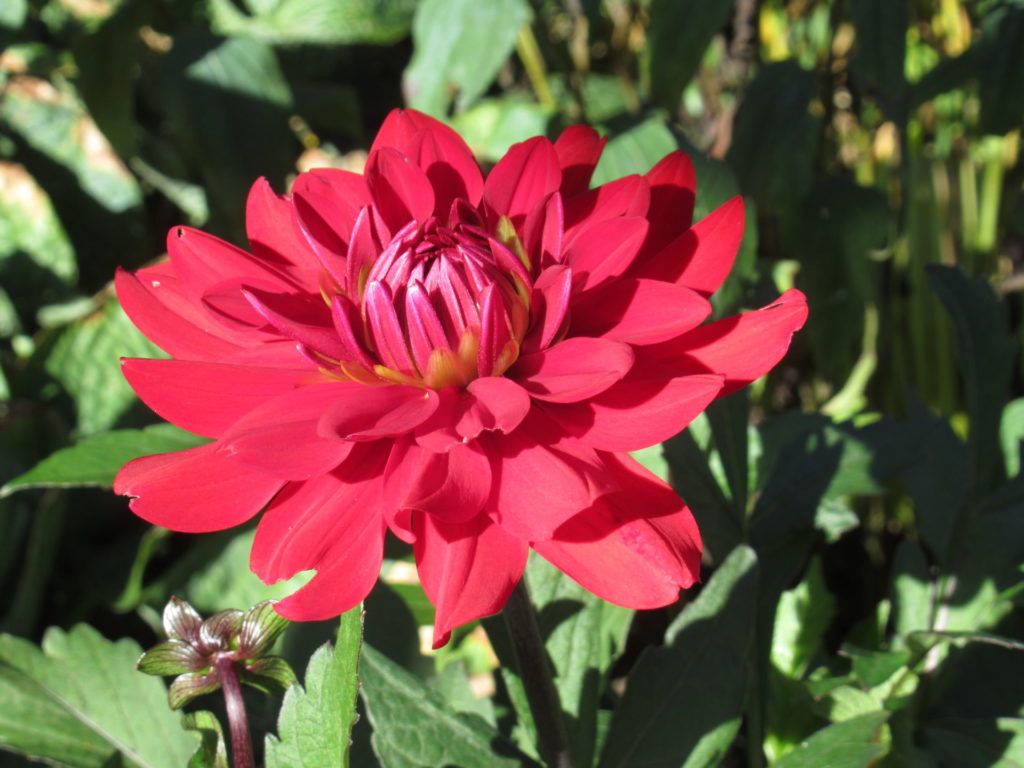
The same week I went basket weaving, I won a knitting pattern on Ravelry. Although ‘won’ isn’t the right word for it, perhaps. All I did was chat with other knitters about the things we were making and post some pictures. But still, my name was drawn and I received a digital pattern for a big, cosy wrap in a basketweave pattern.
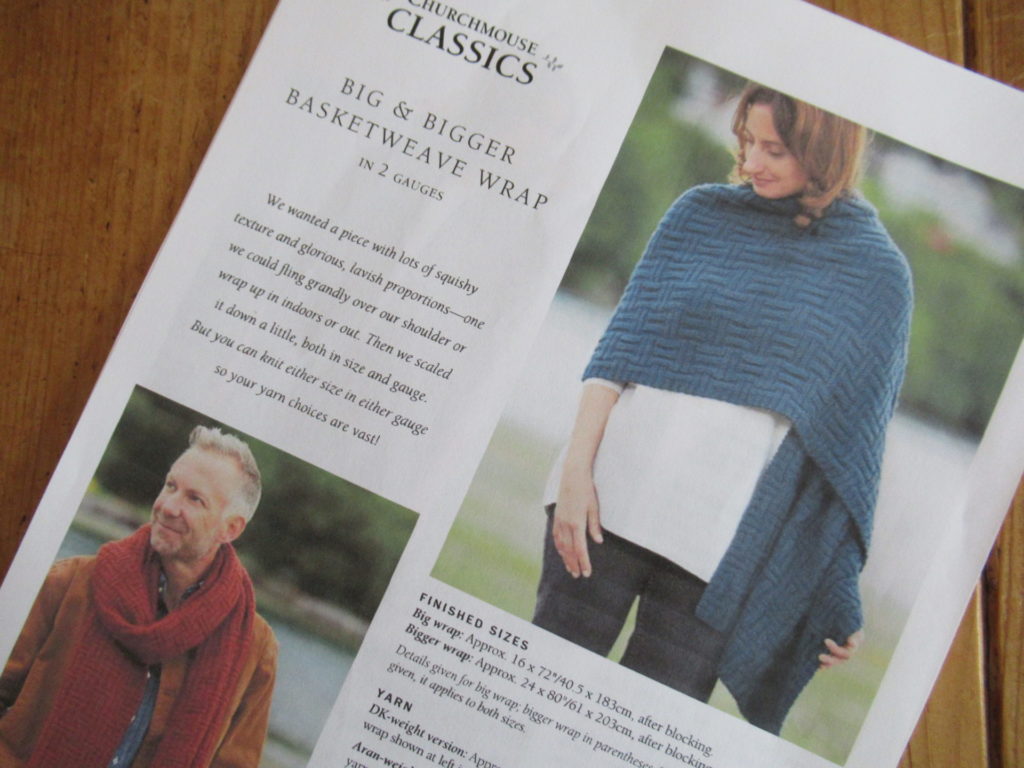
Wasn’t that a nice coincidence? I’m really tempted to cast on straightaway, but I already have so many other plans for the coming months. I think I’ll keep it till later.
Well, after this short break I’m ready to get back inside. Are you coming?
It’s already starting to look like a real basket.
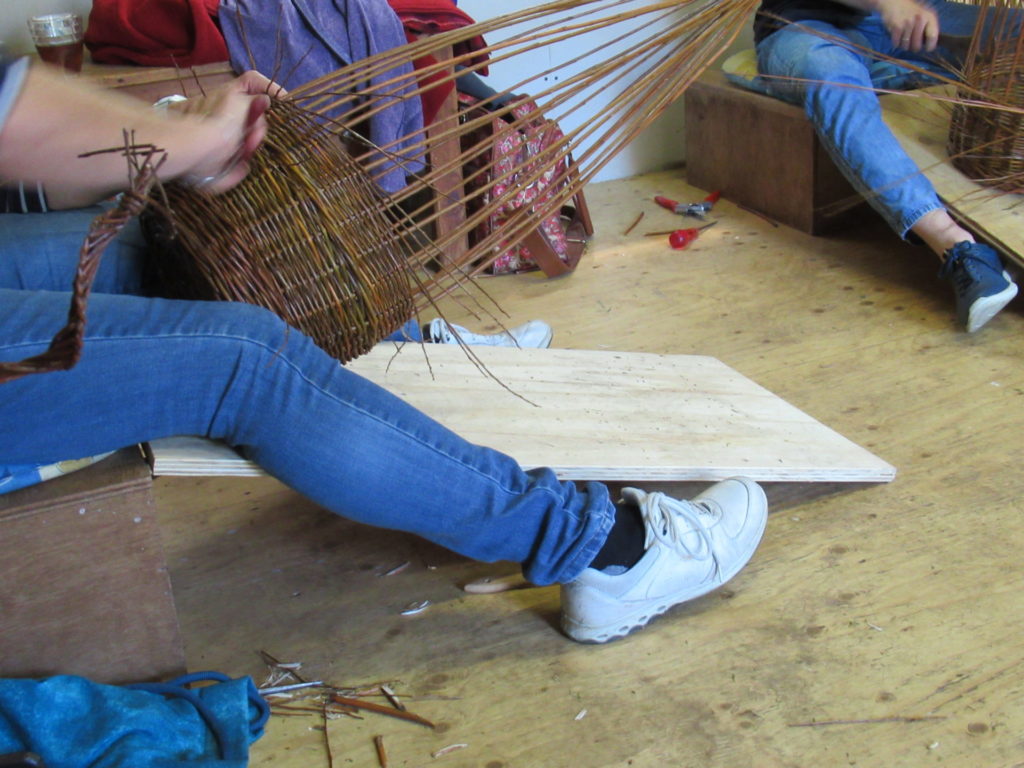
Our example was placed in the middle of the room for inspiration.
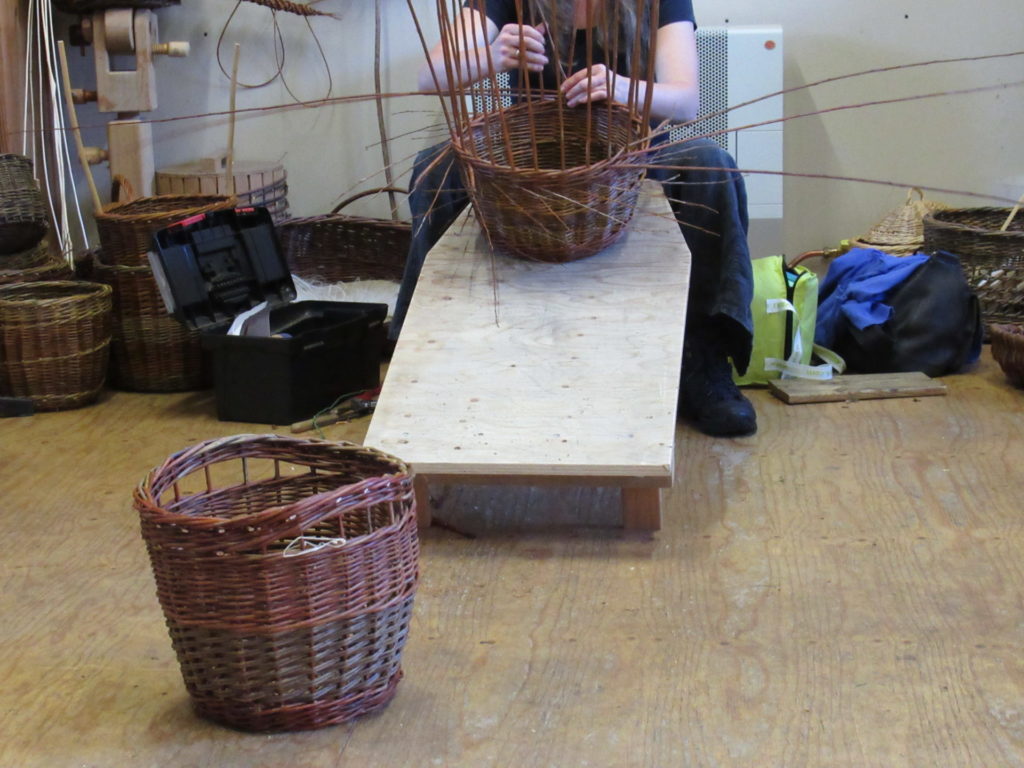
Using champagne corks we made even spaces for the handles.
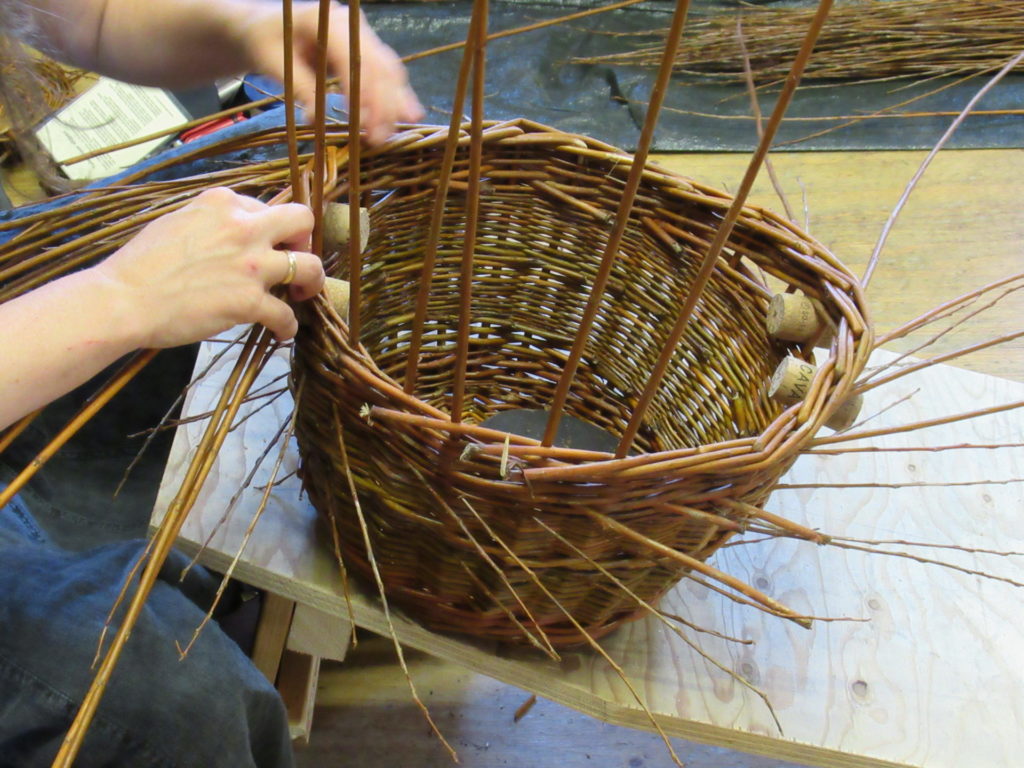
After braiding a sturdy rim and snipping off all the ends sticking out, our baskets were finished. And here they are – tadaah!
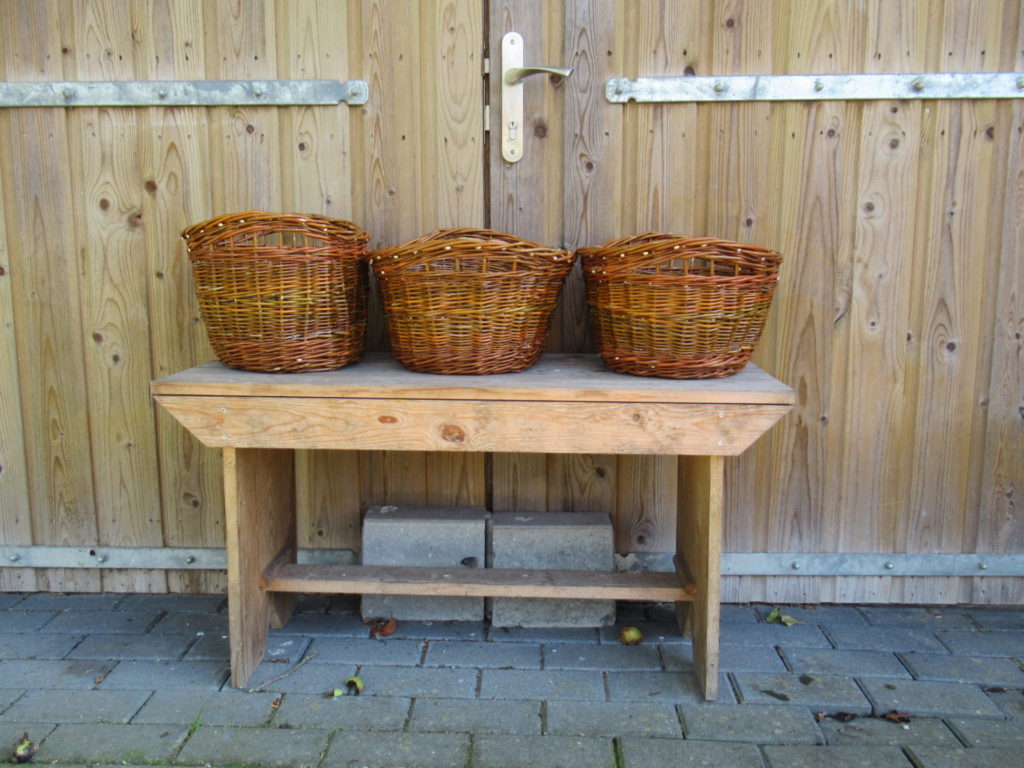
And here’s mine at home, filled with some undyed Shetland roving. I’m so proud of my very first, slightly lopsided willow basket.
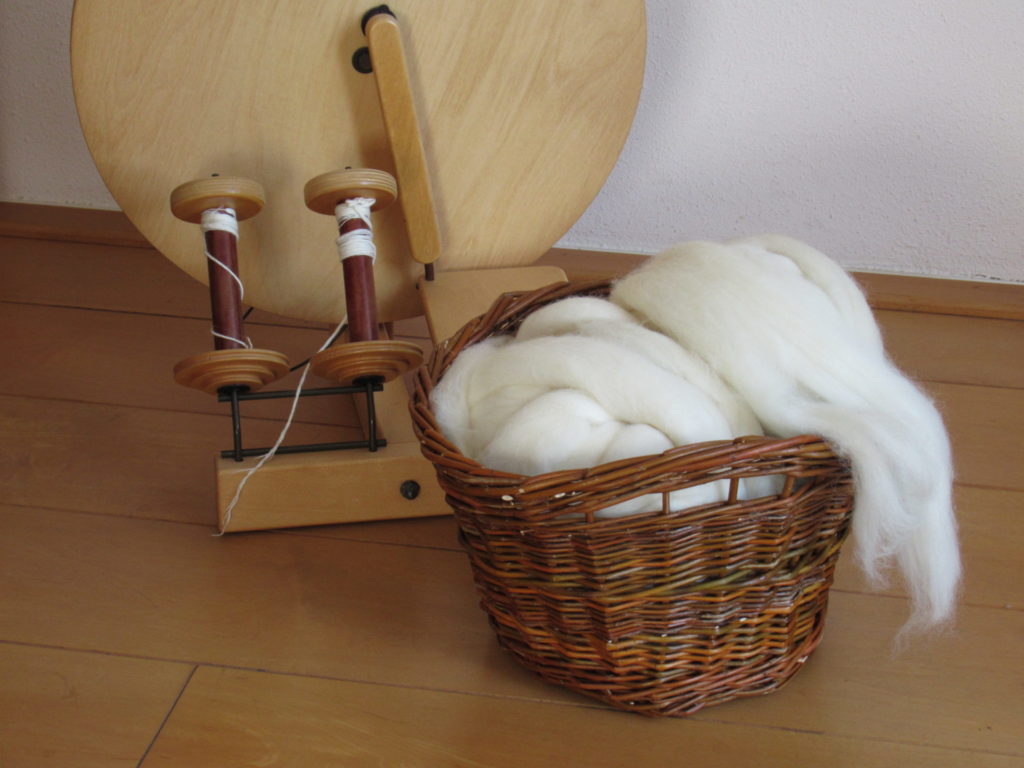
My friend and I made our baskets at Vlechterij Vinkenslag. Jannie is a very knowledgeable, friendly and patient teacher. Apart from teaching basket weaving, she sells her beautiful baskets, bird feeders and decorative ornaments at crafts markets and fairs.
Summer Walks Part II – Coast
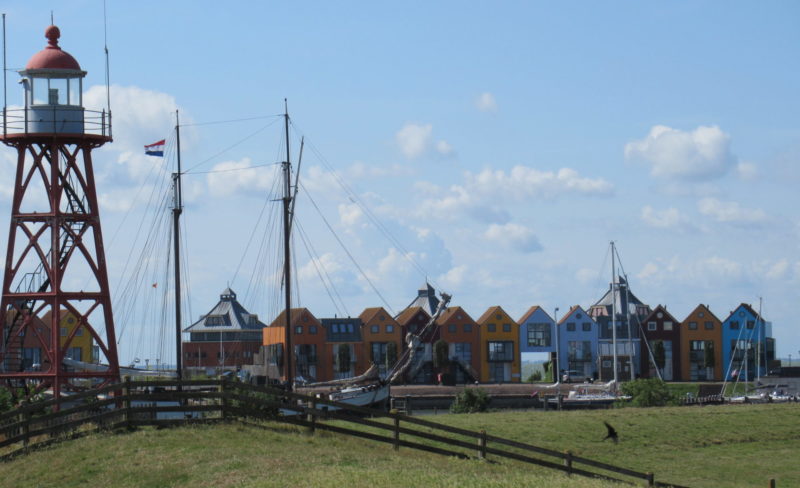
On a day that was too hot for walking through woods or across heathland, we thought a walk along the coast might be a good idea, with hopefully a refreshing breeze. So we set off for my native Friesland. Our starting-point was the old town of Stavoren (photo above), and our destination was Hindeloopen, another small harbour town. (It was a one-way walk – we took the train back.)
This isn’t the coast as in sea shore, but rather the coastline along the IJsselmeer, a former inland sea that was closed off around 1930 and is now a big freshwater lake. The dykes are still there, and our trail ran right across the top. Well, it wasn’t really a trail, just grass, but you get the idea.
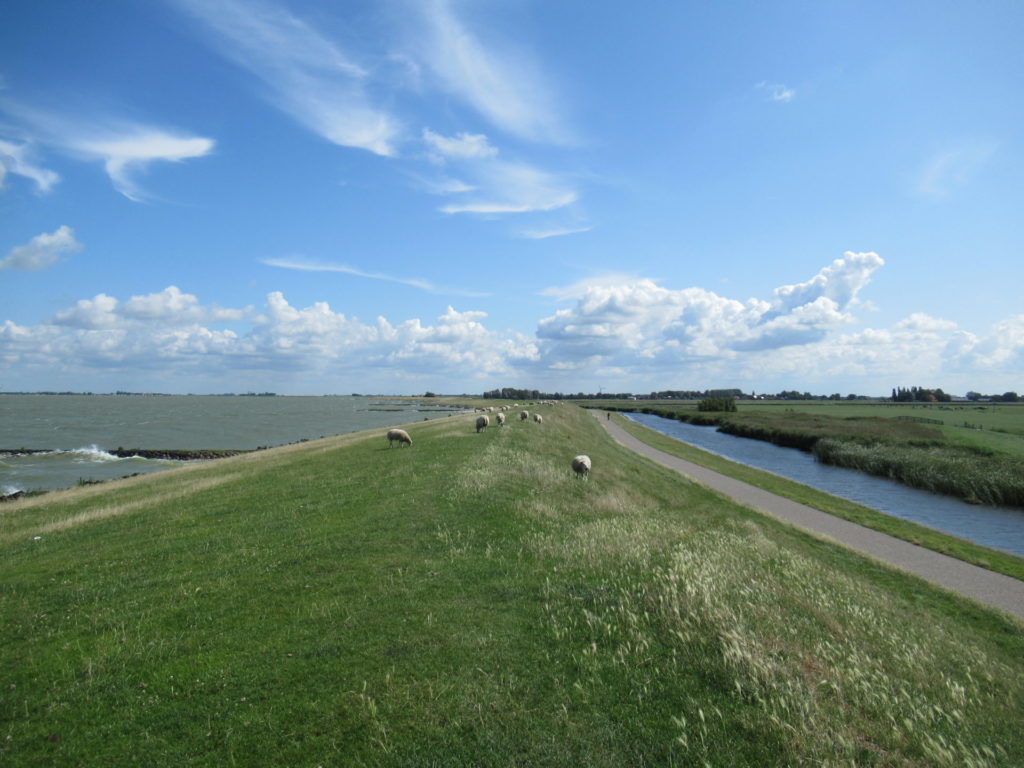
In reality the dyke is much steeper than it looks here. The narrow road on the right is a bicycle track. Nice when you’re cycling, because it’s sheltered from the prevailing wind. But not much fun when you’re walking, because you’d miss the lovely views over the lake.
With a delicious breeze from behind it was an ideal day for this walk. Looking to the left, we saw a choppy lake with some sailing boats.
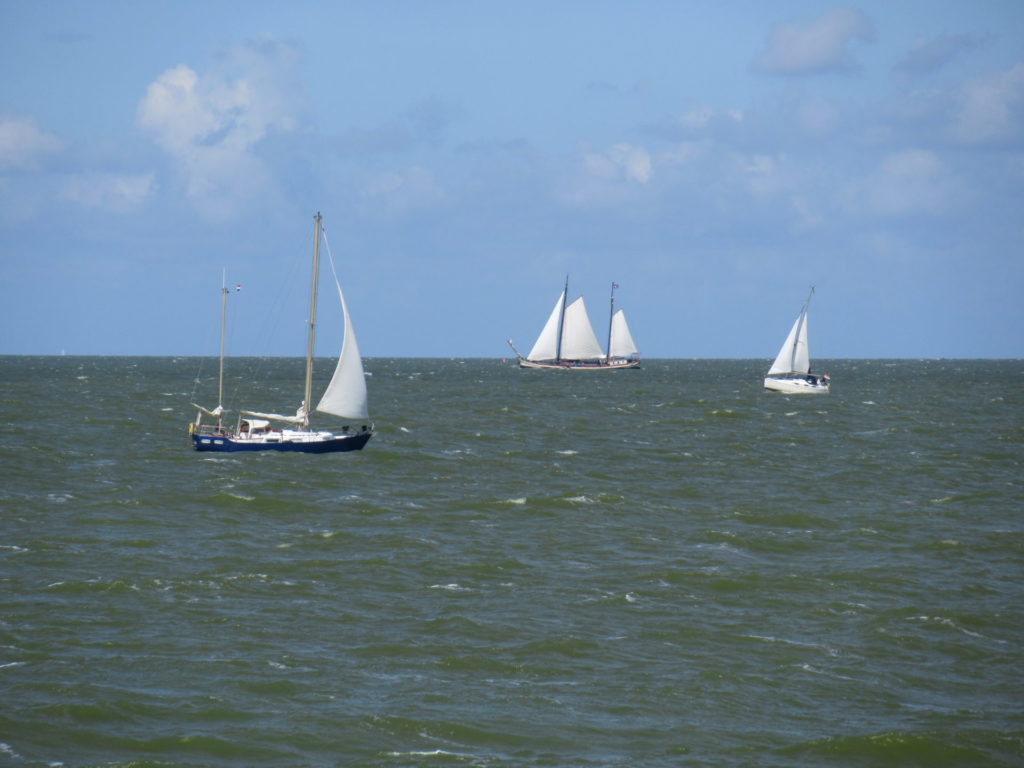
And looking to the right, we saw agricultural land, with some farms and modern windmills. Completely flat, with endless horizons.
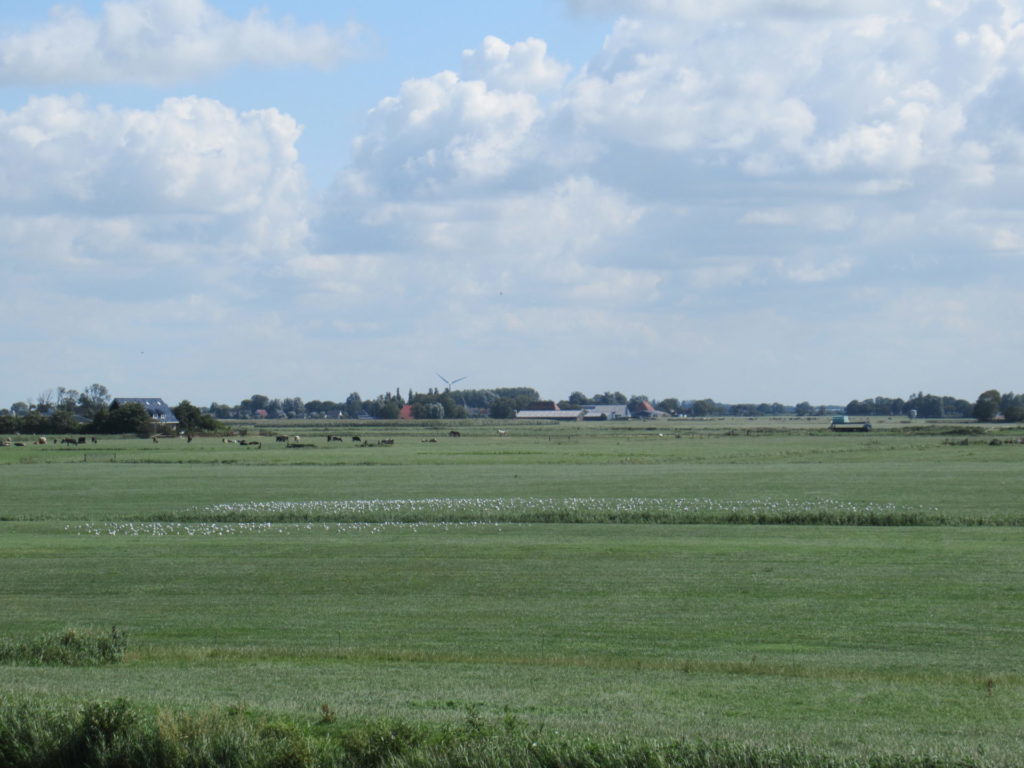
All along the dyke, there were lots of fences with stiles to climb.
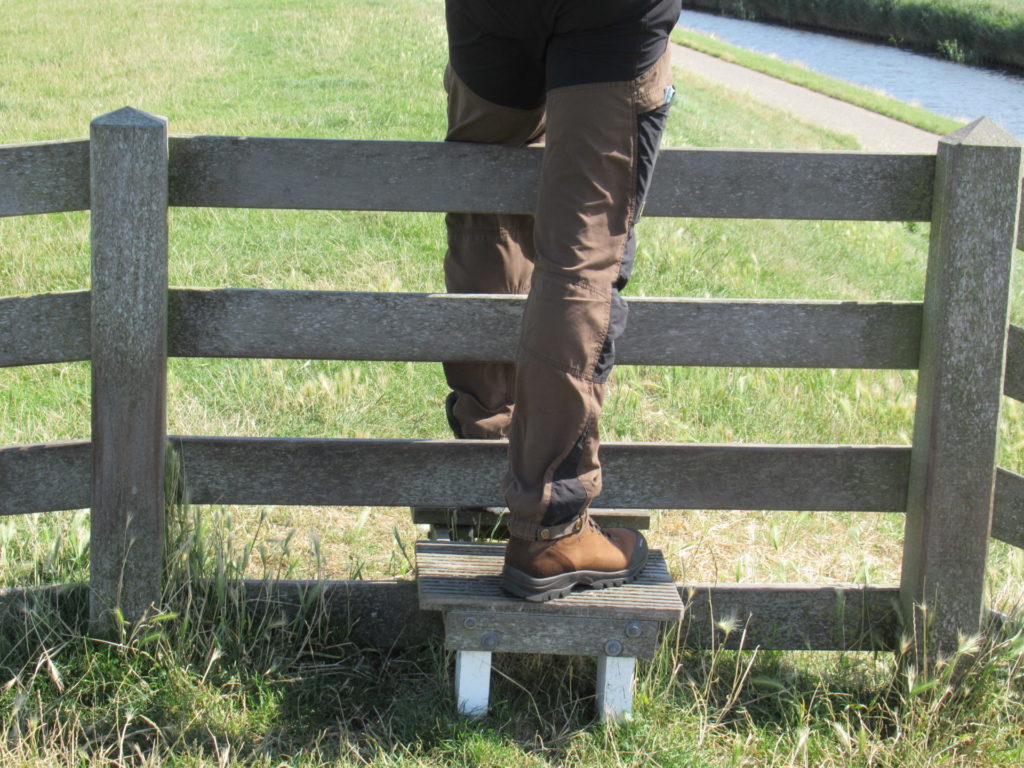
The fences are there to confine the Texel sheep to certain sections of the dyke. The sheep are kept company by water birds, like these black and white barnacle geese.
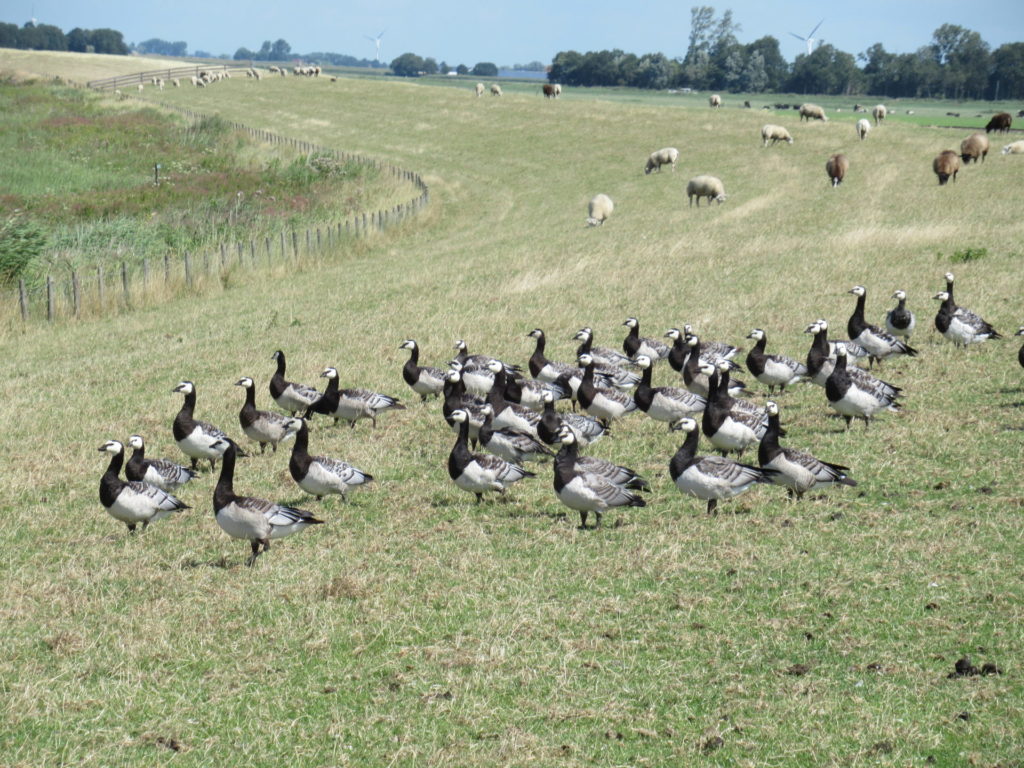
The sheep were not shy at all. They didn’t run away when we came close, like they usually do. We had to step around and over sheep and lambs lazing and grazing on our path. And some of the sheep were downright pushy. When we sat down on the grass to eat our sandwiches, they came begging for a share. They must have been fed by other walkers.
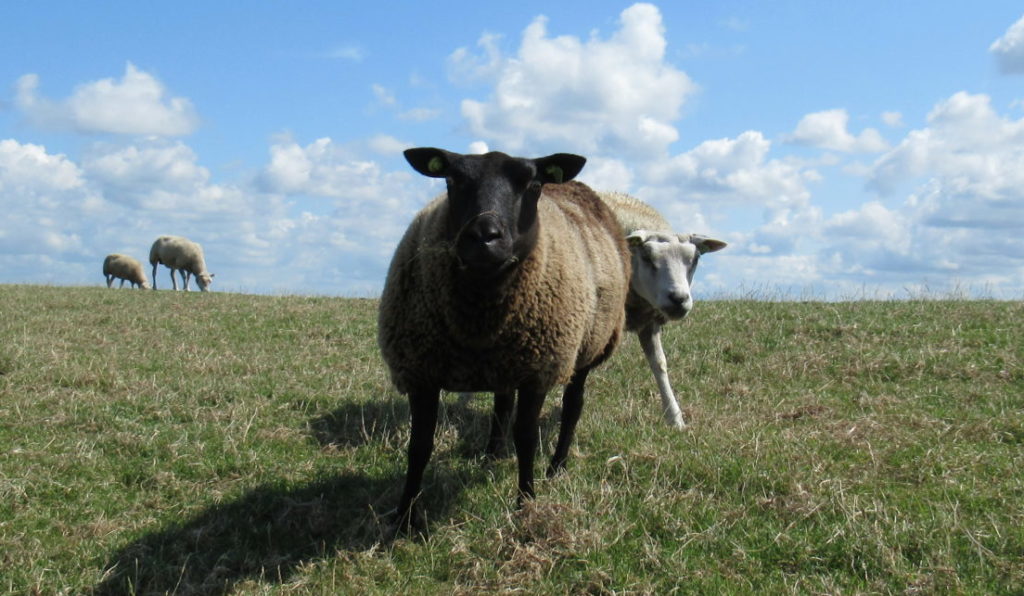
‘Come on, give us some of your bread,’ they seemed to say. And, ‘I really like the smell of that cheese.’ They refused to be shooed away and were so insistent, that in the end we got up and walked on, eating the rest of our lunch along the way.
In the distance we could already see our destination. It wasn’t just a perfect day for walking, but for wind and kite surfing, too.
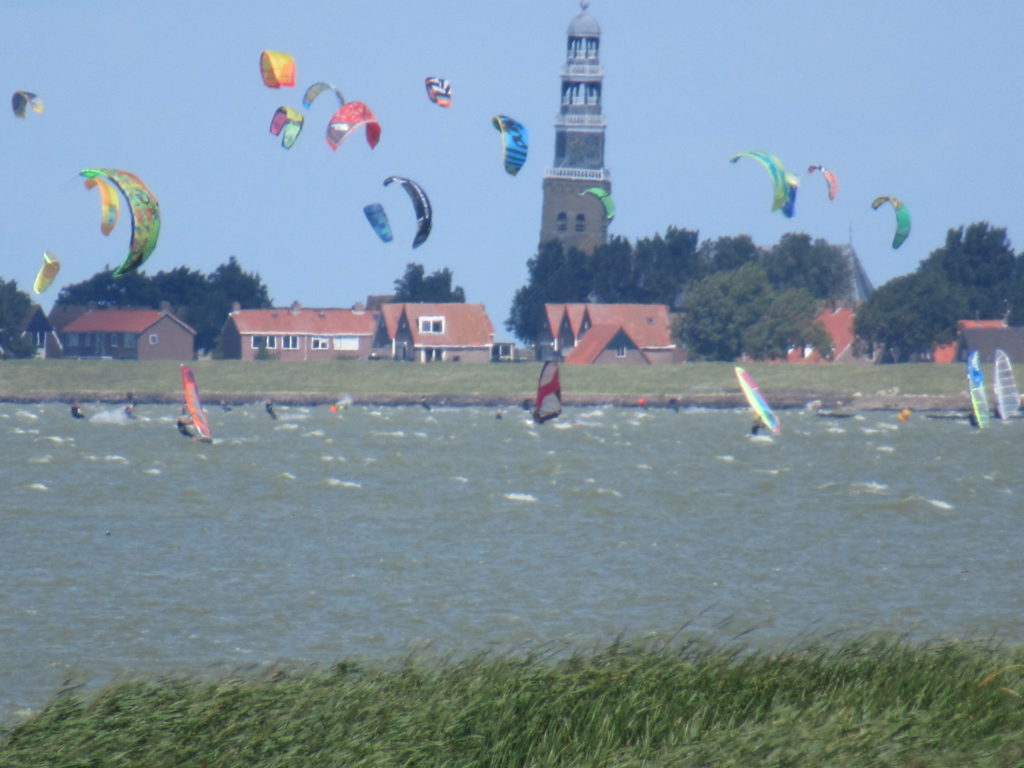
Against the big blue sky, Hindeloopen looked very small, with its church and the houses with their red roofs huddled behind the dyke. And, in fact, it is small now, with under 900 inhabitants. In the 17th and 18th centuries, when the lake was still a sea, it used to be an important harbour and trade centre, with three times the number of people and a fleet of around a hundred ships.
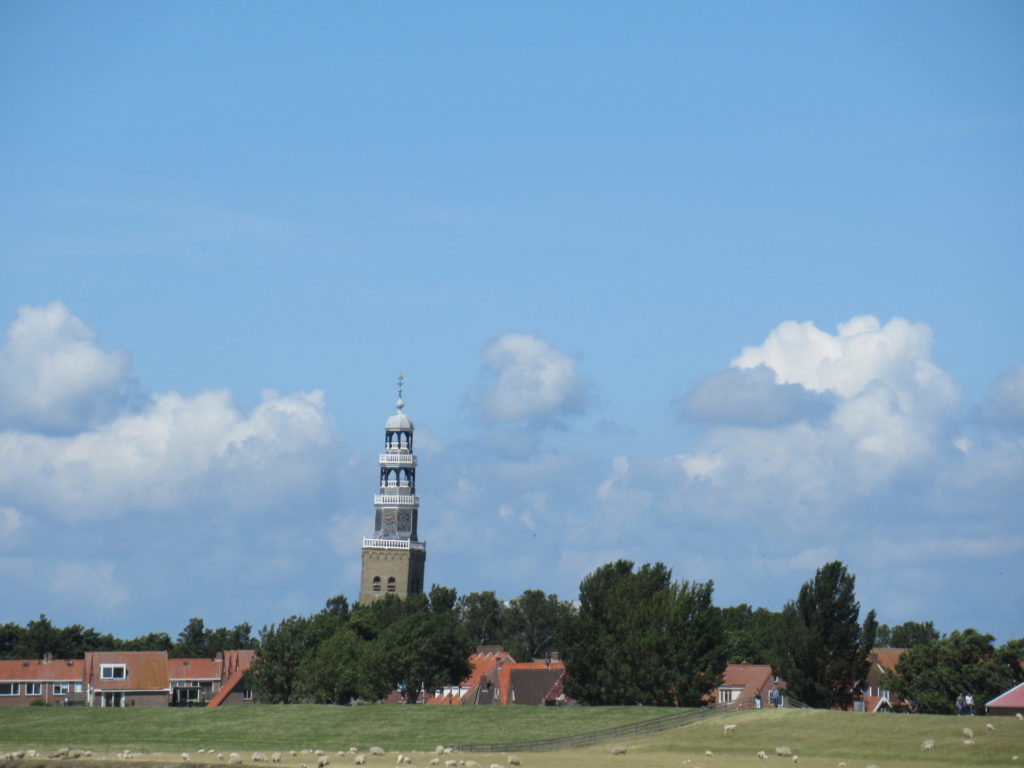
It’s nice to imagine merchant ships leaving and entering the town via the lock (photo below) that is now used by pleasure boats. On their outward-bound journeys they would be filled with gin and wool. And coming back from Scandinavia and Russia they would be carrying wood.
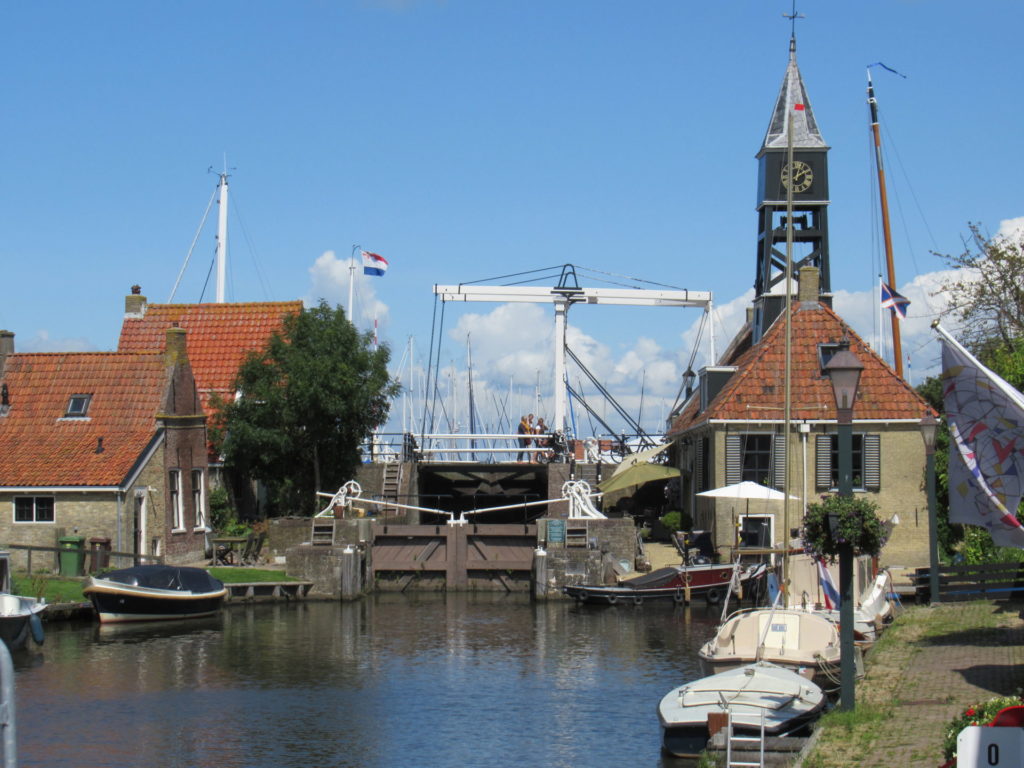
We slowly strolled through the old town centre and saw some monumental merchant’s houses – a sign of great wealth in earlier times.
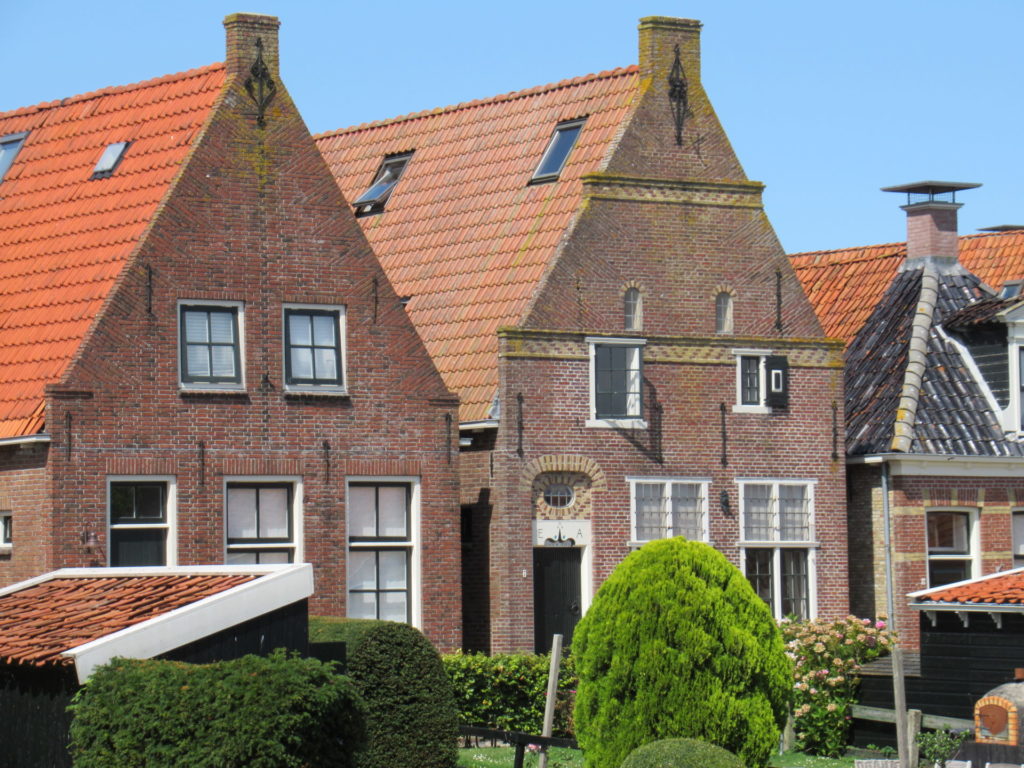
There was a museum, too, as well as several shops selling local traditional crafts. Hindeloopen is renowned for its decorative painting style, with garlands and stylized flowers on a red, green, blue or cream background. Here are several trays and a ‘butte’.
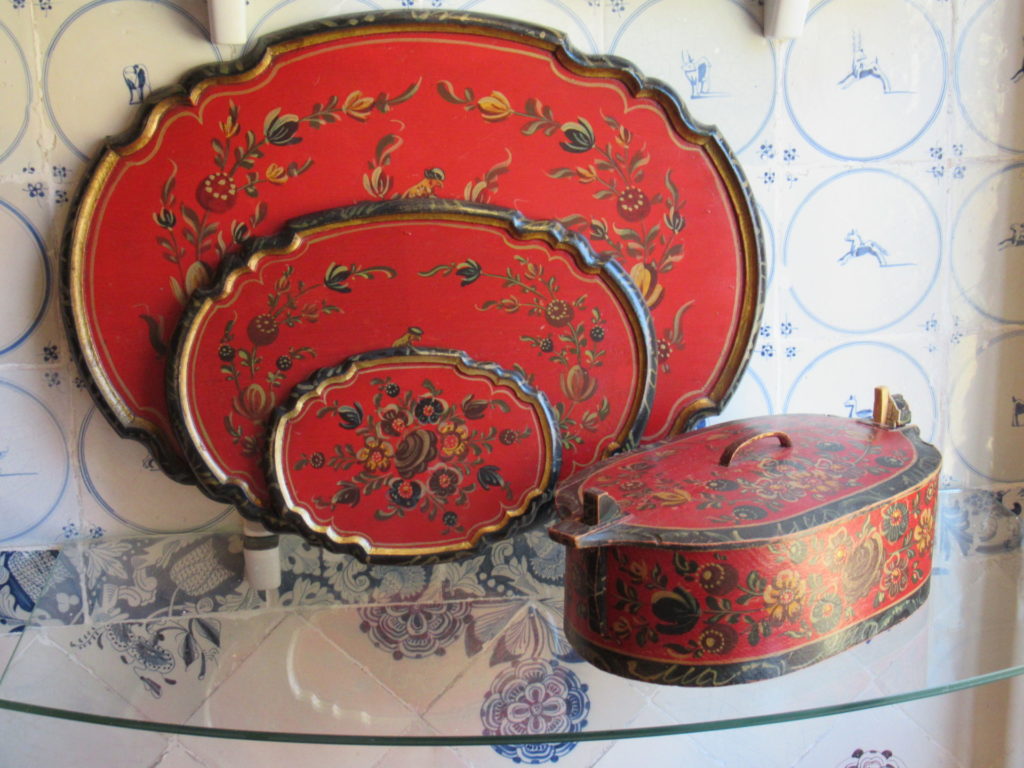
A butte is a traditional travelling case used by seamen for their personal belongings. I think it’s a thing of beauty and would like to own one someday. But as it’s all handmade, it has quite a hefty price tag. It’s not that it isn’t worth it, but it isn’t an amount I’d spend on a whim.
I came home with some more modest souvenirs – two pieces of fabric and two postcards.
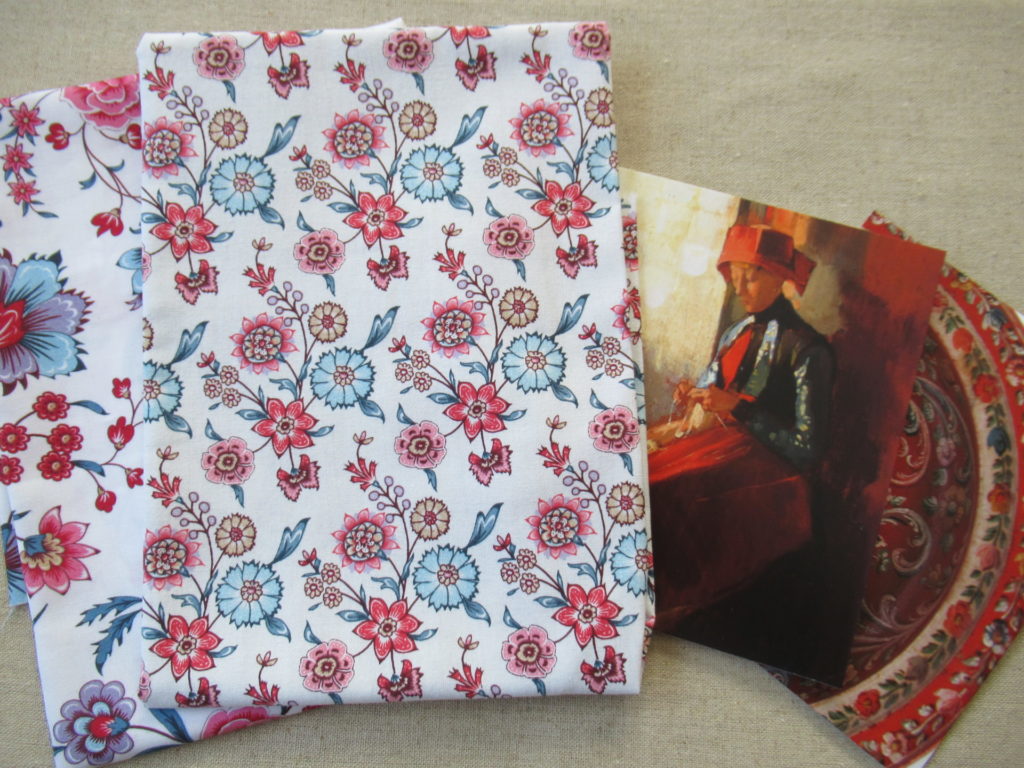
The fabrics are inspired by some of those used in the colourful traditional costumes of Hindeloopen. I don’t know what I’m going to use them for yet, but I’ll think of something.
One of the cards shows some of the typical decorative painting on a wooden platter. And the other shows a woman in traditional dress. (Unfortunately the postcard doesn’t tell us who the artist is.) In the painting, the fabrics are simplified to solid colours. In reality they would be flowered and checked, in mainly red, blue and white. There’s an picture of a complete costume on the town’s museum website.
And what is the woman doing? Knitting – what else?
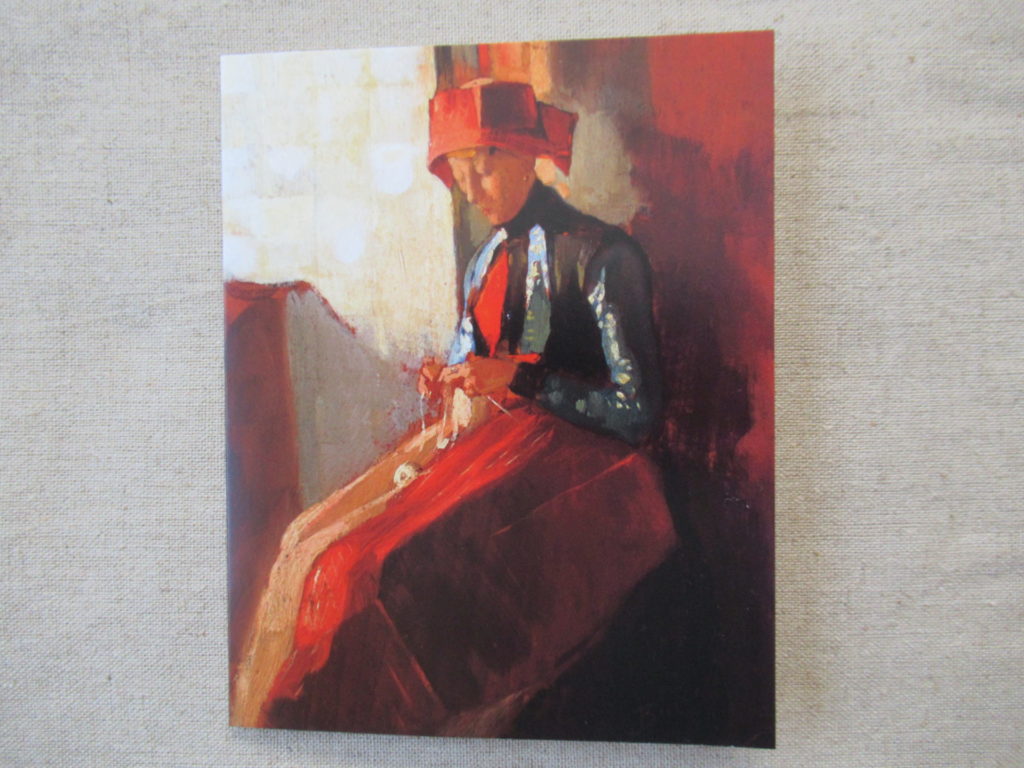
Summer Walks Part I – Heathland
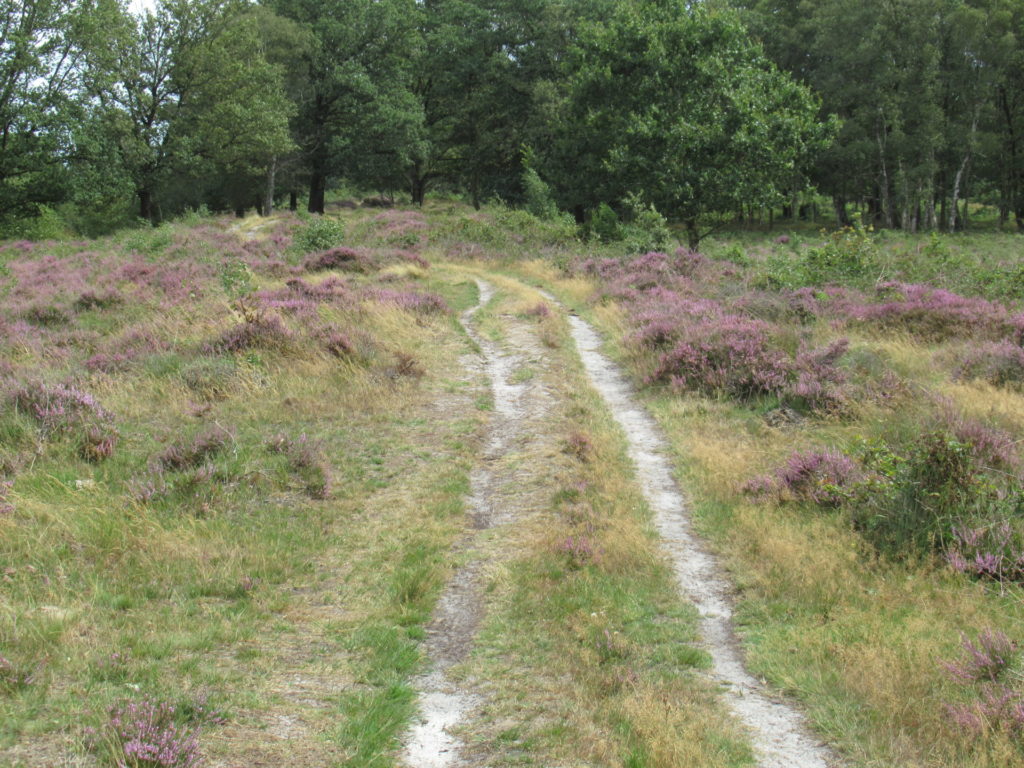
For me, one of the best ways to relax is walking. Fortunately I have a husband who feels the same way, so we spent large parts of our Summer Holiday this year (and any other year) taking long walks. Woodland walks, coastal walks, riverside walks, city walks, but most of all heathland walks. The heather is in bloom this time of the year and it’s glorious!
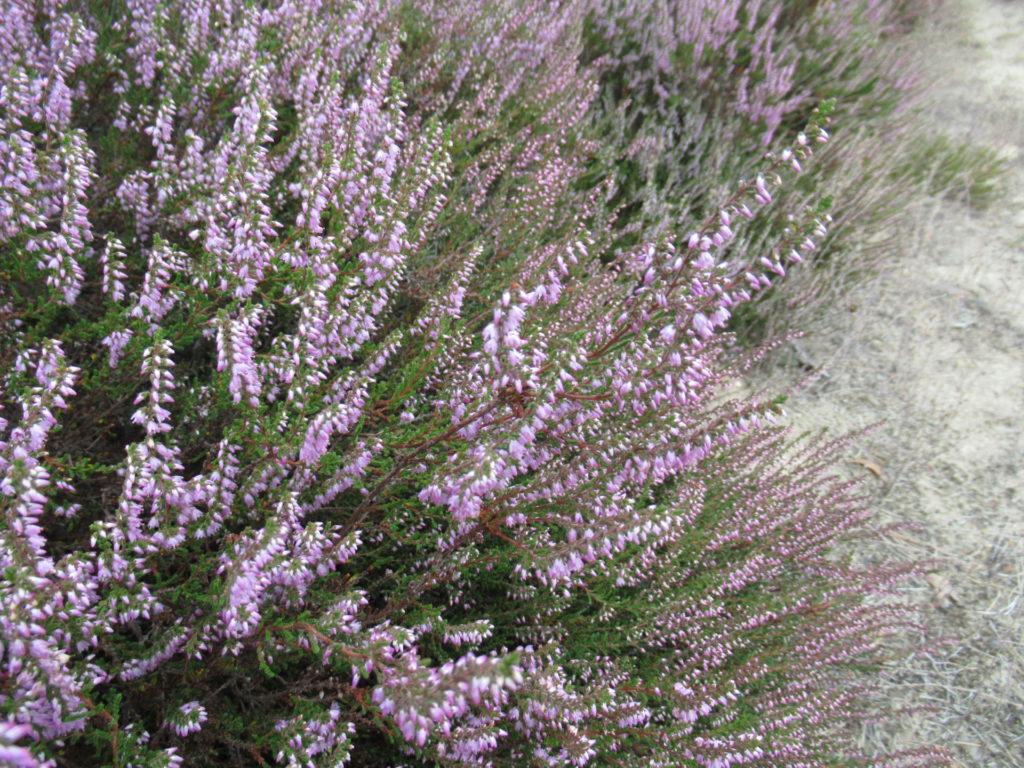
As I wrote in a previous post, heathland needs to be grazed. Otherwise it would be overgrown with trees in no time and disappear within a few years. Usually this is done by sheep, whose cropping and munching is a peaceful sight.
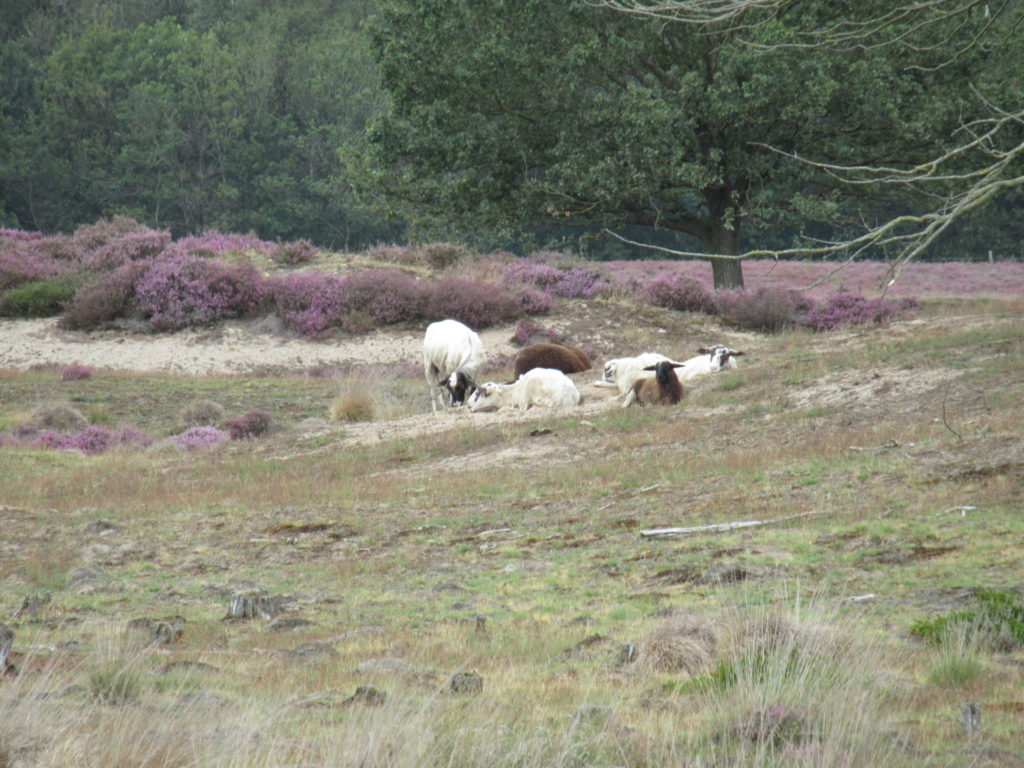
But sometimes cows are recruited to do the job, especially highland cattle. I think they are beautiful, with their big horns and their shaggy red coats.
I prefer to keep a respectful distance, but during one of our walks other walkers and their dog didn’t give the cattle a second glance and just barged on, right between a bull and his harem with their calves. This seemed to agitate the bull, and instead of continuing to graze, it suddenly charged across our path.
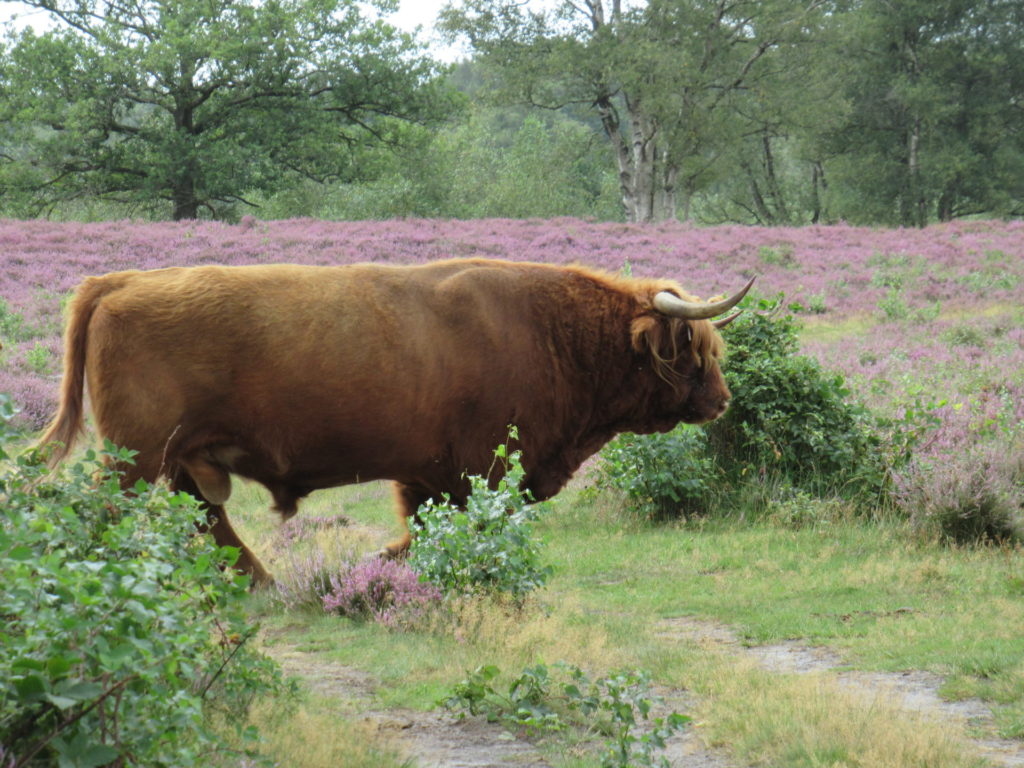
I held my breath, but nothing happened. As it turned out, the entire highland family was just as peaceful as sheep. All they wanted to do was go for a swim together.
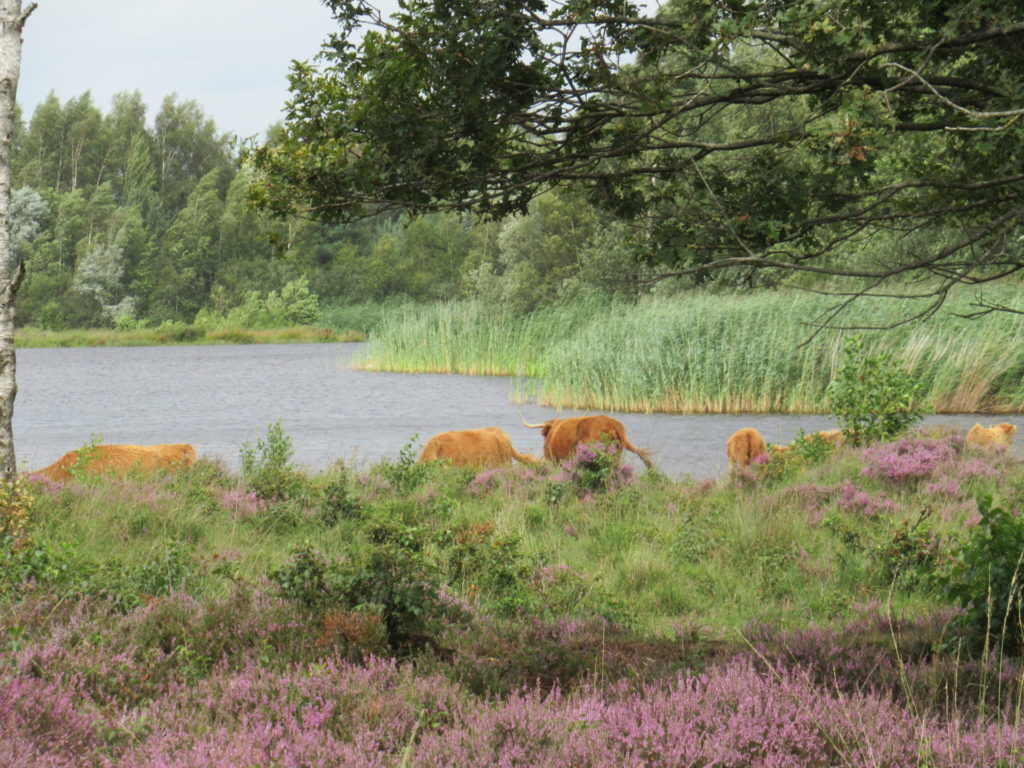
We live in a small country, and our nature reserves are comparatively small, too. This means that long walks are hardly ever exclusively nature walks. They almost always cross some farmland as well. I don’t mind, really. I even like it. Some less intensively farmed land can be very beautiful to walk across.
Besides, I love looking at farmhouses and their outbuildings.
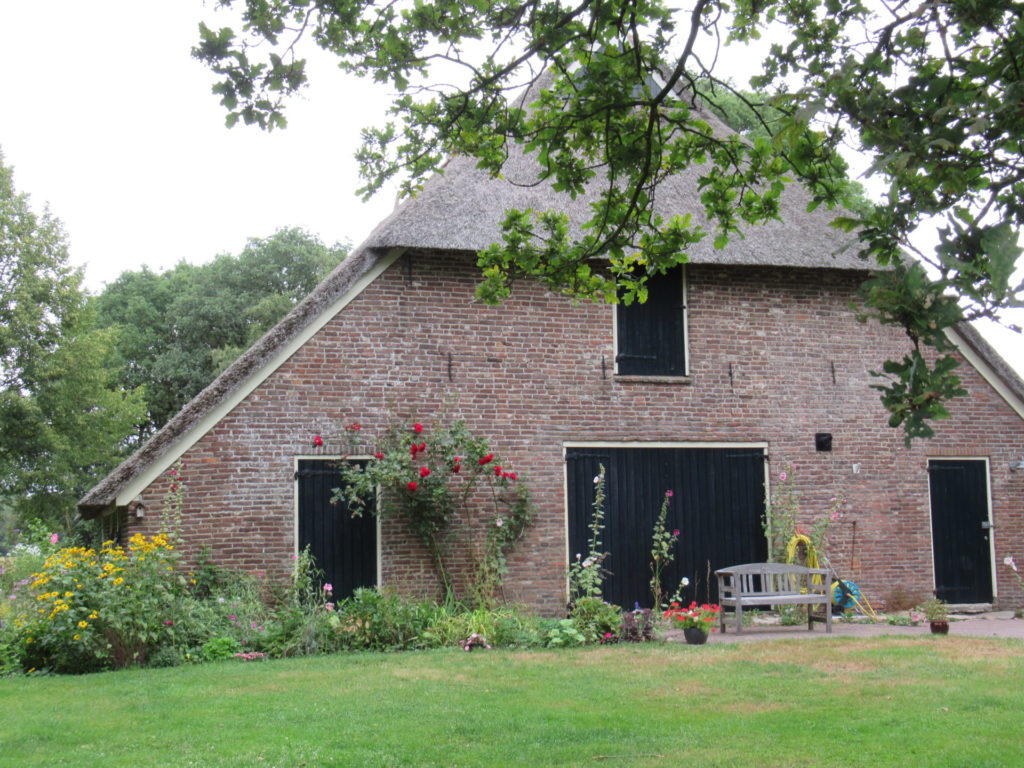
They often have lovely flower and vegetable gardens. The vegetable garden of one of the farms we passed was a riot of colour.
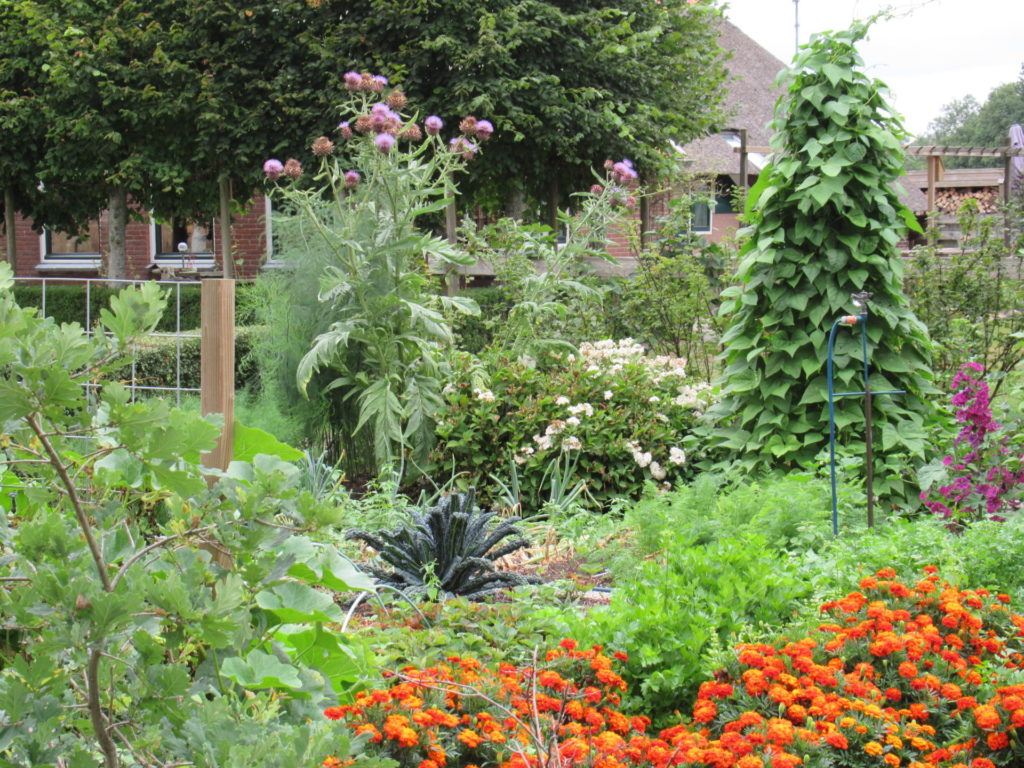
So, so lovely.
And on some farms, there are animals to admire as well. On one farm we saw some magnificent long-haired Dutch Landrace Goats.
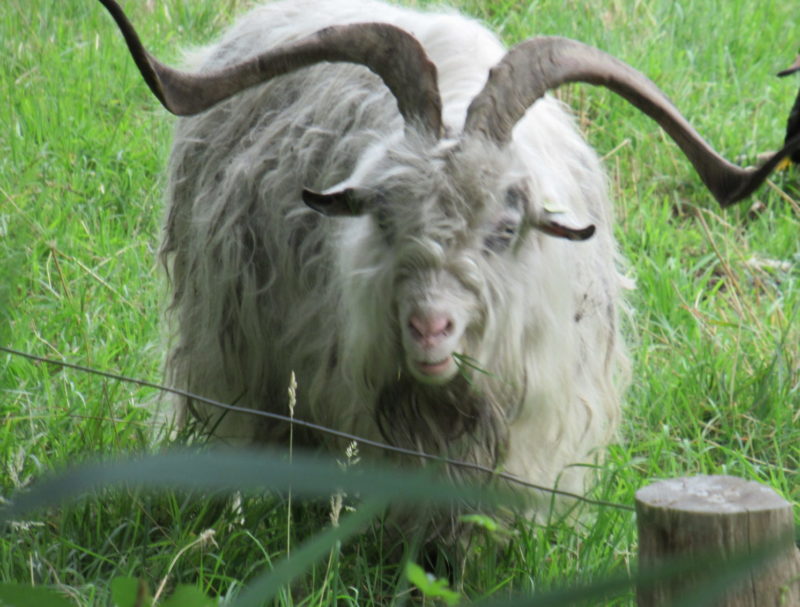
And on another a big, big spotted sow with a litter of piglets.
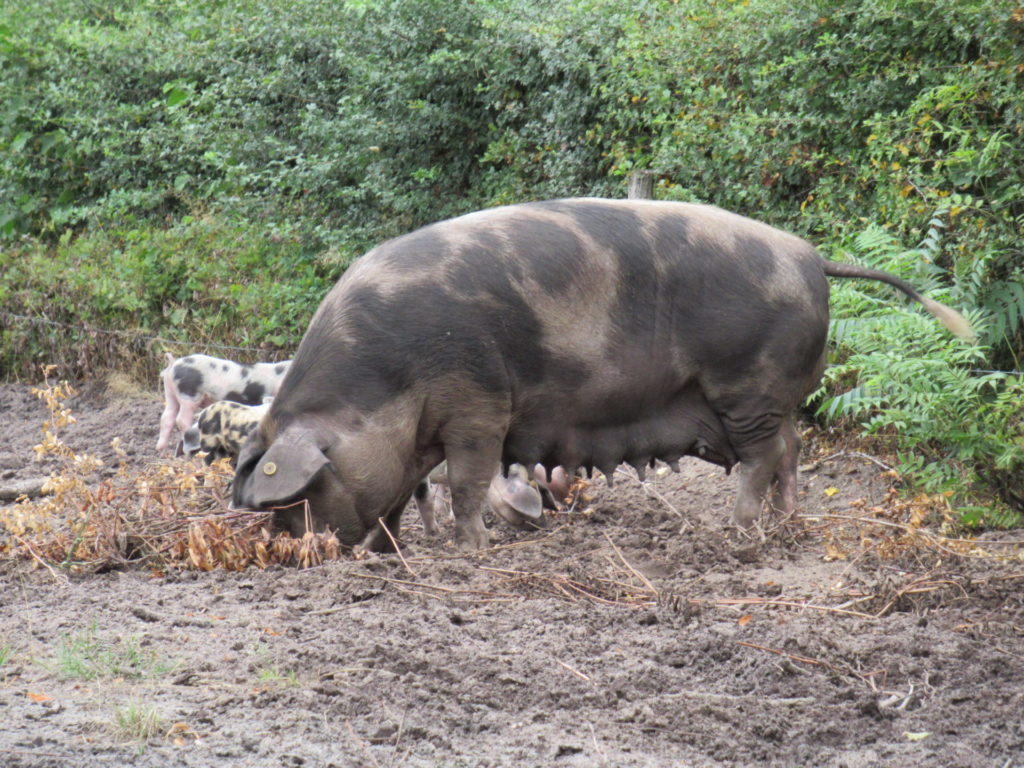
It’s so good to see them rooting about outside, with lots of space and freedom. The piglets were incredibly lively, inquisitive and cute.
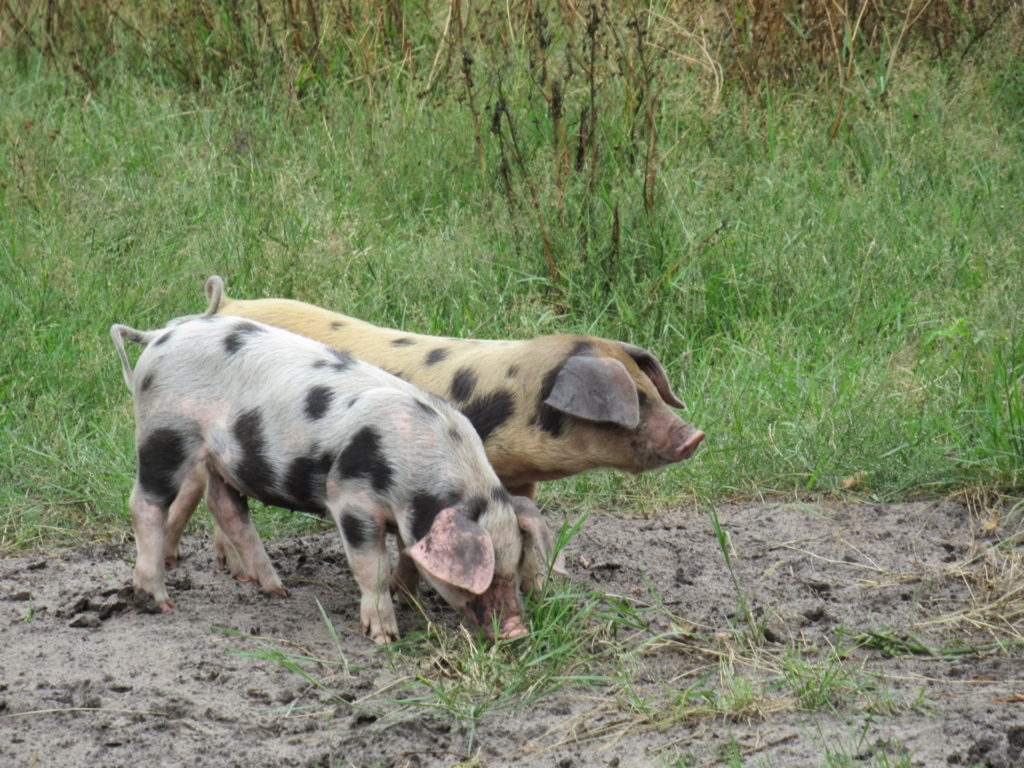
Taking photographs for my blog makes me look at the world with different eyes, and appreciate my surroundings even more. Sometimes my camera seems to see more than I do, and I don’t really realize what I’ve seen until I look through my photos at home.
Take the photo below, for instance. We were walking along a grassy path when I spied something in the distance, very far away. Judging by the colour and the shape of the ears, I thought it was a roe deer. Roe deer are not an uncommon sight, but still worth taking a picure of.
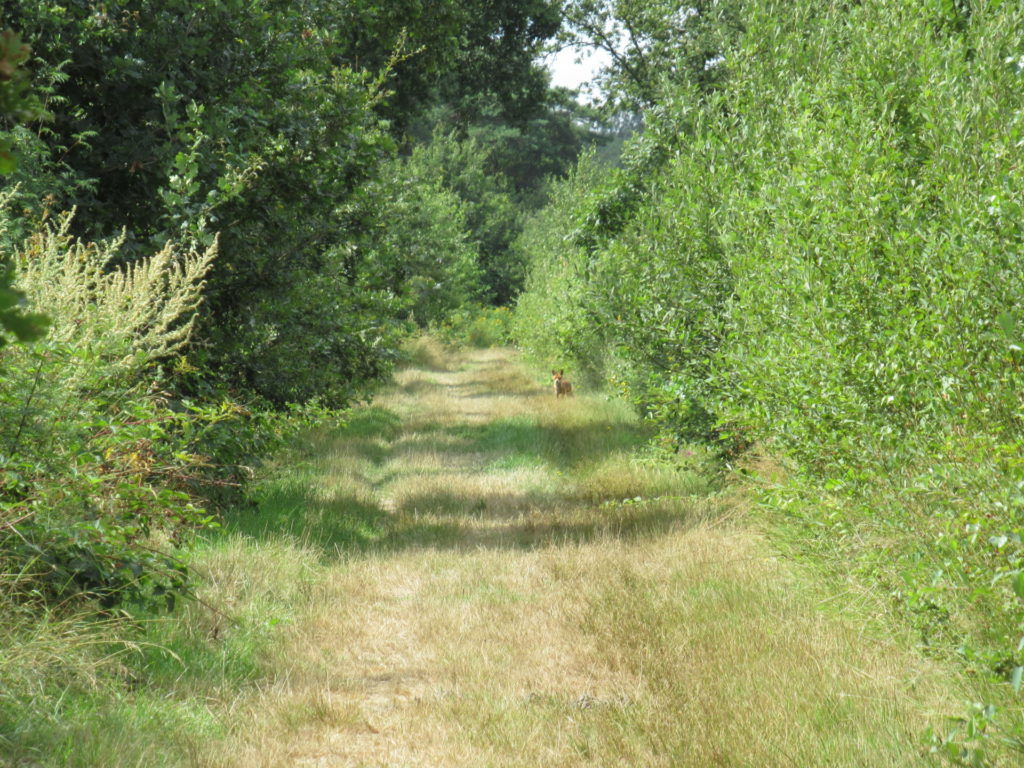
When we came a little closer, the animal got up and raced away. At the time I thought, strange how small a roe deer can look from a distance, and how short its legs look in the grass, but didn’t give it much thought.
Looking through my photos at home, I realized that it wasn’t a roe deer at all, but a fox!
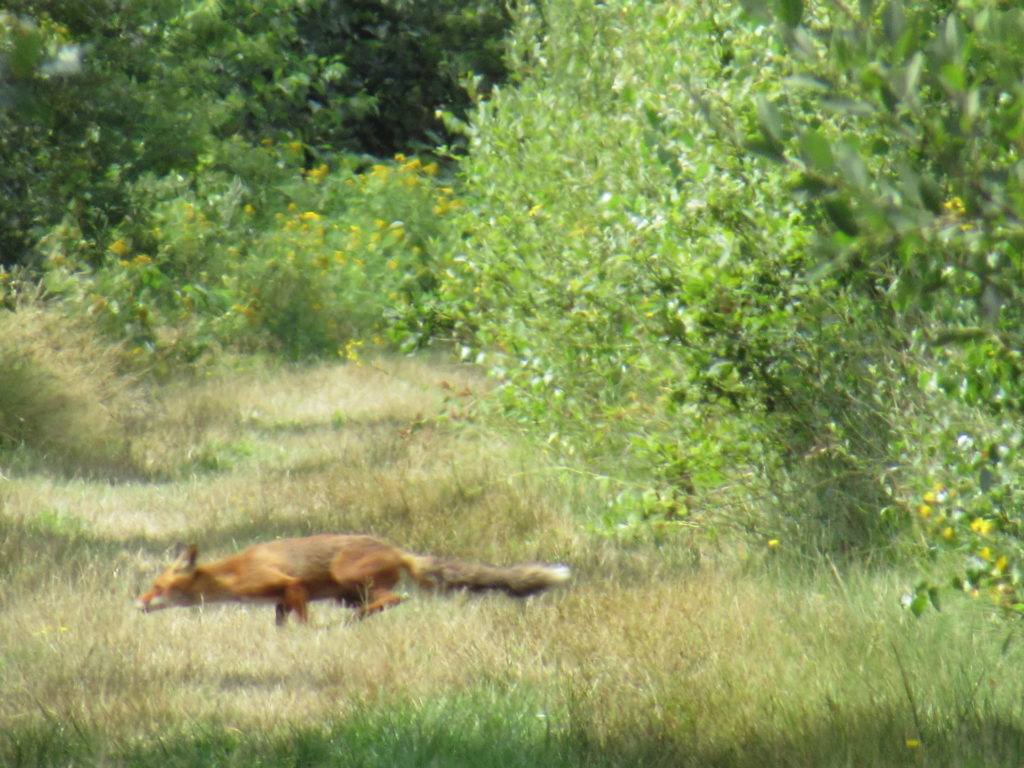
We know that there are foxes around here. It’s something we know all too well, from the massacres they’ve caused among our hens. Twice! (Our chicken coop is now completely fox-proof). But we very, very rarely get to see them. In spite of what they did to our hens, I love foxes. I don’t know why, really. Is it the shape of their face, their big bushy tail or their speed and agility?
One of the best things about walking is taking breaks at spots that you can’t reach in any other way. Quiet, out-of-the-way spots. This was one of the best spots for taking a break that we passed on this walk. A pool surrounded by trees and tall grasses, with the wind cooling our skin and sending ripples out across the water.
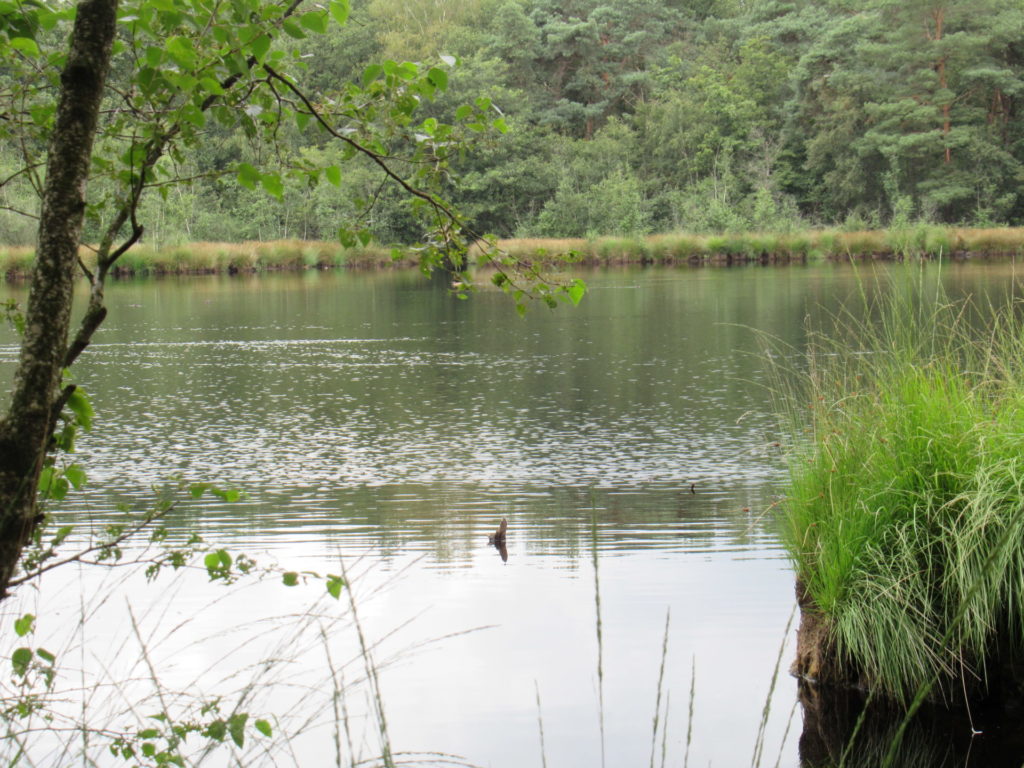
The water birds in the distance looked like ducks, but they made curious sounds, not like our ordinary, everyday mallards. I couldn’t see what species they were with my naked eye, so I zoomed in on them with my camera. Maybe I could enlarge them at home and find out which duck-like bird it was that made such soft un-duck-like noises. But no such luck.
I’m not a very good photographer, and I don’t have any fancy photo equipment. So, I ended up with some very blurry pictures, and one that was sharp, but had a beheaded duck on it. As far as duck pictures go, these photos were a total failure.
But then I looked at the rippling water and thought, wow, look at that!
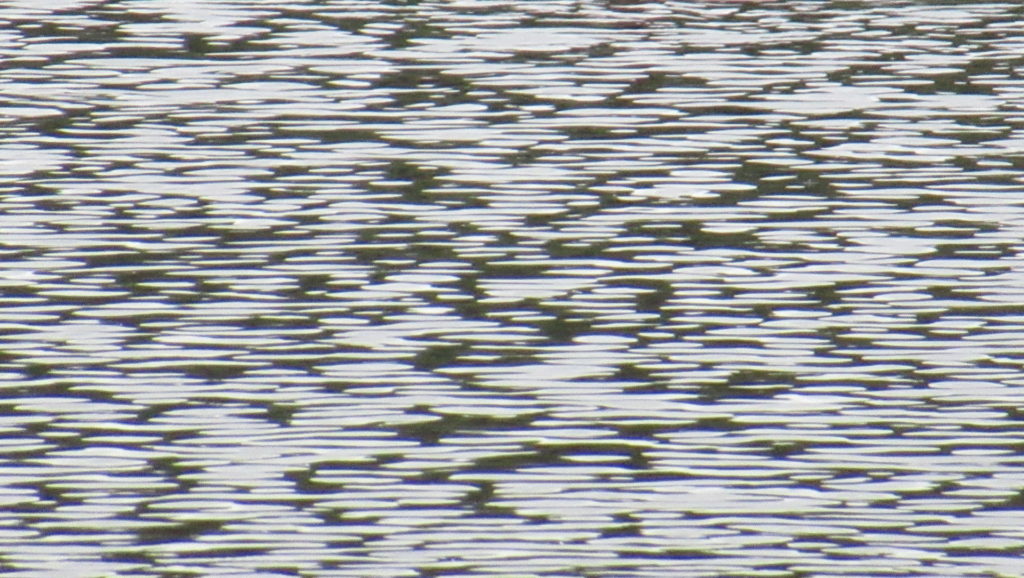
The ripples on the water look just like the texture of my knitted fabric!
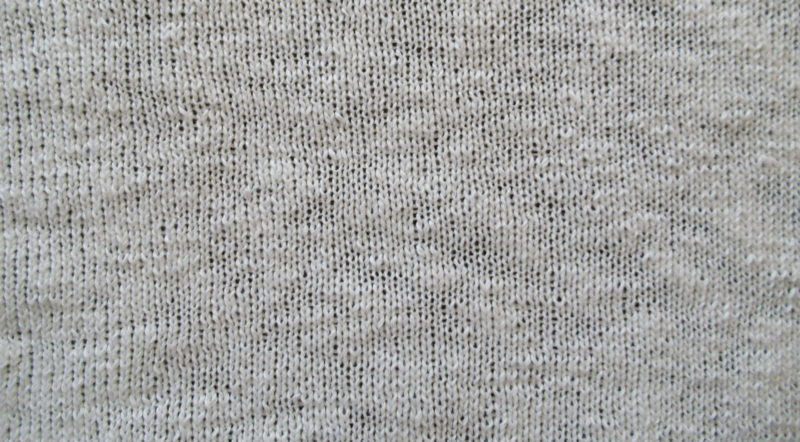
This is a close-up of the Sideways Tee that I’m knitting.
When we’re on holiday, we often spend the evenings exploring the immediate surroundings of our holiday cottage or campsite. During our ‘staycation’ there was no need for that. We already knew the surroundings of our ‘holiday home’ through and through, so that I could spend almost every evening, all evening, knitting, reading or working on my crochet project.
I’ve made a lot of progress, but haven’t actually finished anything yet. I need a little more time to finish things up, organize my notes and take pictures before I can show you more.
I hope you don’t mind if I take you along on another walk next time. I’d like to show you a very different part of our country, and some crafty things I came across there, before I get back to some in-depth writing about knitting.
Apricot and Thyme Clafoutis
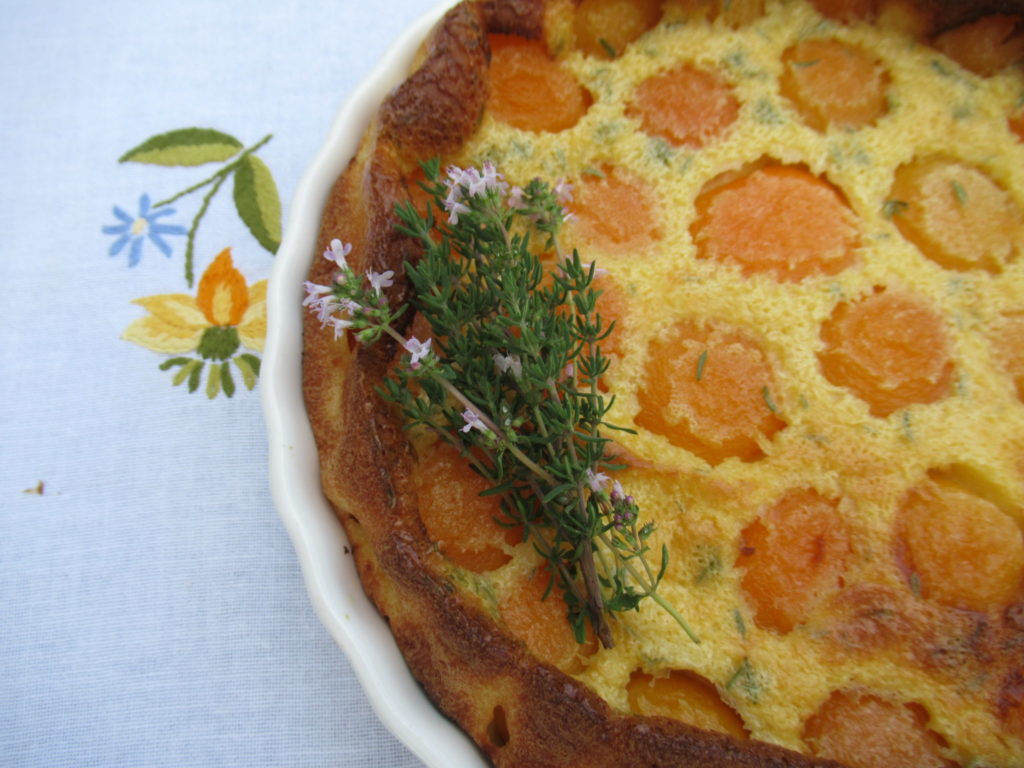
Hello, I’m back! Well, I haven’t really been away. Just away from my computer and my blog for a while.
We’ve had a really, really nice and relaxing ‘staycation’, with lots of lovely walks, visits to some old towns, cities and museums, and plenty of time to read, knit and crochet in between.
I’d like to tell and show you more, but I don’t know how just yet. I need to chew on everything we’ve seen and done for a bit first. In that sense I am like a cow. I don’t have four stomachs, but I also need to ruminate on things to digest them.

We met this beauty during our summer holiday, by the way. She lives on an organic farm that we passed on one of our walks:
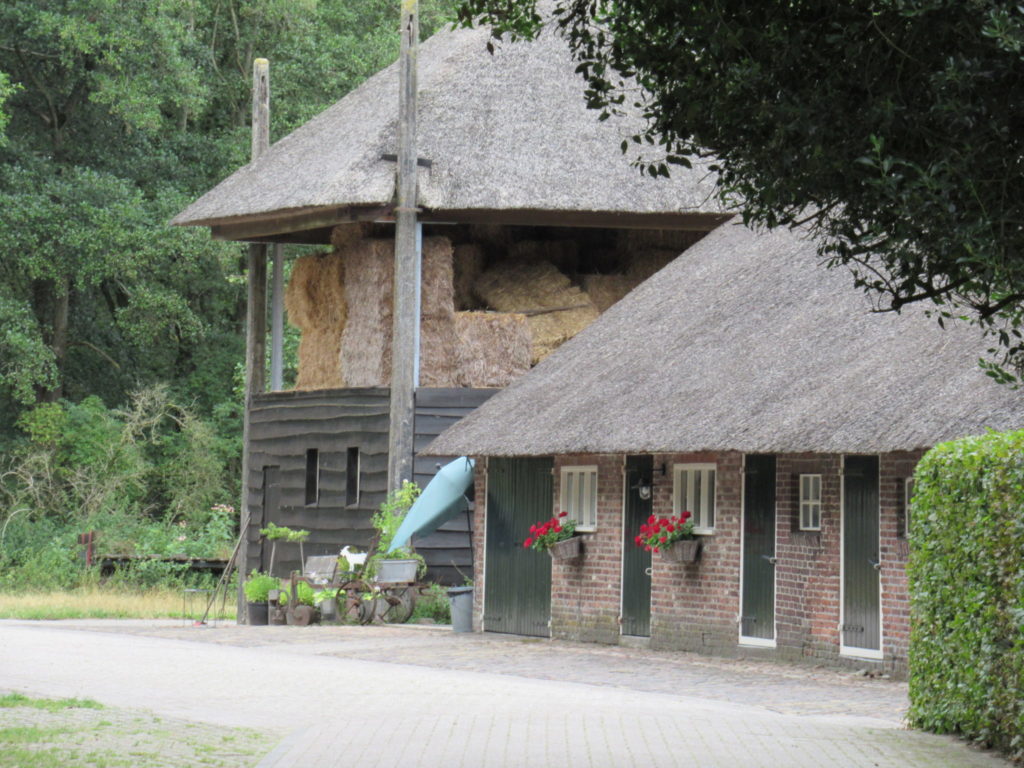
The farmer doesn’t only take good care of his cattle, but also of the occasional passer-by. Between the barn with the red pelargoniums and the hay barn, where you can see a green parasol peeking around the corner, there’s a wonderful cupboard built into the barn wall. It’s filled with coffee, tea, biscuits and all kinds of other snacks. Just help yourself and leave some money in the box. There’s even a bowl of water for dogs!
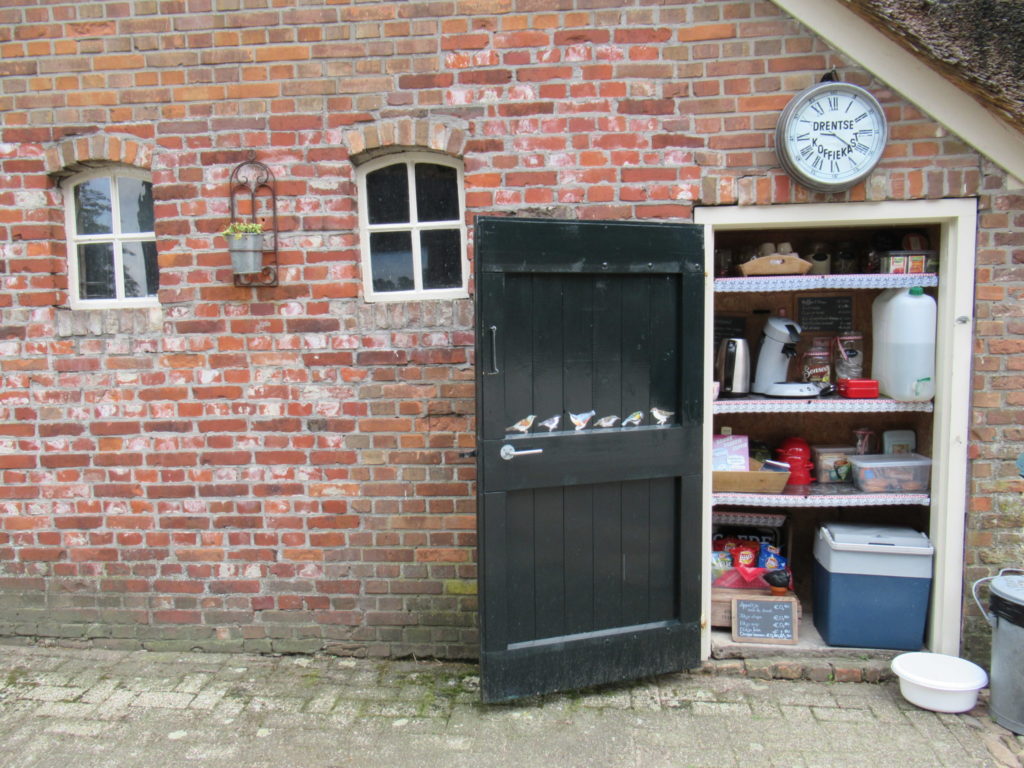
Oh, there I go again, getting off course. It happens so often – one thing leads to another, and before I know it I’ve strayed completely from where I was going. Well, at least now you’ve had a tiny glimpse of our holiday at home.
What I had planned to do today, was give you a recipe. I may have told you before that we have a flock of hens – 8 hens and a cock to be precise. They are Frisians, and their colourway bears the poetic name ‘silver-pencilled’, which looks like this:
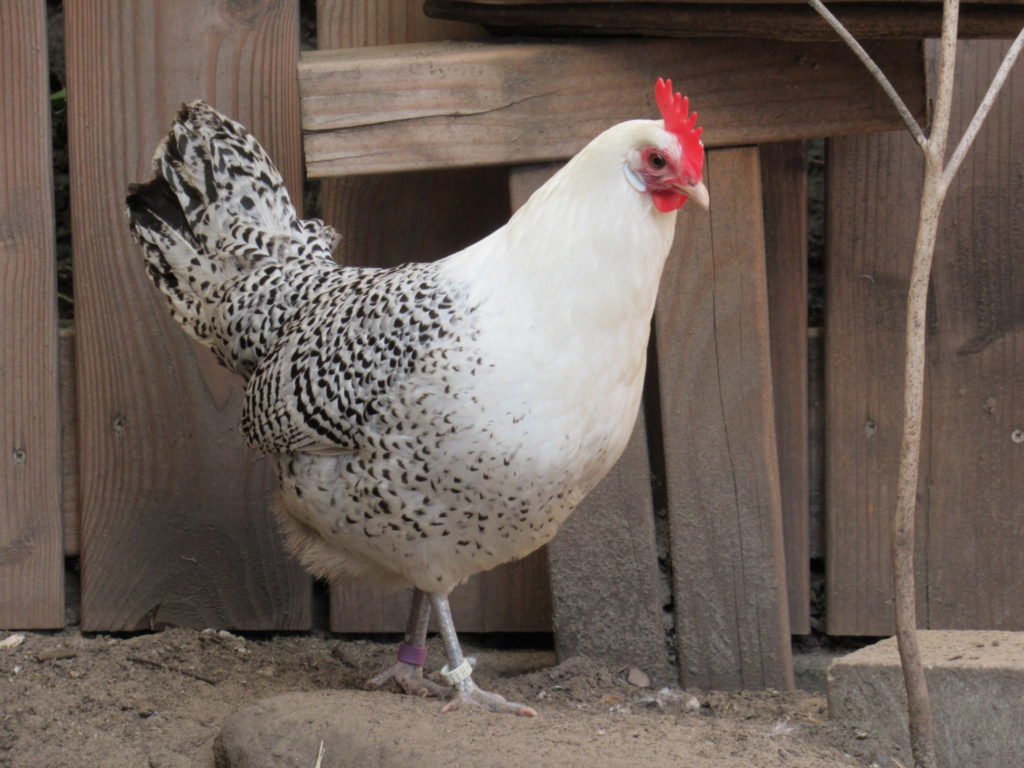
Our hens love tomatoes, corn, worms and taking dust baths. Apart from worms, we try to give them everything they wish for. In return, they provide us with more eggs than we can eat. We give lots of eggs away to relatives, friends and neighbours. And we’re always trying to think up new ways of using eggs ourselves.
The eggs are pure white and fairly small. I use 3 of these for 2 medium shop-bought ones. Some are oval and pointy, while others have a more rounded shape:
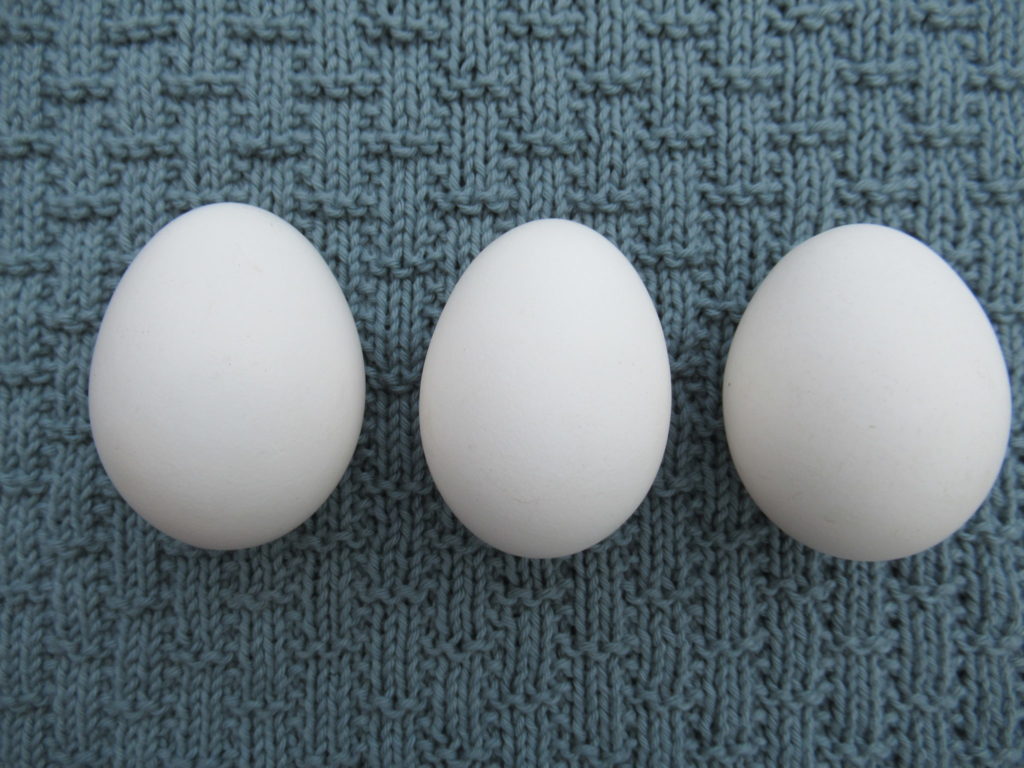
(I photographed the eggs on one of the dishcloths I’ve been knitting. More about those in another blog post soon. Or perhaps not so soon. There are so many ideas for posts whirling about in my mind that I don’t know where to start.)
Besides eggs, we’re also trying to use as many herbs in our cooking as we can too. This time I’m using thyme. We have three different varieties in our herb patch. Use any thyme you like – dried thyme from a jar is fine, too. Don’t use too much, though. It can be overpowering in combination with fruit.
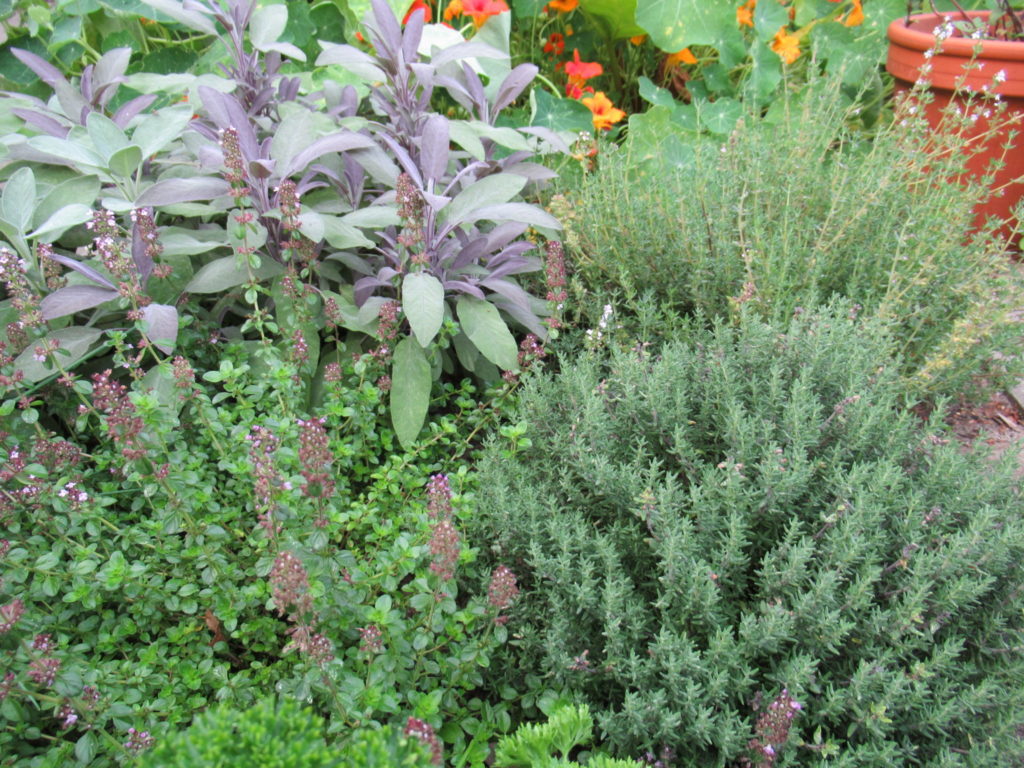
The recipe below is for a Clafoutis – a French dessert that is usually made with cherries, but can also be made with plums or other fruit. I chose apricots because I thought they would work well with thyme. (I used canned apricots, because we can hardly ever get any fresh ones, and when we can they are often dry and not very tasty.) Here’s my recipe:
Apricot and Thyme Clafoutis
For a Ø 22 cm pie dish, serves 4
Ingredients
- 3 small Frisian eggs (or 2 medium shop-bought eggs)
- 150 ml milk
- 50 g flour
- 270 g tinned apricot halves (drained weight)
- a few sprigs of fresh thyme (or ¼ tsp dried thyme)
- 1 tbsp butter + extra for greasing
- 50 g sugar
- pinch of salt
- icing sugar for dusting
Method
- Preheat the oven to 200 °C (fan oven 180 °C).
- Grease the pie dish
- Sieve the flour together with the salt and sugar.
- In a separate bowl, loosely whisk the eggs with half of the milk. Stir the egg-and-milk mixture into the flour little by little to a smooth batter. Melt the butter. Whisk the rest of the milk and the butter into the batter.
- Distribute the apricot halves over the pie dish (hollow sides down). Pour over the batter and bake in the oven for 30 minutes.
- Eat warm or cold, dusted with icing sugar.
Enjoy!
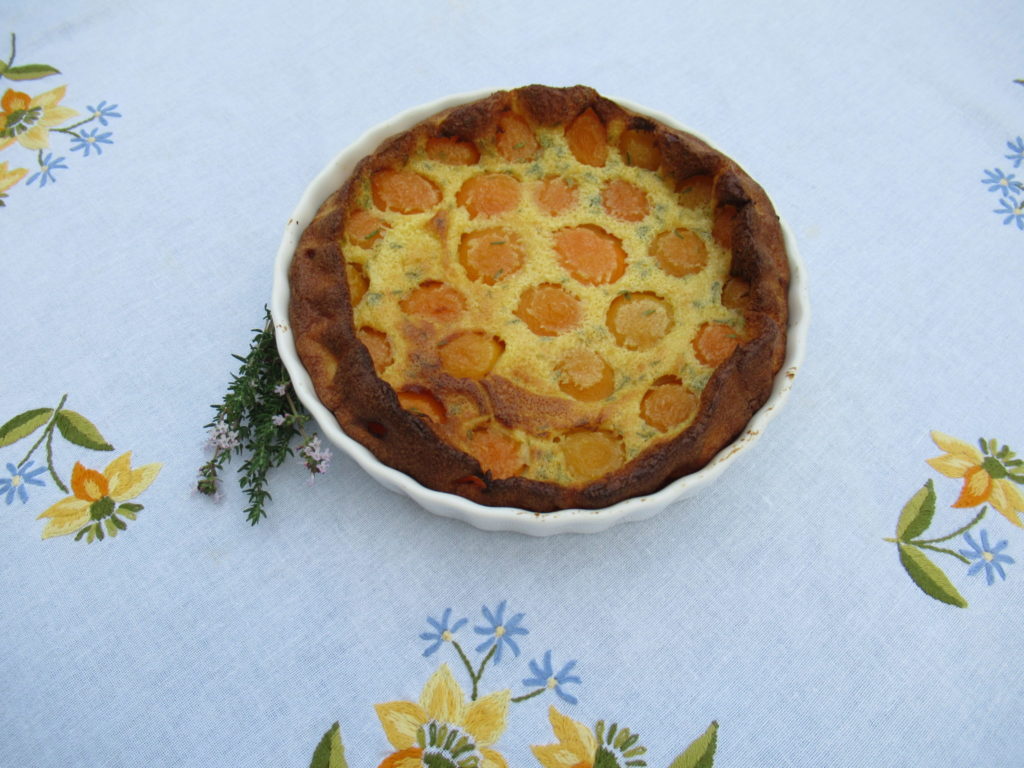
The table cloth underneath the oven dish was embroidered by my late Mum. She was a great knitter, too, but she loved embroidering these colourful pre-printed table cloths most of all. For me, there are many good memories attached to it.
Well, I hope you’ve enjoyed my ramblings and my recipe. And I hope to get back to some serious knitting in my next post, because I’ve received some urgent questions from readers that I need to look into…
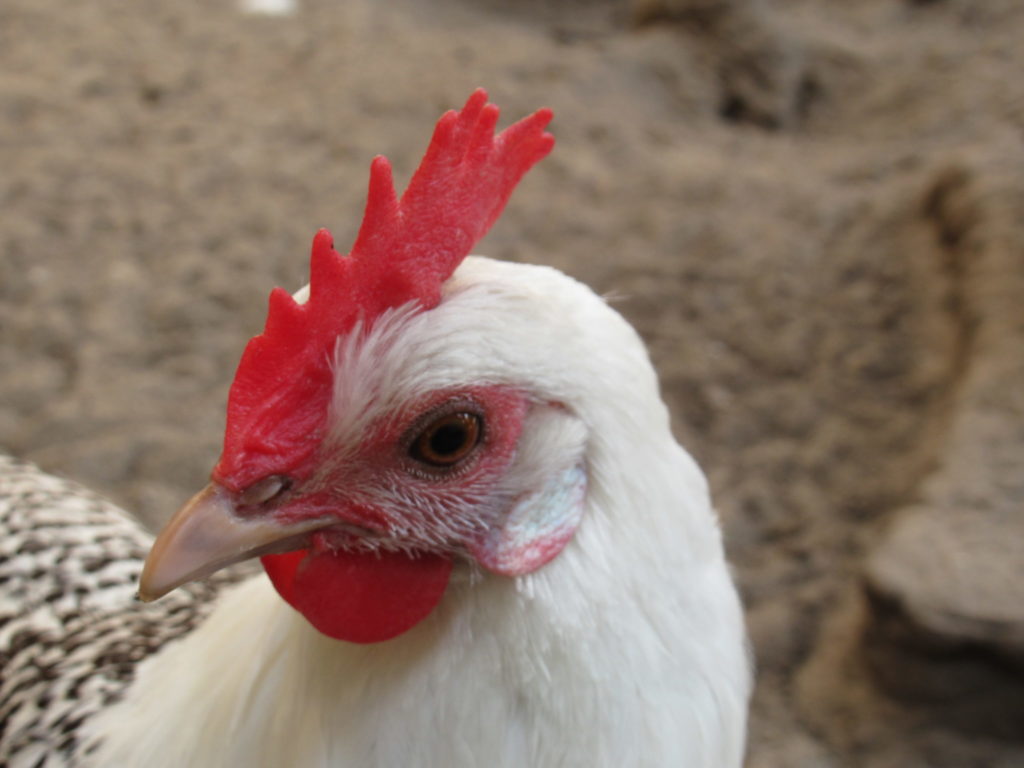
Herb Teas and Honey Bees
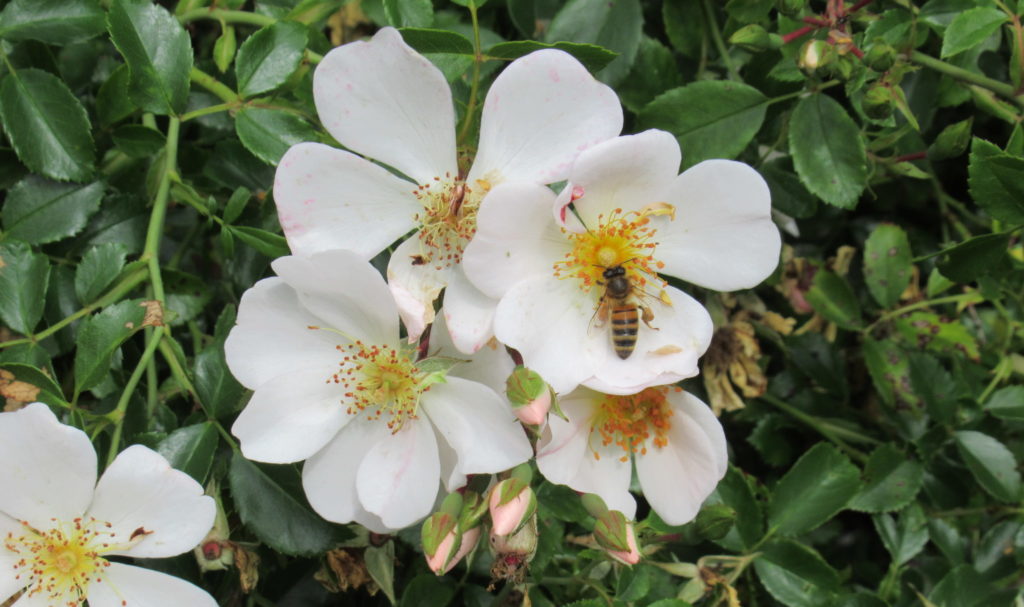
Hello again! I hope you have some time in your busy day for a leisurely scroll through our garden, a visit to a beekeeper, and a cup of tea and some knitting afterwards. Or perhaps you’re on holiday and have all the time in the world. Wherever you are or whatever your day looks like – welcome!
Today, I’d like to show you a new part of our garden. A part you haven’t seen yet – our herb patch. It isn’t very big (about two by two-and-a-half meters) but I’m very happy with it. Here it is just after we planted it mid-May:
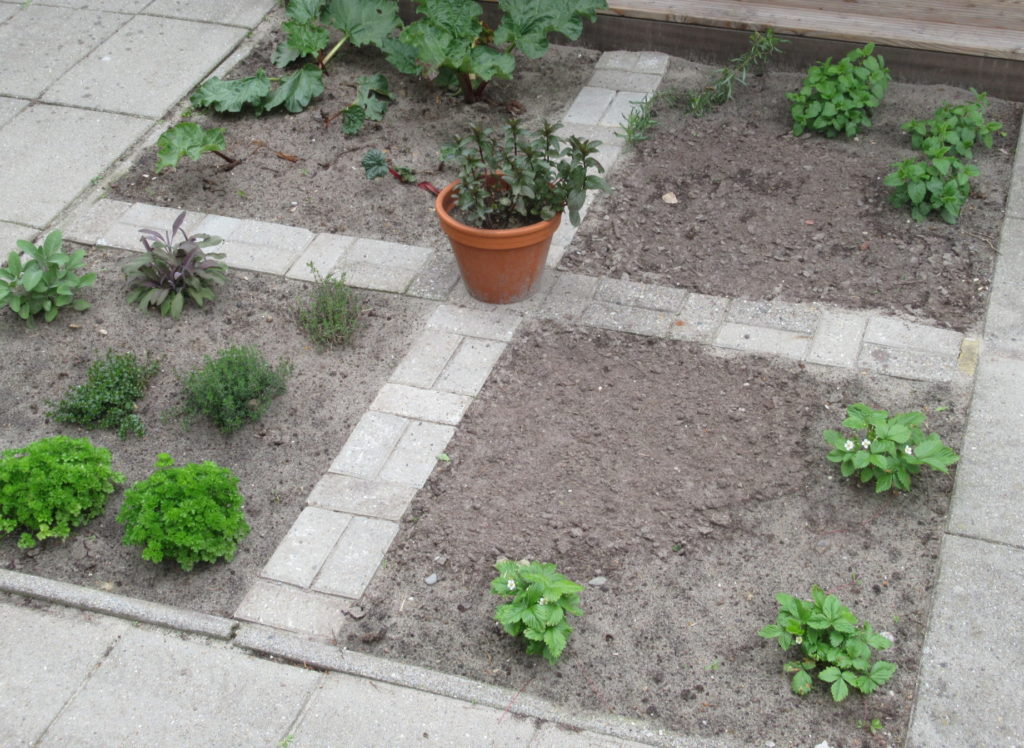
And this is what it looks like now, two months later:
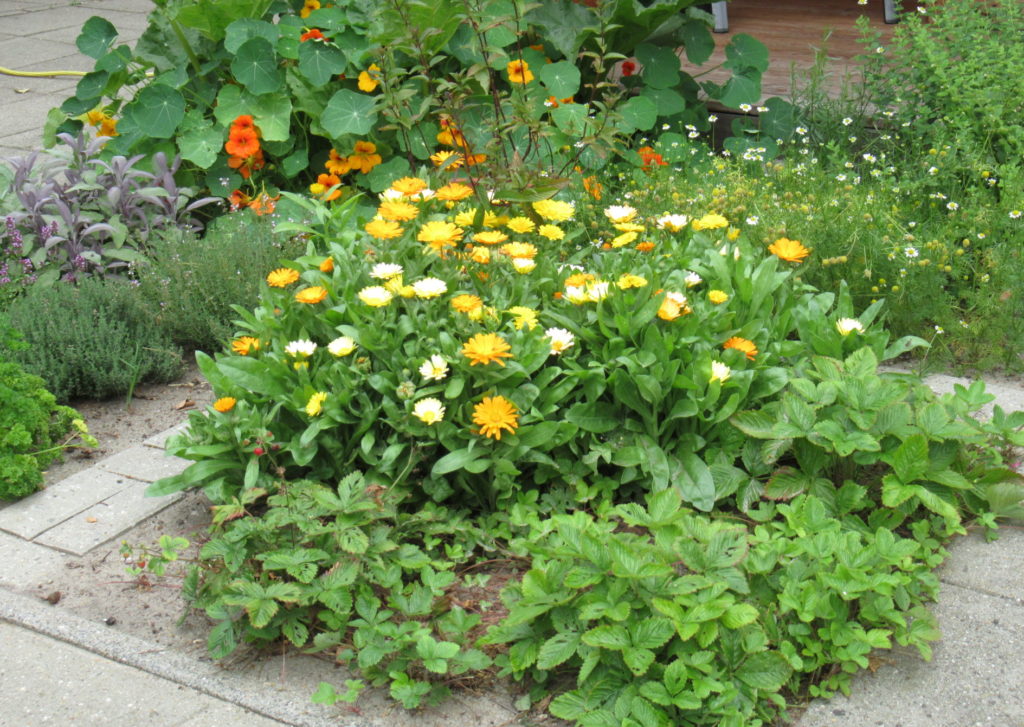
Isn’t it amazing how quickly things grow? There’s parsley, chives, thyme and sage for all kinds of savoury dishes. There’s rhubarb for stewing, nasturtium flowers for decorating salads, and ‘wild’ strawberries for enjoying straight from the plant. I don’t know what to do with the marigolds yet. I could use them to dye some yarn, but what would I do with yellow yarn? For the time being I’m just enjoying them for their cheerful colour.
And finally, there’s chamomile, peppermint and lemon balm. We’ll be making herb tea with those later. But first, let’s get some honey to sweeten it. If we hop on to our bicycles we’ll be at the beekeeper’s farm in under an hour. It’s a nice route along a canal, past some allotments, through a wood, and along a country lane.
Here we are. There are jars of honey and an honesty box at the roadside. We could just grab a jar and head back…
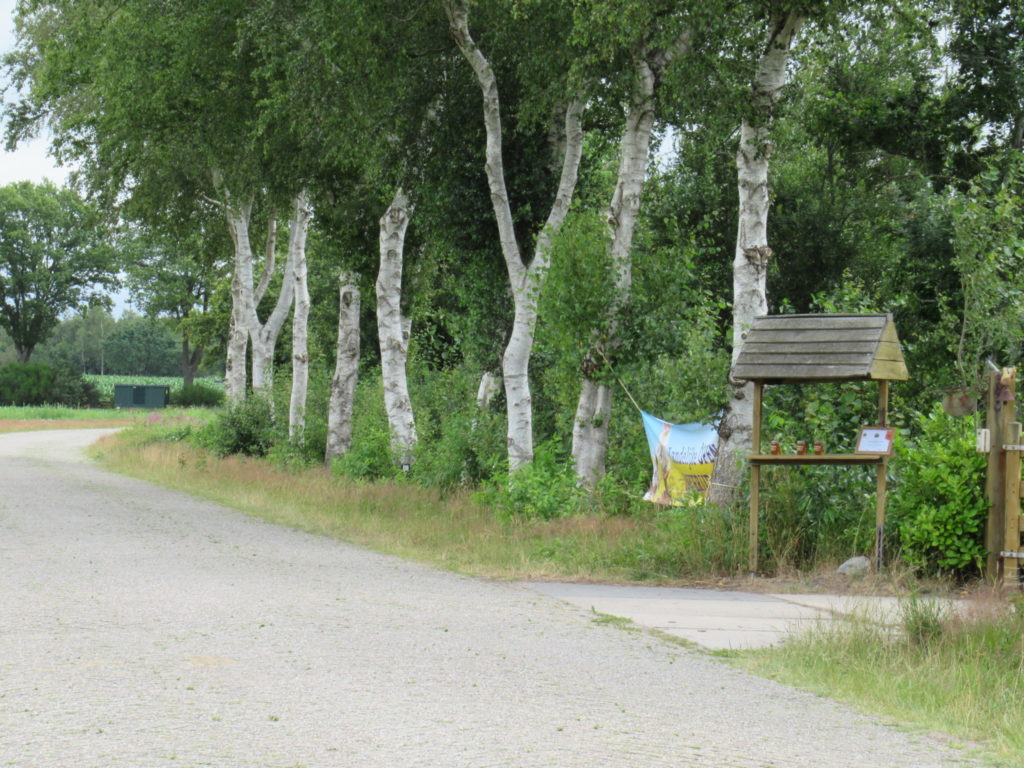
… but it’s much nicer to have a chat with the bee keeper and take a look at the bees. We need to put on a special beekeeper’s jacket with hood first. The bees are very quiet today, but it’s better to be on the safe side.
Do you see the line of trees the beekeeper is pointing at? Behind them there’s a nature reserve, with heather and all kinds of other flowering plants, shrubs and trees where the bees get the nectar for their honey.
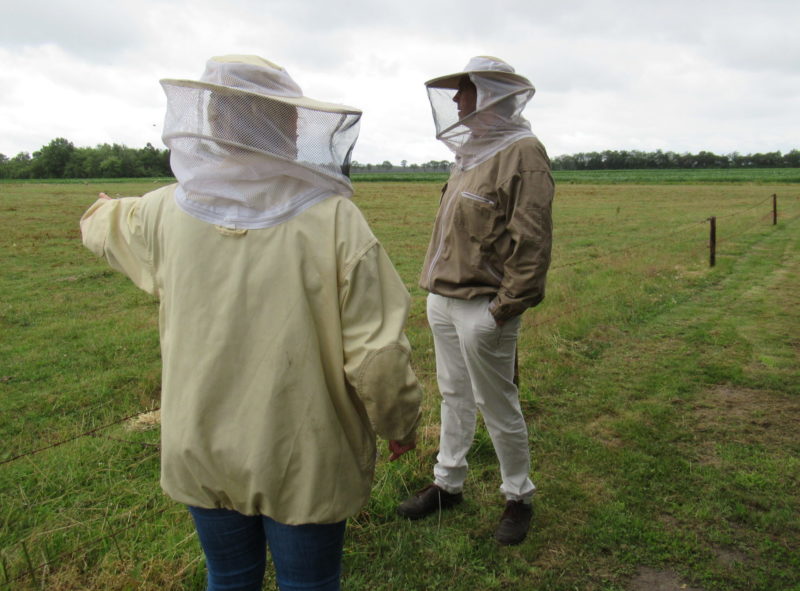
The beekeeper deprecatingly says, ‘Ah, it’s just a hobby. My dad used to do it before me, and I’ve followed in his footsteps.’ But to her own astonishment and delight both her bright and her dark honey won gold medals at the London Honey Awards 2019!
Most of the bees are housed in modern beehives:
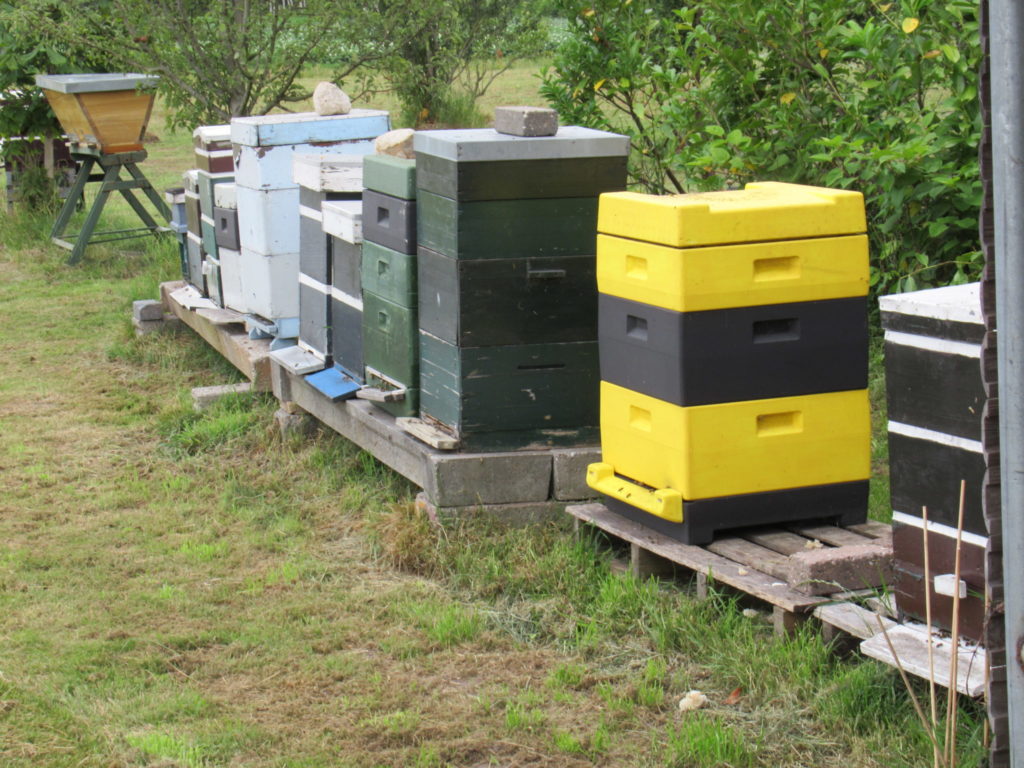
These are far bigger than traditional hives, or skeps, and it is much easier to collect the honey from them. But she also has some traditional skeps, a sort of upside-down baskets. And even a wooden beehive in the shape of a house. It looks a lot like their own beautiful wooden house:
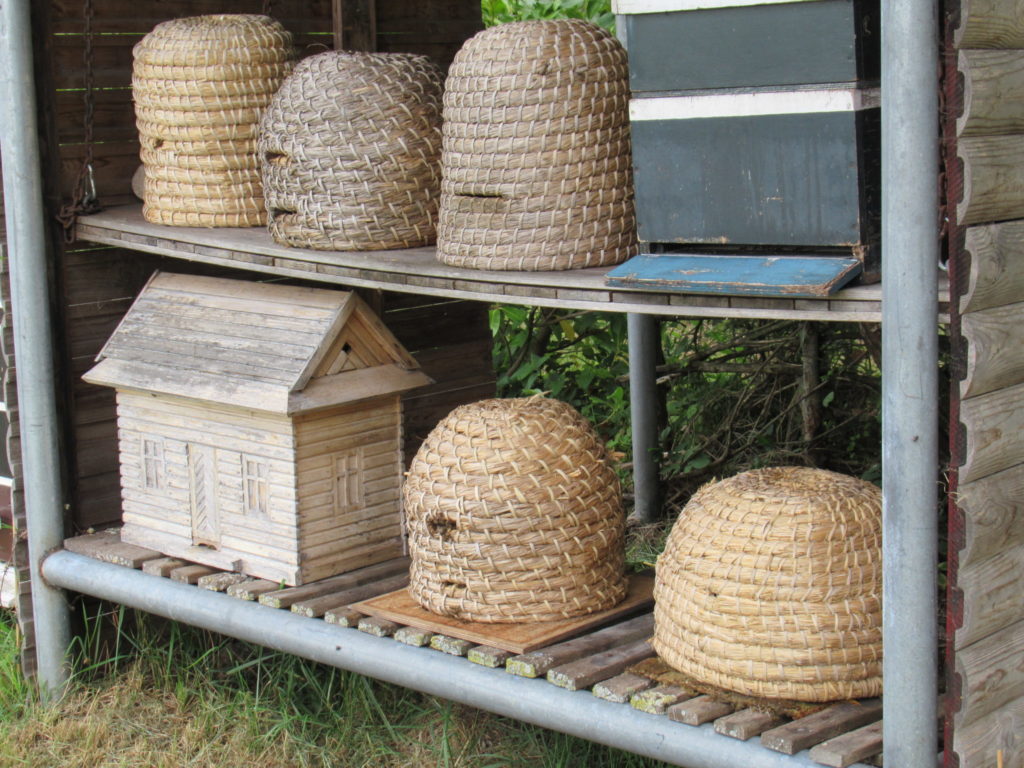
Zooming in on one of the skeps, the bees can be seen coming in and out of the opening:
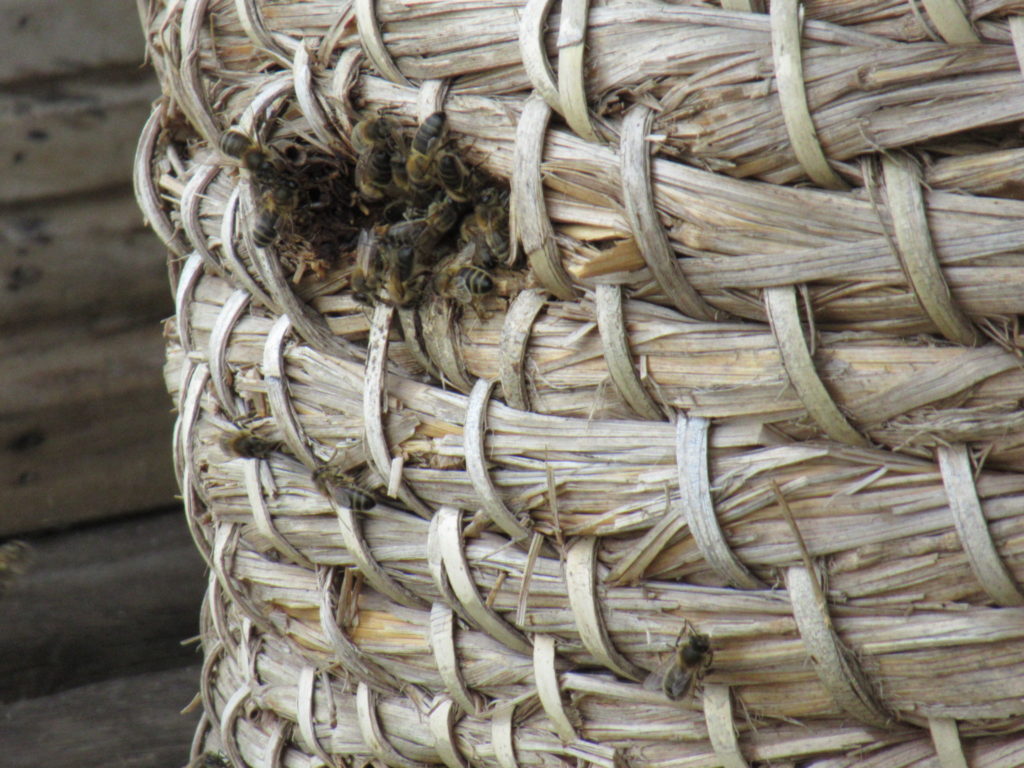
It’s that dark clump at the top left. Can you see them?
This beekeeper isn’t complaining, but behind her words I can hear her worries about the threats her bees (and bees everywhere) face. They’re threatened by the varroa mite, pesticides and the drought caused by climate change. Things like this often give me a feeling of powerlessness. Yes, it’s worrying, but what can we do about such worldwide threats as insignificant individuals? Fortunately, in this case, there are a few easy things we can do to help the bees.
Apart from organic honey in jars, this small family business also produces other bee products, like beeswax candles, lip balm, soap, shampoo and so on. There’s more information on their website.
Well, high time to cycle back and pick some herbs.
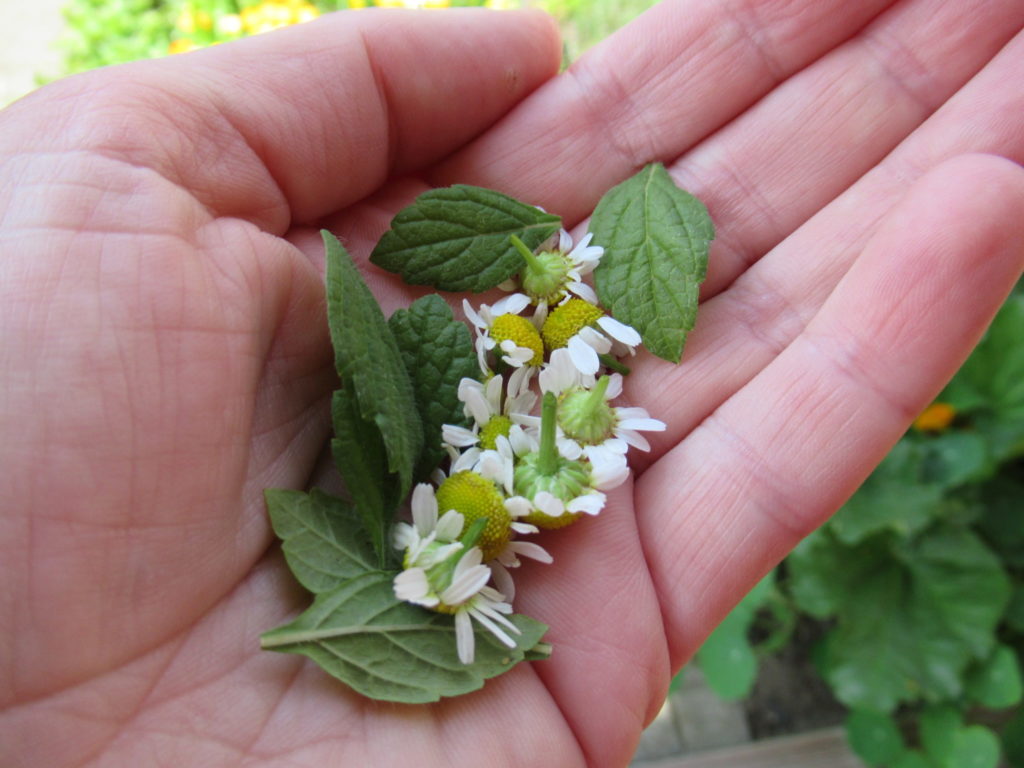
One of my favourite herb tea blends is chamomile and lemon balm. A small handful of chamomile flowers and lemon balm leaves is enough for a cup or two of tea (dried herbs work just as well as fresh ones). I have a small teapot with a built-in strainer, but any pot or mug will do.
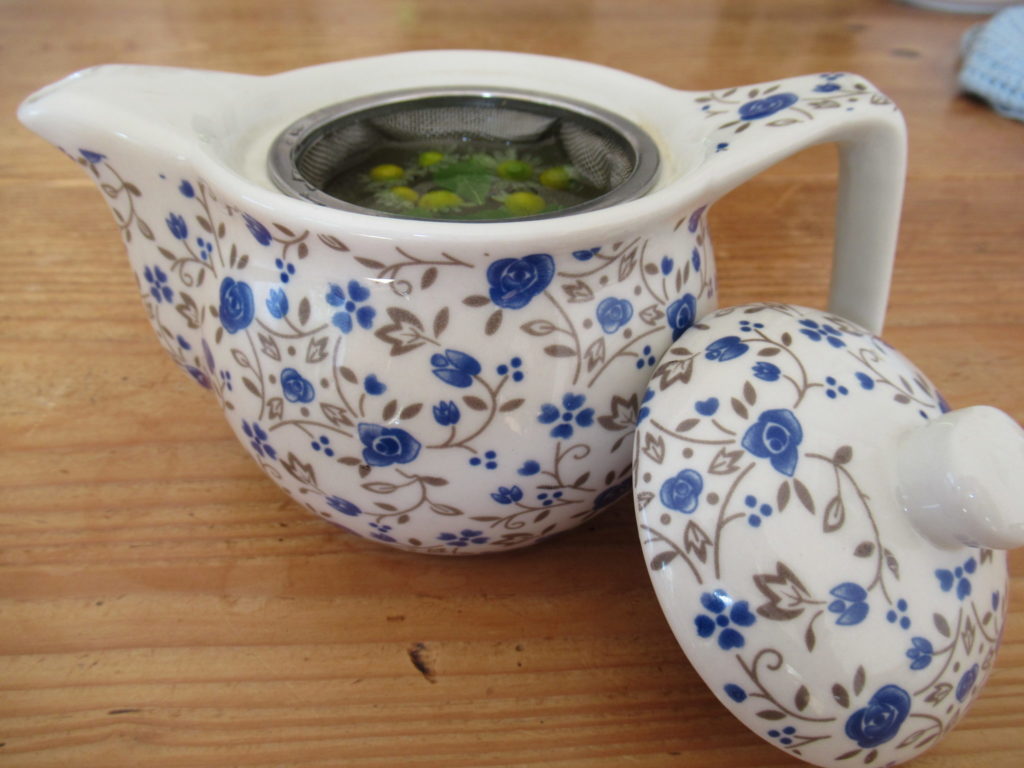
Add honey to taste and enjoy!
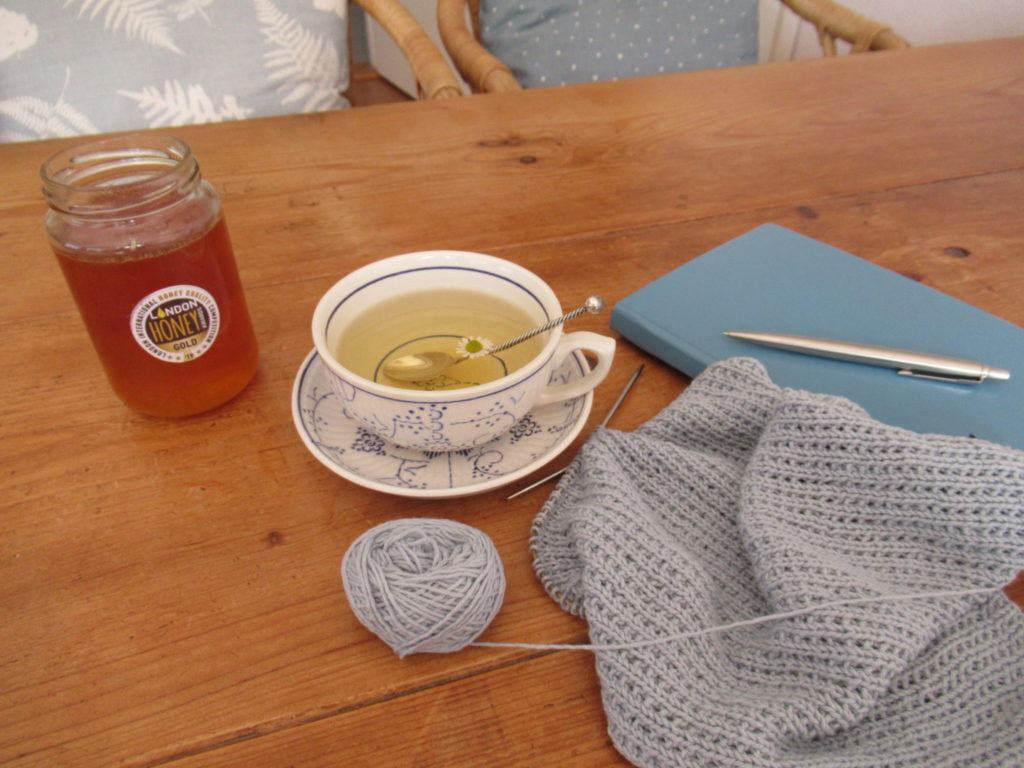
Next to this cup of tea is my first dishcloth in progress. I was skeptical about knitting these (I mean, how twee can you get?), but the enthusiasm of two of my knitting group members made me give them a try. And I must say, I’ve been bitten by the dishcloth-knitting-bug too!
Another favourite is mint tea. There are many varieties of mint. Wat we usually get when we order mint tea at a cafe is Moroccan mint, with a fairly mild and sweet taste. The mint in our garden, peppermint, has a stronger taste. It really is more peppery. Two or three small sprigs straight into a mug make a refreshing drink. I like it even during the very hot weather we’re currently having – I just leave it to cool first.
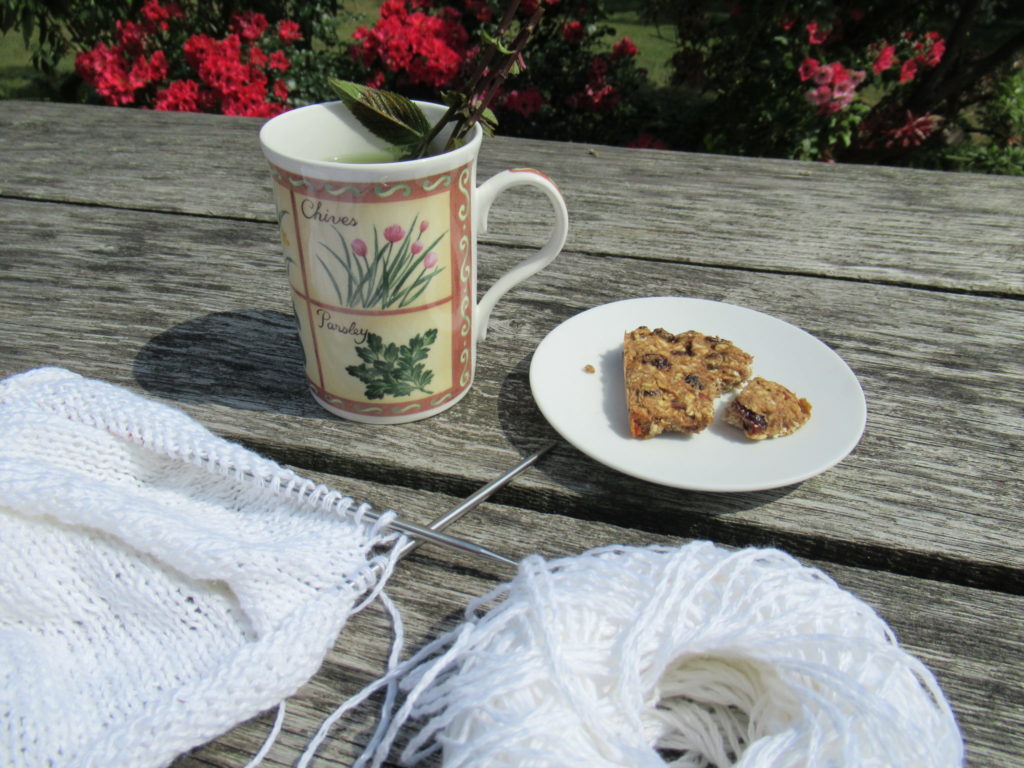
The blindingly white knitting on the needles here is the start of my Sideways Tee. There isn’t much to see yet, but as soon as I’m a little further along, I’ll show you more.
Well, that’s all for today. Thank you for sharing a cup of tea with me!
Balloo Wool Studio
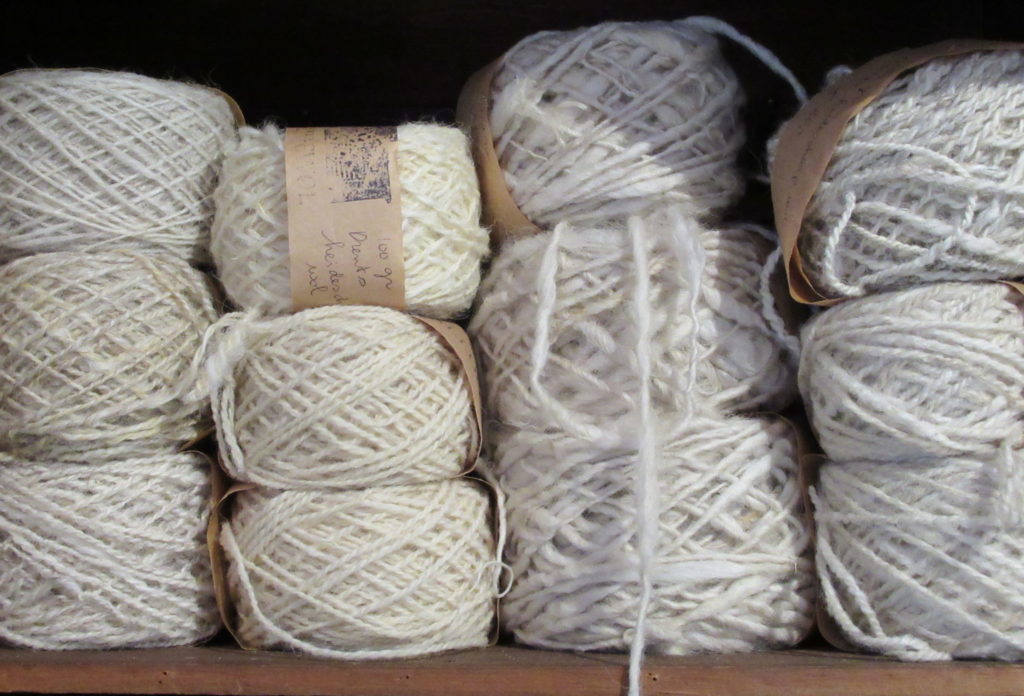
Two days off plus a weekend with few planned activities gave me a lot of uninterrupted knitting time. I spent it knitting my Stay Soft shawl – row upon row of garter stitch. When I’d knit about a third of the shawl, I decided to rip it all back and start again (more about that soon). And while I was knitting more and more rows of garter stitch, my mind was free to roam.
I looked ahead, making plans for summer knitting projects. And I thought about spinning, too. I’ve finished plying the yarn on my bobbins, so my spinning wheel is free to take on a new project. I thought of the Drenthe Heath sheep wool I bought a while ago, waiting to be spun up, which made me think back to the day in April we visited the Shepherds of Balloo. And suddenly I remembered that I was going to write about their Wool Studio, too.
So here we are. My train of thoughts has transported us to Balloo Wool Studio:
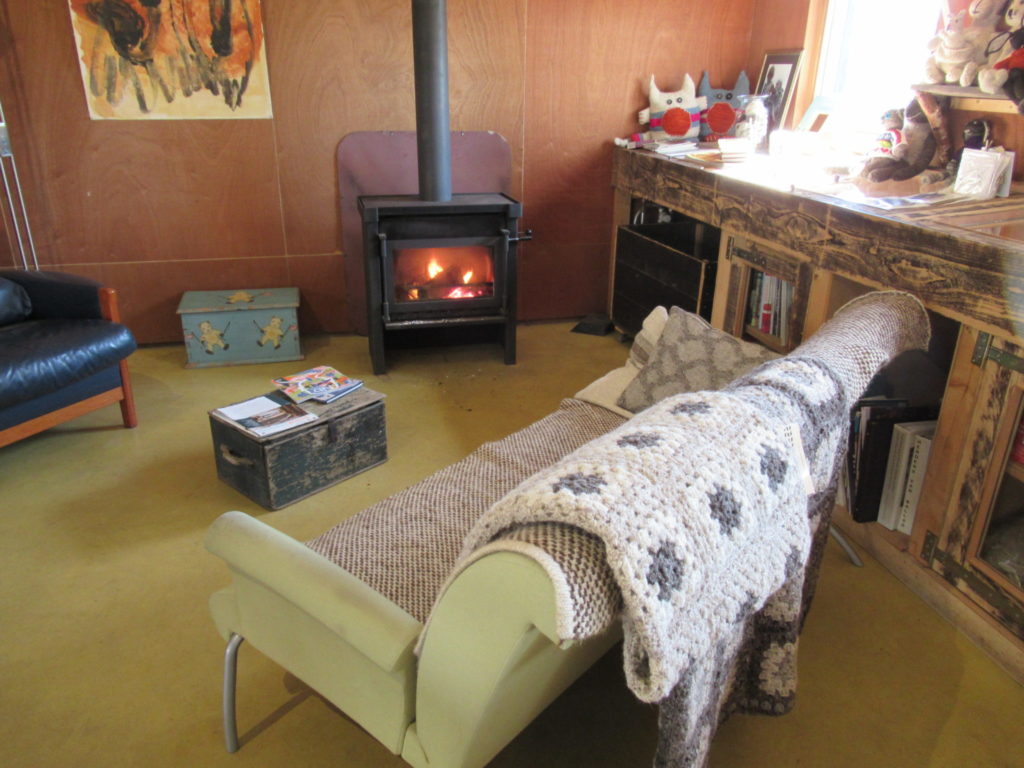
The Wool Studio is housed in a wooden building across from the sheep fold, is open every day of the week, and is run entirely by volunteers. When the weather is nice, tea and coffee are served outside. On chilly days, visitors can warm up inside around the wood stove.
The volunteers have created a really cosy place, with books on the shelves and playthings for the children. And everywhere you look there is wool. Hanks of handspun wool hanging from a thick branch,
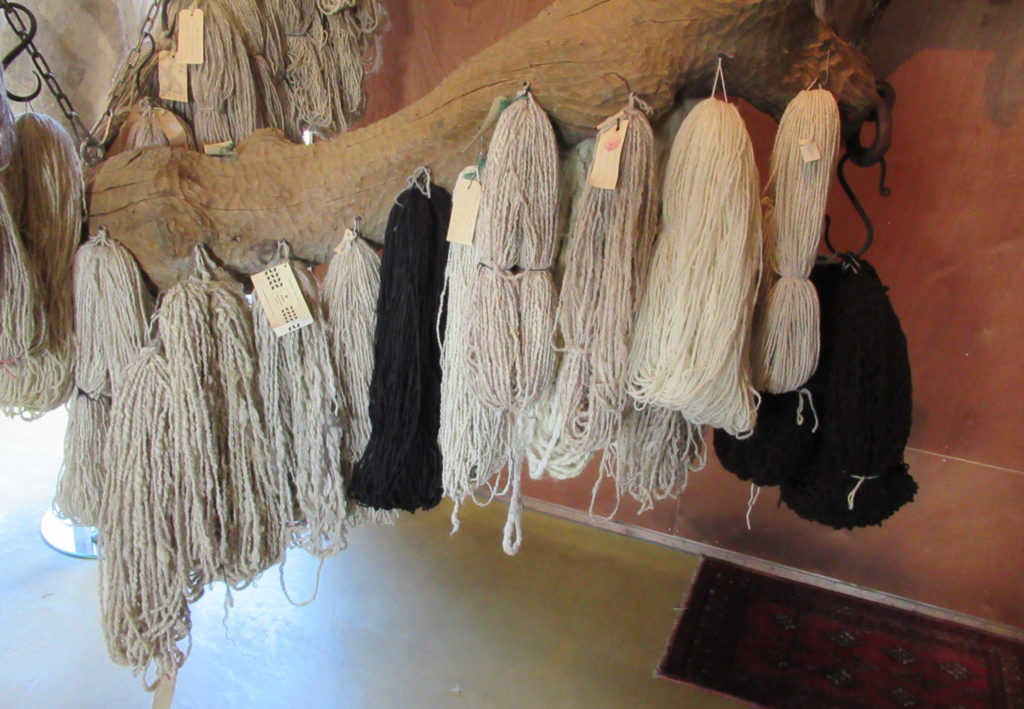
handspun wool on balls, and handspun wool made into blankets, sweaters, shawls, socks and much, much more.
Knowing how long it takes to spin up 100 grams of yarn, let alone an entire fleece, I was amazed by everything I saw. There was so much to see and such a lot of variety. Not just in the type of projects chosen, but also in thickness (or fineness) of the yarn used, and in the techniques.
On the sofa were two crocheted throws, made from grannie squares and thick yarn in various natural colours.
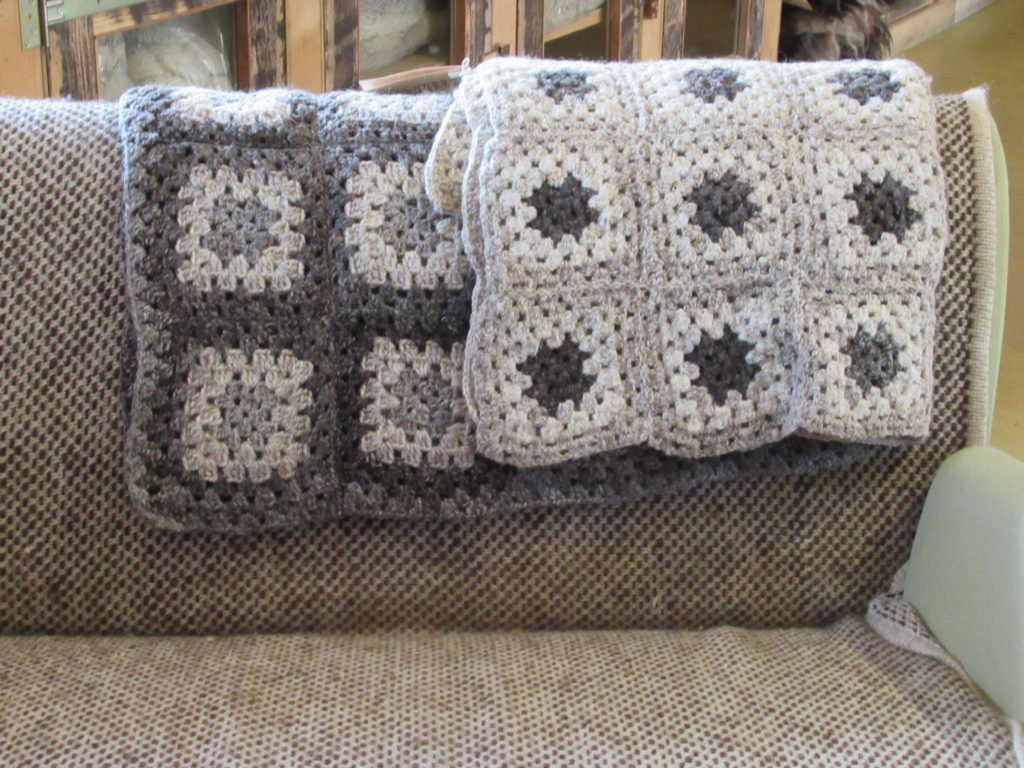
There were stacks of handknit items in a beautiful antique cupboard. Sweaters in all kinds of stitch patterns and a shawl with a knit-in sheep pattern.
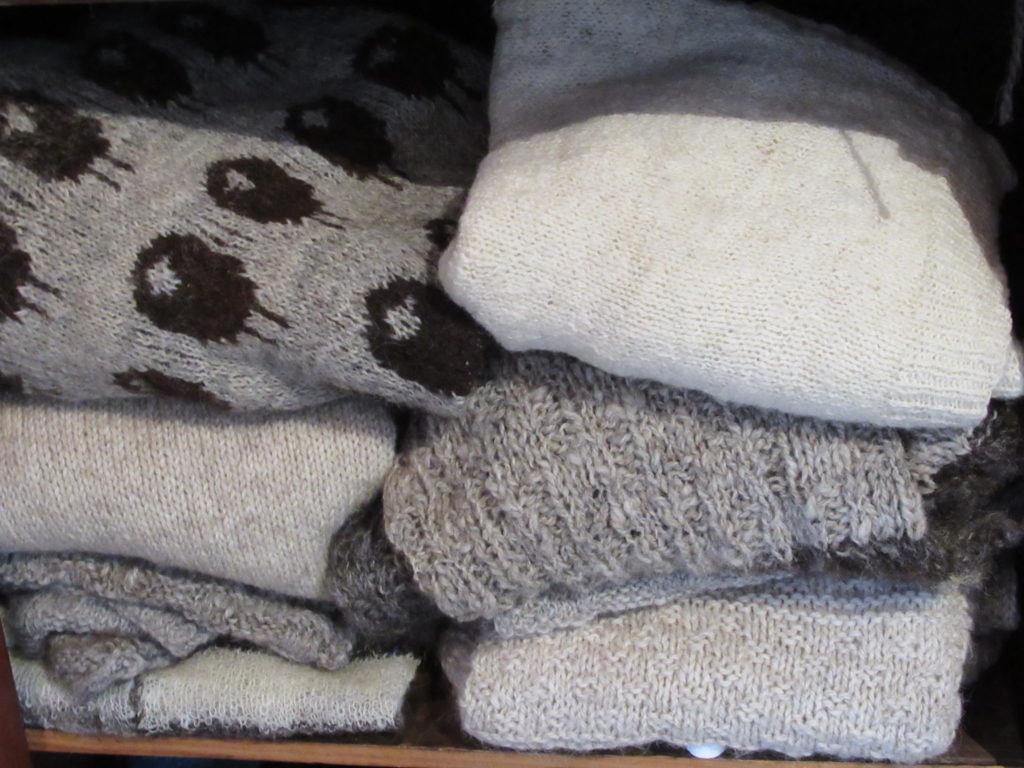
Hanging in front of a window was a narrow scarf that made me look twice. What’s that? It doesn’t look like knitting or crochet. It isn’t woven either. What can it be? Oh, wait a sec, I think it may be bobbin lace.
What a great idea! Especially with the thick thread meandering through it. Here’s a detail:
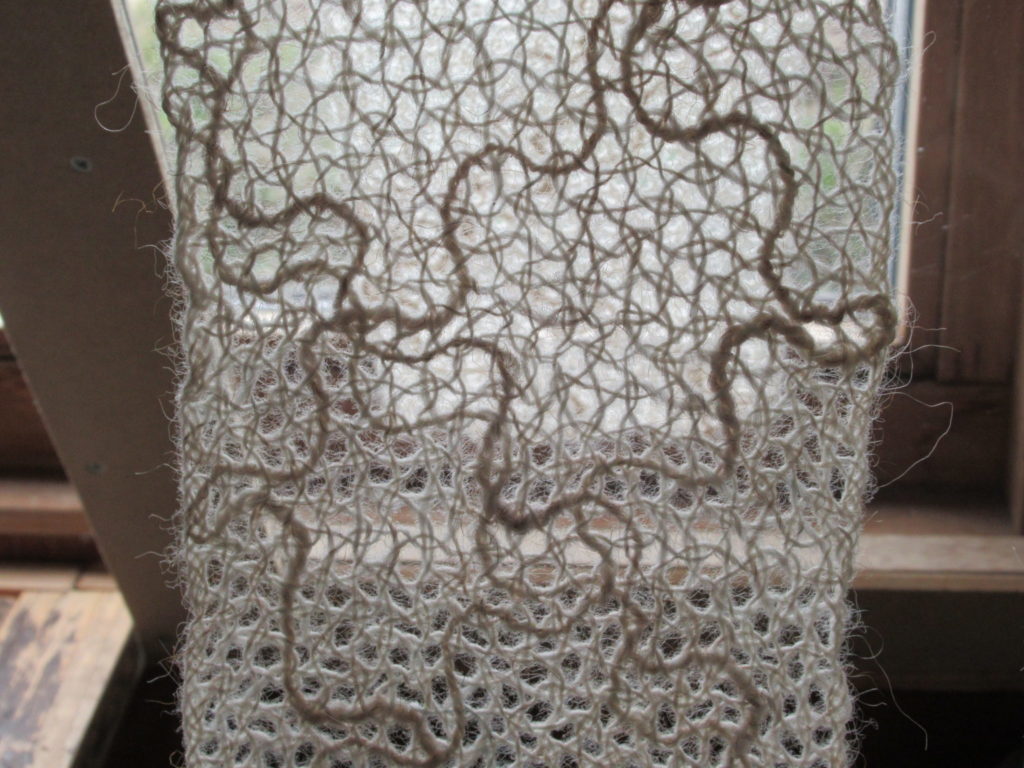
What struck me was that almost everything I saw, was in the natural colours of the Drenthe Heath sheep fleeces. The only exceptions were a few brightly dyed balls of yarn on a shelf and this pair of adorable baby booties, with some green and red accents:
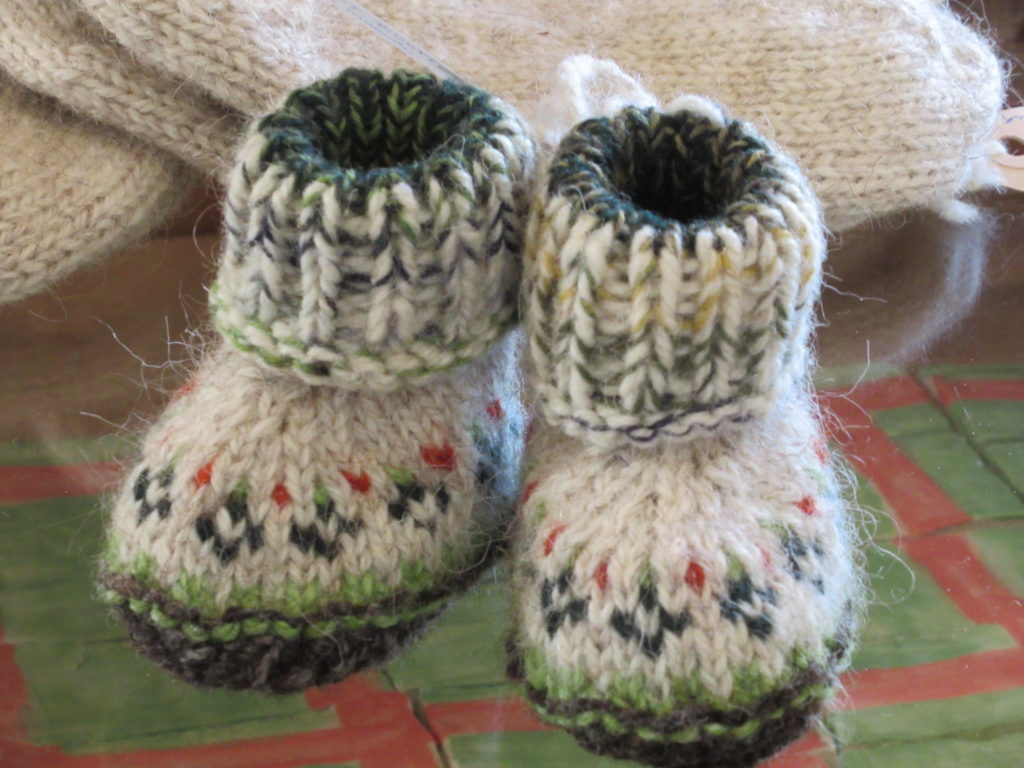
Other than that, everything was in one or more of the shades of white, grey, brown and black the Drenthe Heath sheep have to offer.
I think it’s wonderful what the people at Balloo Wool Studio have done with the fleeces of their flock. It’s so good to see that not all of our local wool is bought up for next to nothing to be shipped to China for low-grade uses.
Now it’s my turn to do something with it, too. As I told you in my previous blog post about The Shepherds of Balloo, I bought some unspun Drenthe Heath sheep wool during my visit – a plastic bag filled with batts of washed and carded wool:
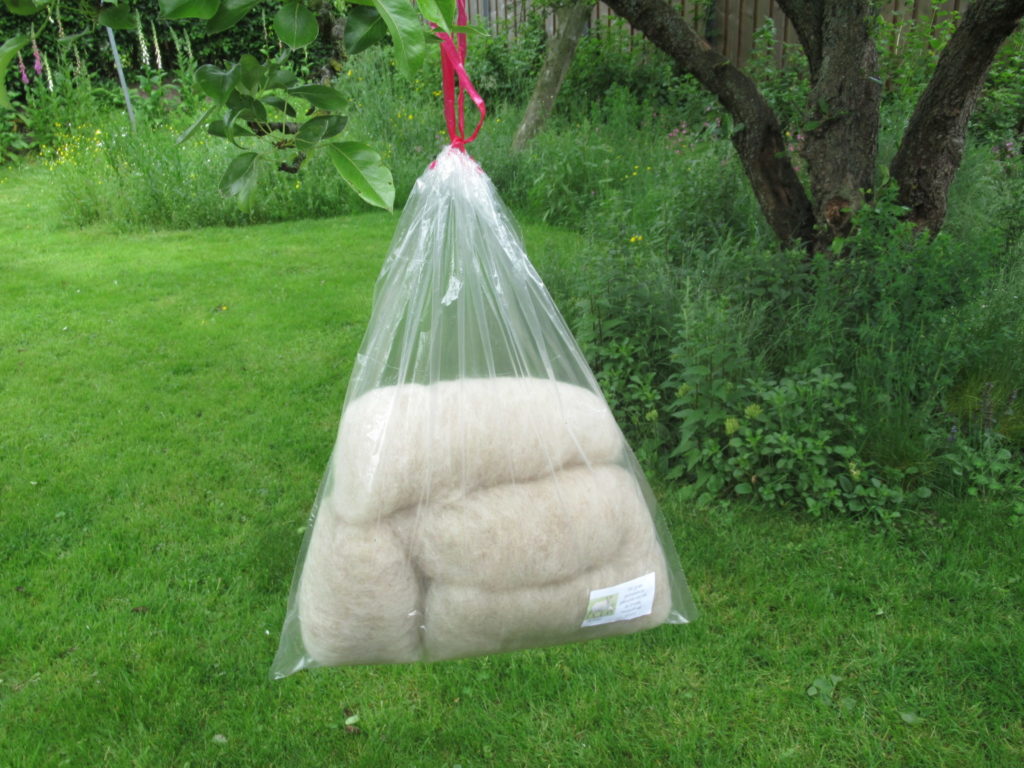
I’m not a terribly productive spinner, so I only bought a small quantity. At a recent crafts event, I met the woman who washed and carded it. But that’s a story for another time…
May Miscellany
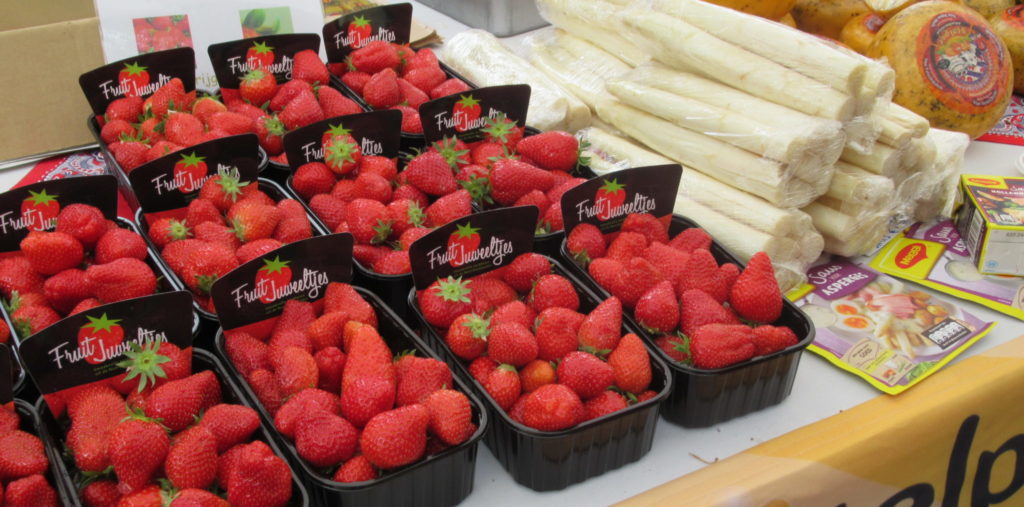
In May…
…all birds their eggs do lay, or so an old Dutch saying goes. But that’s not the only nice thing about the month of May. It’s also the month the vendors at our nearest Farmer’s Market put up their stalls again after their winter break. Visiting this market is a real treat.
The singer who is always there with her guitar, welcomes us with Dolly Parton’s ‘Play a song for me, Apple Jack, Apple Jack’, and other old favourites. The music creates a great atmosphere around the twenty or so stalls.
We always buy a punnet of strawberries. These are so much tastier than the ones from the supermarket. And sometimes we buy some delicious handmade goat’s cheese, too.
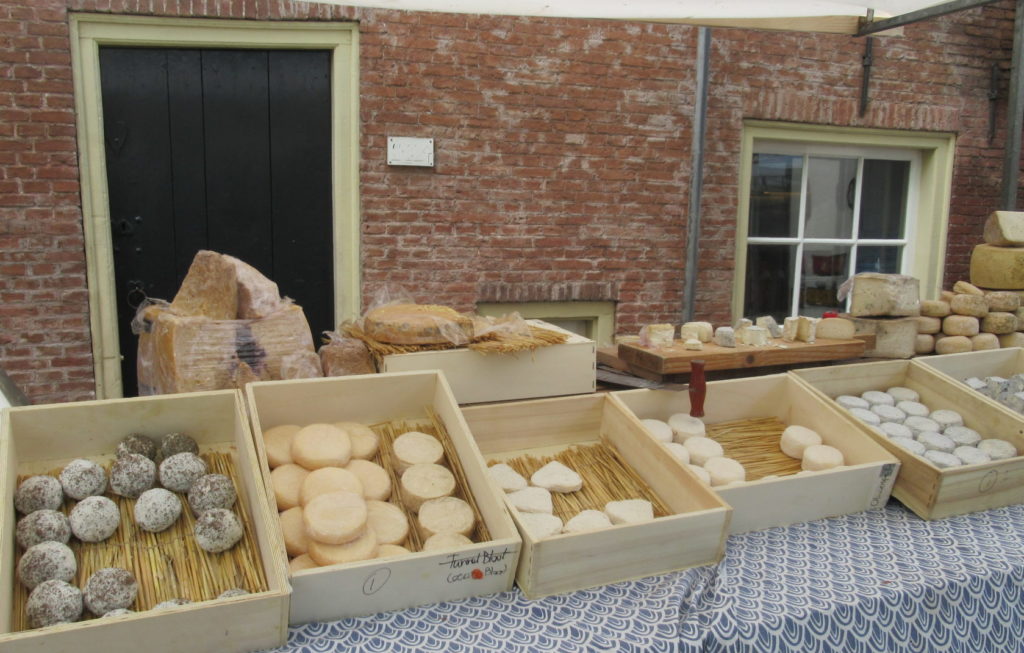
New to the market this year is a lady with felt objects, like hats and scarves, as well as handspun yarns. I wouldn’t immediately know what to do with her riotously colourful skeins, as I usually choose quieter yarns (maybe combine them with a matching solid colour?), but they’re a joy to look at.
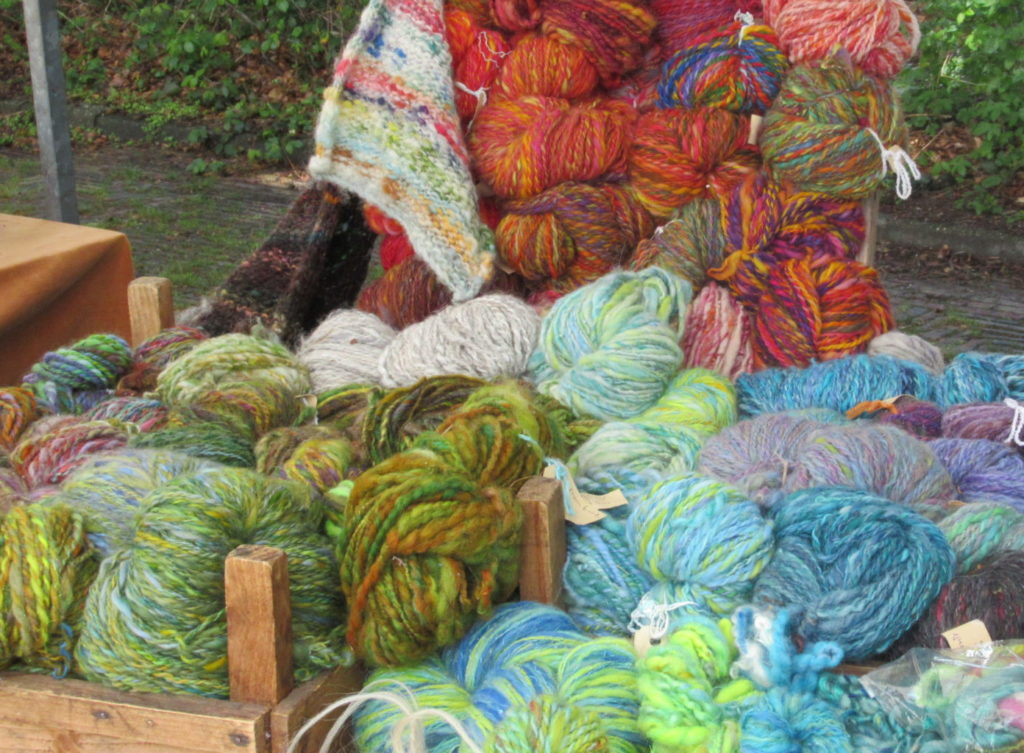
I love chatting with other crafters about the things they make, about what moves and inspires them, the techniques they use, and so on. So I asked the new lady about the ‘fleece’ hanging at the back of her stall. I’ve seen fleeces like this before, felted onto a woollen background, but always made from the wool of just one sheep.
This crafter, however, combined wool from different sheep breeds to create the fleece in the photo below. She mentioned at least six breeds. (But I don’t remember a single one. Sorry, my brain was also having some time off.) It shows beautifully how greatly sheep’s wool can vary.
Apart from the colours, ranging from white through grey and russet to almost black, the structure of the wool varies too. There are some long straight locks, some fluffy, wavy bits of wool, and some very tight curls.
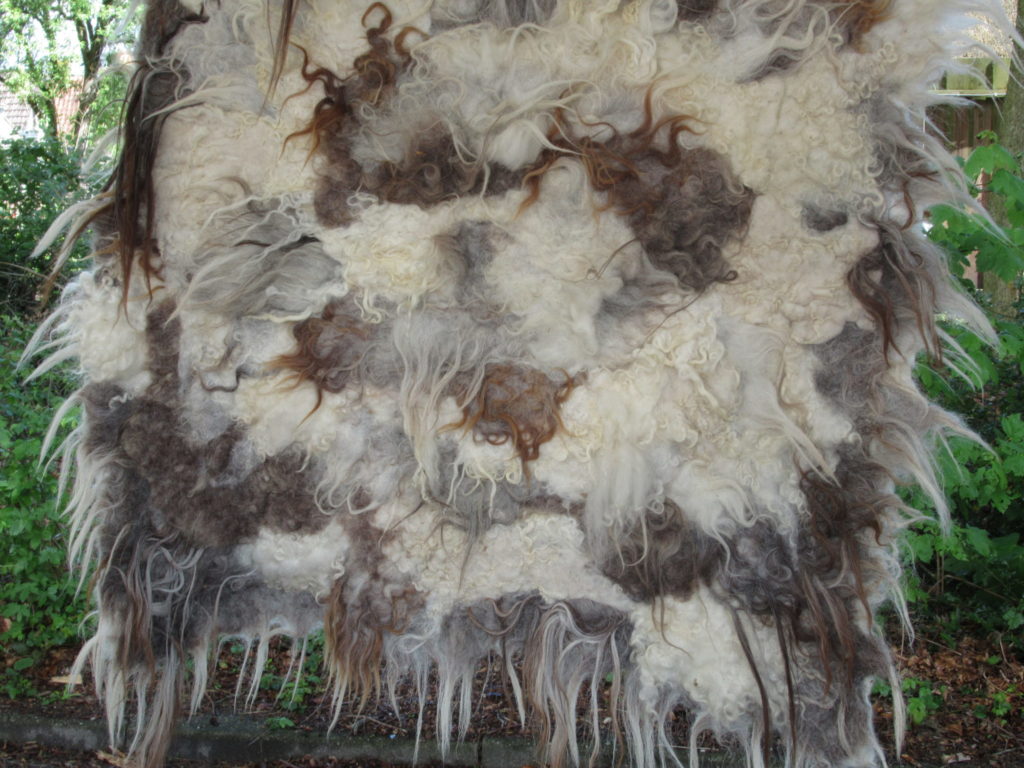
Birds
Now on to those birds laying their eggs in May. Our nest boxes are often used by blue and great tits (picture below), but I’m not sure who is using which nest box this year. We don’t want to disturb the birds, so we don’t open the boxes to look what’s inside. I’ll just have to spend more time in the garden watching flight movements.
In our beech hedge there’s a blackbird’s nest – or perhaps even two. And just above our bedroom window there are two house martin’s nests. These were first occupied by squatters – two families of cheeky sparrows, whose chicks have already fledged. I’ve seen the parents feeding small pieces of peanut from our feeder to their young.
After the sparrow chicks fledged, the house martins returned from the south. They set about cleaning out and repairing their nests straightaway. I can’t look inside to see whether there are any eggs in them, but I’m pretty sure both nests are back in use.
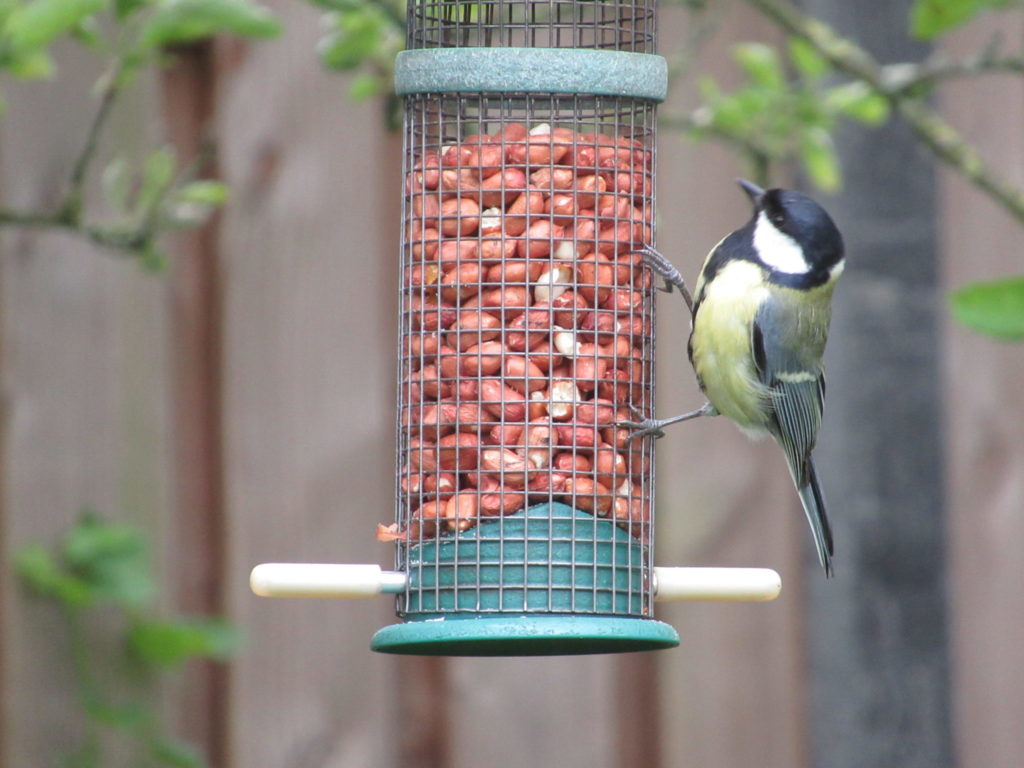
And the winner is…
I started the month of May with a blog post about a gift of yarn from a friend. In it, I asked for your help in choosing between two patterns I had in mind, called ‘Stripe Study’ and ‘Stay Soft’. I have now counted the votes, and Stay Soft came out on top. It got an overwhelming majority of the votes: 70% for Stay Soft against 30% for Stripe Study.
Now you may think, ‘Huh, but there was only one person who left a comment, voting for Stay Soft! How did you arrive at these percentages?’ Well, many people seem to be hesitant about leaving a comment on a blog. I quite understand. I often read blogs without commenting, too. That’s absolutely fine. What I got instead were phone calls, emails and face-to-face reactions.
So, Stay Soft it is going to be. I’ve already made a start.
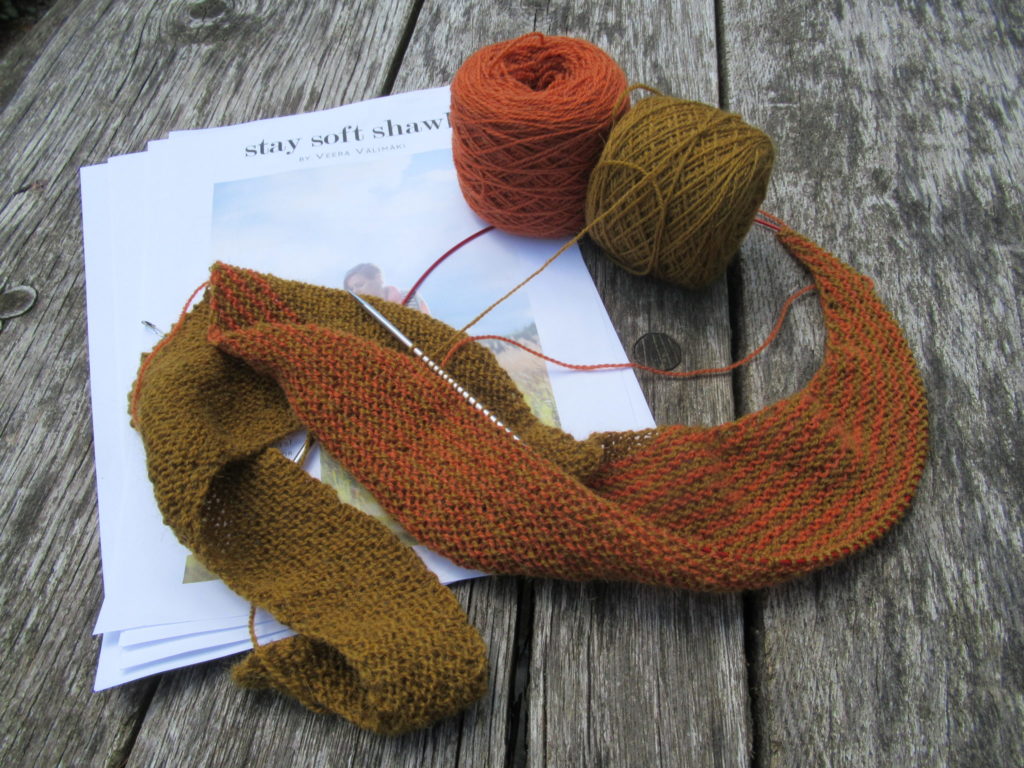
A funny thing that struck me, was that most knitters voted for Stay Soft, while most non-knitters voted for Stripe Study. Why would that be? We talked about this in the knitting group I belong to, and one of the members said: ‘It looks like non-knitters focus more on the end product, and knitters more on the knitting process.’ Isn’t that an interesting thought?
Thank you to all of you who helped me decide.
Knitting at the Sugar Factory
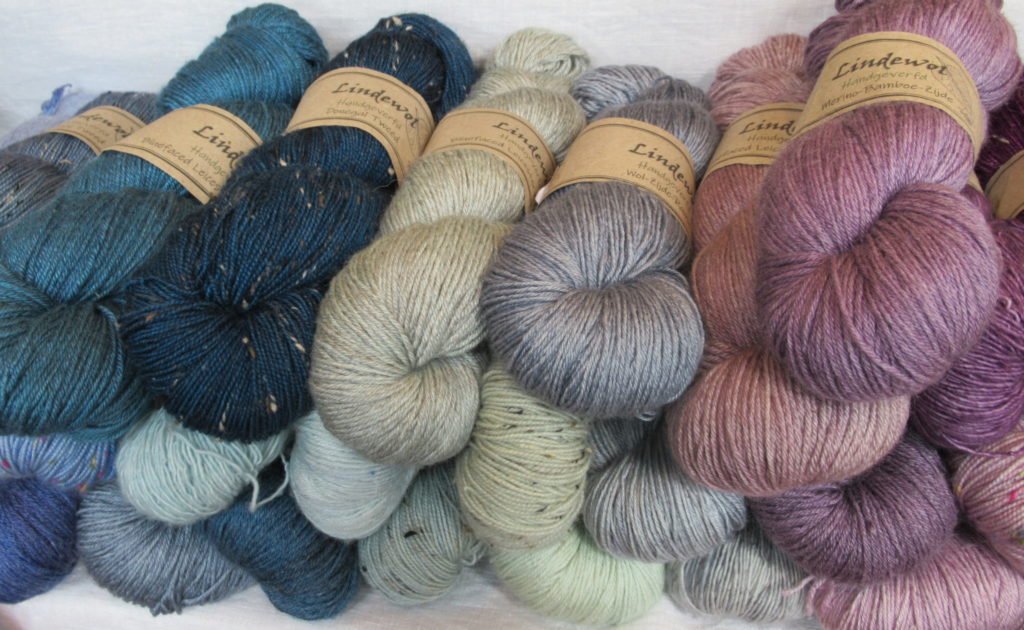
Last Friday I took the 8 o’clock train to Groningen, to visit the Northern edition of the Knitting and Crochet Days. I’d planned to add a few centimeters to my take-along project, a scarf in 4 shades of green, or perhaps even finish it. But after knitting less than a row, I discovered that I’d dropped a stitch quite a few rows down. I hadn’t brought a crochet needle to fix it, and as this particular yarn (Rowan’s ‘Kid Silk Haze’) is notoriously difficult to unravel, there was nothing for it but to stuff my knitting back into its bag.
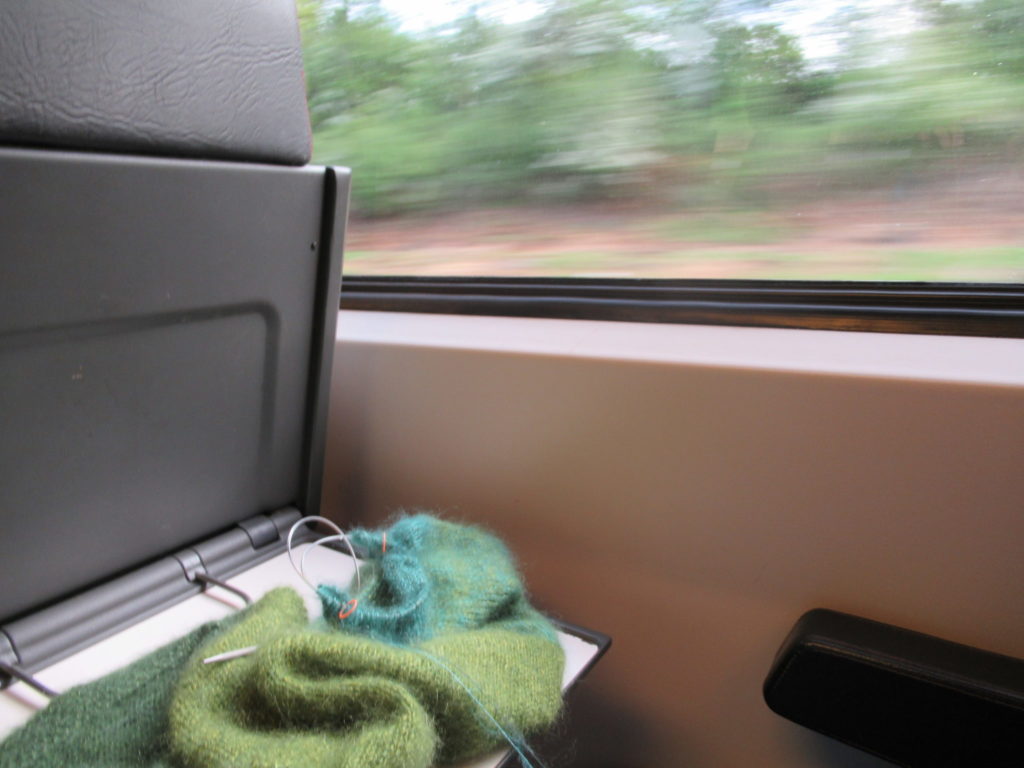
Oh well, just looking out the window at the familiar landscape rushing by was very nice too. Along the route I met up with a friend, and together we arrived at the Old Sugar Factory, where the fair was held.
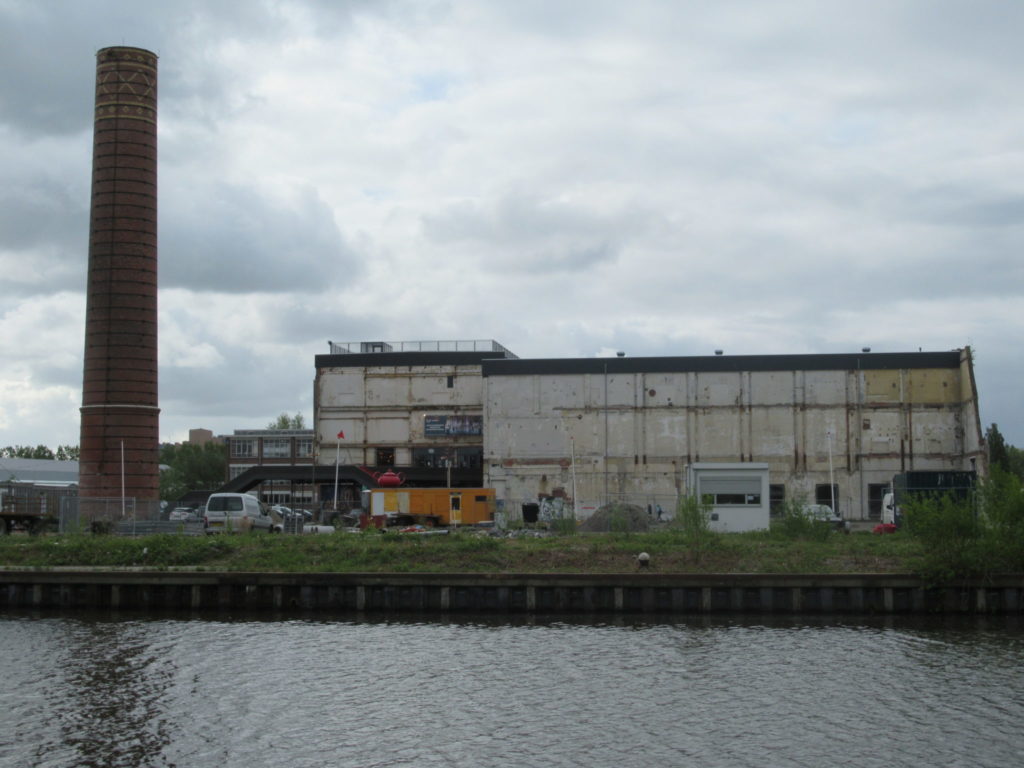
Sugar production is an important industry in Groningen, a city surrounded by large fields of sugar beets. I still remember the sweet and musty smell wafting through the air from September to January from the time I studied here. What you see on the photo above is only part of the original building – the rest of the factory has been demolished.
The rough edge of a partly demolished wall frames the window of the trendy in-house café, where my friend and I sat drinking endless mugs of tea.
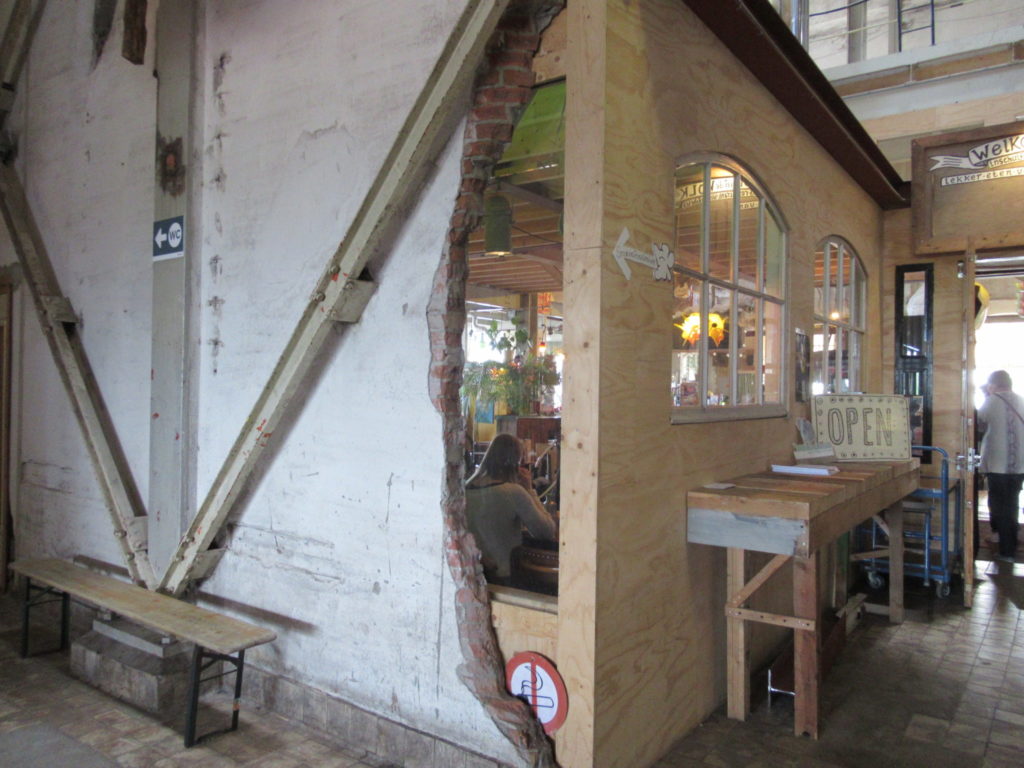
For me, this edition of the Knitting and Crochet Days was very much a social thing, with lots of familiar faces from the North of the Netherlands, the region where I grew up.
Queuing for our tickets, we hugged our first knitting friend. The next familiar face was the cousin I am forever grateful to for teaching me my very first knitting stitches. And then there was a knitter whose blog about her knitting, walks with her dog and life in general I’ve been following for over ten years. And after that…
No, that’s quite enough socialising. Let’s get back to what we’re here for – knitting materials and inspiration. The fair as a whole was rather underwhelming, to be frank. But, focusing on the positives, some stall holders had outdone themselves with beautiful displays of yarns and knitting projects.
Here’s an impression (click on images to enlarge):
My favourite of all was Atelier Lindelicht, with its rainbow of hand-dyed colours:
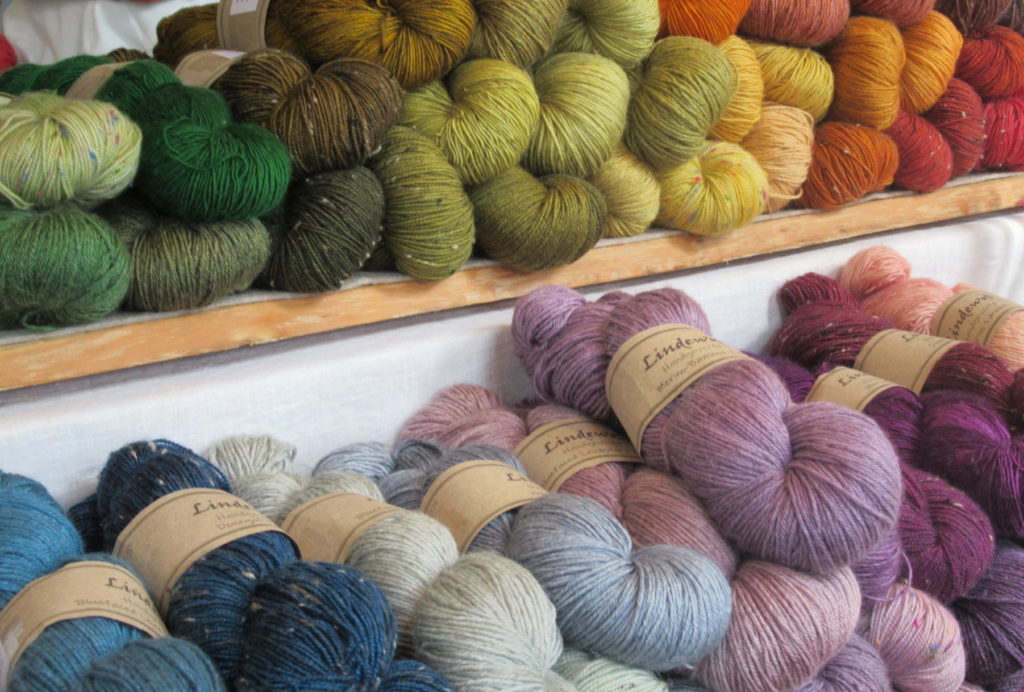
The owner, Marianne, lives in a neighbouring village. She started out as a designer of felt ornaments, but now also dyes yarns in very small batches. (Sadly for those of you living further away, she only sells her yarns at fairs and markets.) What I like about her yarns is the quality of the materials and the depth of her beautiful jewel-like colours.
My eyes are drawn especially to her blues, pinks and purples (see the picture at the top of this post, too).
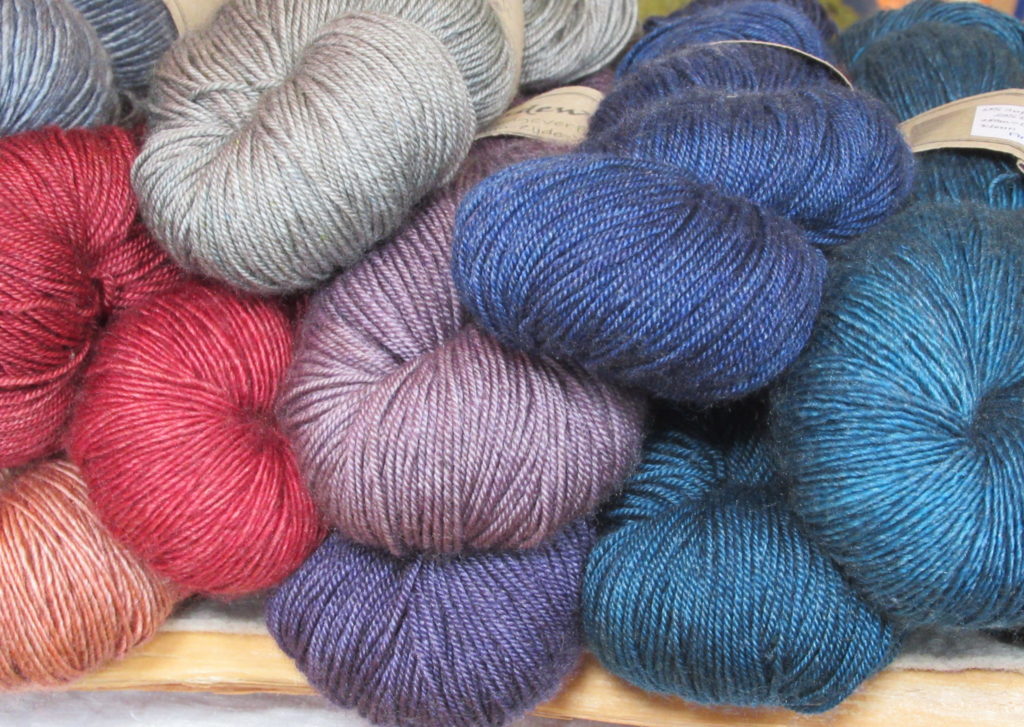
This time I didn’t buy any of her lovely skeins, though, as there are several in my stash waiting to be knit up. In fact I didn’t buy any yarn at all at this fair.
What I did buy was a set of interchangeable circular knitting needles:
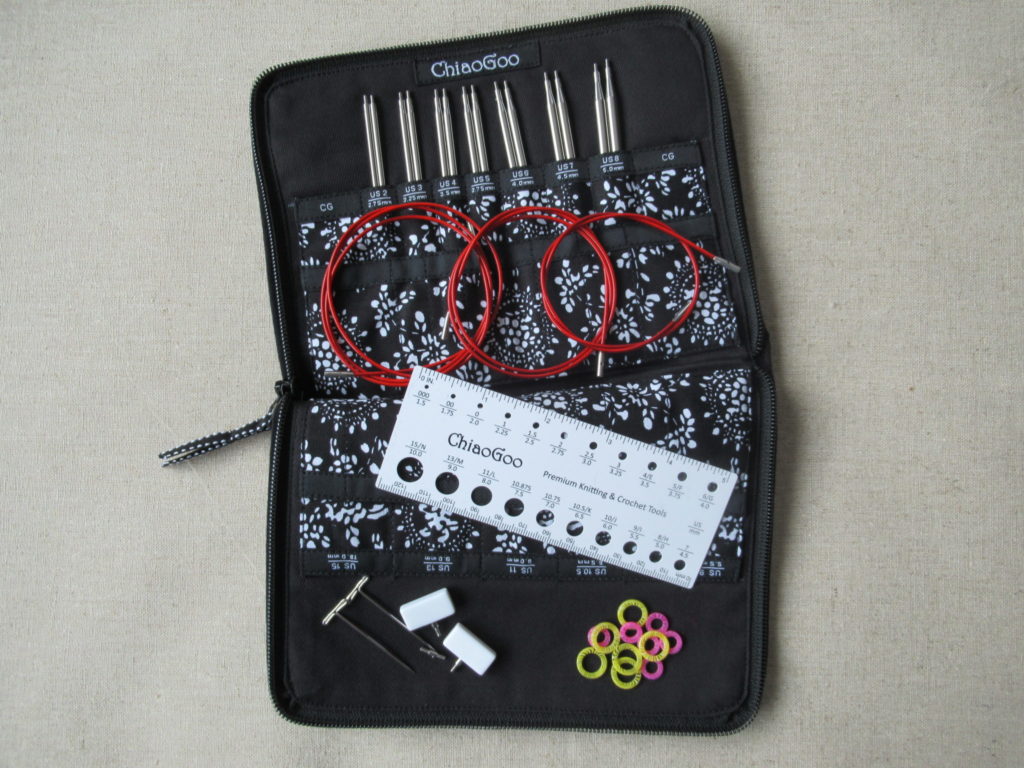
I already have one exactly like it at home, so why buy another one? Well, I use some of these needles almost every day, and sometimes need more than one of the same size at the same time.
The set (Twist Red Lace small) contains 7 pairs of 13 cm long needle tips ranging in size from 2.75 to 5.0 mm, as well as three cables in different lengths. There are also 2 end stoppers (the white rectangular things), 2 keys (for fastening the tips to the cables) and a cable connector, 12 stitch markers in 2 different sizes, and a needle gauge (the white ruler).
It’s quite an investment, but I know that I’ll enjoy using it for years to come.
Before we knew it, it was time to go home. One last picture of some of the inevitable graffiti on the factory building:
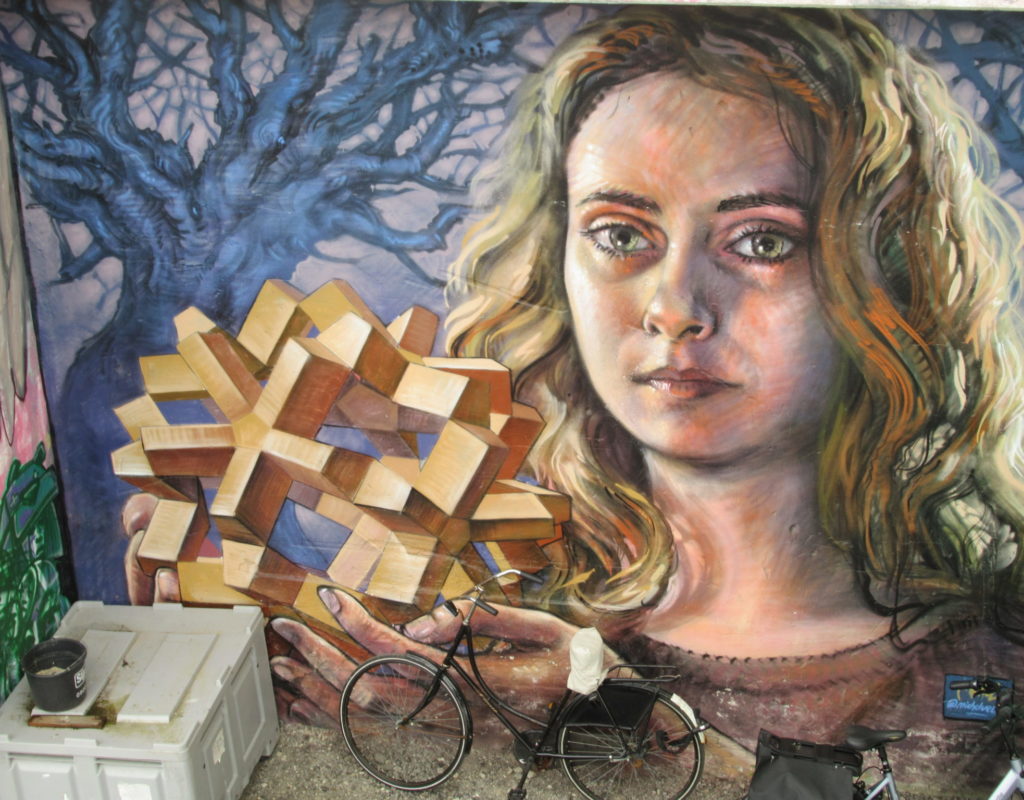
The bicycle parked against it, gives an idea of the size of this work of art.
To be honest, I felt slightly out of my comfort zone in this industrial setting. I didn’t name my website for the blackbird (Turdus merula in Latin) for nothing. We (the blackbird and I) are birds of woodlands, gardens and other green spaces. I tried very hard to approach this days’ urban surroundings with an open mind. And my mind could really appreciate the raw aesthetics, but my heart… not so much.
My heart said: Ah, so happy to be back in my natural habitat!
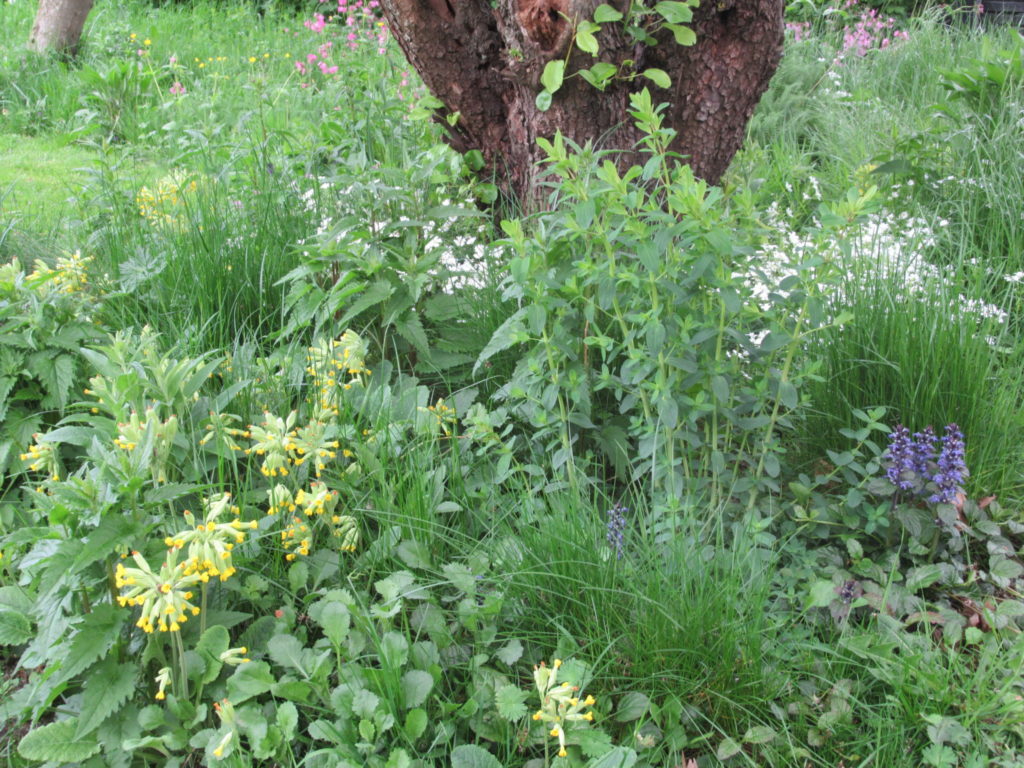
Note: This post isn’t sponsored in any way. I just write about things I like because I like them.
